India’s Startup Revolution

- 15 Jan 2025
Context
India has solidified its position as one of the most dynamic startup ecosystems globally, emerging as a hub for innovation, entrepreneurship, and technological progress. However, realizing its ambition of becoming the top startup ecosystem requires addressing critical challenges and leveraging available opportunities.
Current Landscape of Indian Startups
Growth and Innovation
India ranks as the third-largest startup ecosystem in the world, following the U.S. and China. As of January 15, 2025, over 1.59 lakh startups have been officially recognized by DPIIT, with more than 120 attaining unicorn status (valuation exceeding $1 billion).
Investment Trends
Despite economic fluctuations, India's startups continue to attract significant investments. In 2022, venture capitalists infused $25 billion into the ecosystem, reaffirming India’s position as a preferred destination for global investors. Although there was a slowdown in 2023, domains like Software as a Service (SaaS) and climate tech continue to secure substantial funding.
Government Support
India’s startup-friendly policies, including Startup India, Digital India, and Atmanirbhar Bharat, have created an enabling environment. Notable initiatives include:
- Tax incentives, faster patent approvals, and regulatory relaxations.
- The launch of a ?10,000 crore Fund of Funds for Startups (FFS) in 2023 to improve capital accessibility.
- The Bharat Startup Knowledge Access Registry (BHASKAR) to streamline collaboration among startups and investors.
Regional Growth
- Tier II and III Expansion: Nearly 50% of startups are now based in emerging hubs such as Indore, Jaipur, and Ahmedabad.
- Tamil Nadu: The state boasts a $28 billion startup ecosystem, growing at 23%. Chennai alone houses around 5,000 startups, significantly contributing to employment generation.
- Kerala: With a $1.7 billion startup ecosystem, Kerala exhibits a compound annual growth rate of 254%, emphasizing cost-effective tech talent hiring.
Key Challenges Faced by Startups
1. Funding Constraints
The global economic downturn, coupled with rising interest rates, has limited venture capital inflows, resulting in layoffs and operational cutbacks.
2. Regulatory and Compliance Barriers
Despite government support, startups grapple with complex tax structures, evolving data protection laws, and stringent compliance requirements, including ESOP taxation policies.
3. Scaling and Market Adaptability
Many startups struggle with operational inefficiencies, limited market penetration, and inadequate infrastructure, hampering growth potential.
4. High Failure Rate
Approximately 90% of Indian startups fail within five years due to poor product-market fit, lack of financial planning, and insufficient adaptation to market needs.
5. Talent Shortages
India faces stiff competition in acquiring skilled professionals in areas like AI, cybersecurity, and machine learning, making retention increasingly difficult amid economic uncertainties.
Strategic Measures to Strengthen India’s Startup Ecosystem
1. Enhancing Policy Frameworks
- Simplified Regulations: Streamline startup registration, funding approvals, and international business operations.
- IP Protection: Strengthen intellectual property laws to boost R&D investment.
- Sector-Specific Initiatives: Develop targeted policies for AI, deep tech, healthcare, and green technologies.
2. Expanding Funding Access
- Encouraging Domestic Investment: Leverage pension and sovereign wealth funds to invest in startups.
- Public-Private Partnerships: Foster large-scale government-industry collaboration to finance emerging ventures.
- Decentralized Funding: Expand angel investor networks and micro-investment opportunities, particularly in Tier II and III cities.
3. Building Robust Infrastructure
- Tech Parks and Incubation Centers: Establish state-of-the-art facilities with mentorship programs.
- Improved Digital Connectivity: Ensure high-speed internet access in underserved regions.
- Enhanced Logistics and Supply Chains: Strengthen infrastructure to support startup scalability.
4. Developing a Skilled Workforce
- STEM and Entrepreneurial Education: Introduce curriculum enhancements in technical and business disciplines.
- Upskilling Programs: Collaborate with industry leaders to train professionals in high-demand skills.
- Diversity and Inclusion: Promote initiatives encouraging women and marginalized communities in entrepreneurship.
5. Fostering Innovation and Risk-Taking
- Strengthened R&D Funding: Increase allocations to universities and private research sectors.
- Encouraging Entrepreneurship: Reduce societal stigma surrounding startup failures to promote risk-taking.
- Leveraging Domestic Challenges: Address local issues like climate change and urbanization through innovation.
6. Expanding Global Reach
- International Collaborations: Partner with foreign accelerators and governments.
- Ease of Cross-Border Trade: Simplify export and import regulations for startups.
- Engaging the Indian Diaspora: Encourage successful overseas entrepreneurs to mentor and invest in Indian startups.
7. Advancing Sustainability Goals
- Green Tech Promotion: Support startups focusing on renewable energy and circular economy initiatives.
- Eco-Friendly Incentives: Offer financial support to ventures aligning with sustainability targets.
- Inclusive Growth Strategies: Expand agritech, edtech, and health-tech startups in rural areas, supporting platforms like the Women Entrepreneurship Platform (WEP) by NITI Aayog.
Building a Resilient Digital Economy
To fortify India's digital economy, startups should leverage existing infrastructure like UPI and Aadhaar while capitalizing on emerging technologies such as AI, 5G, and blockchain. A robust cybersecurity framework and data protection policies will be essential to ensure investor confidence.
Government Extends Special Subsidy on DAP

- 03 Jan 2025
In News:
The Indian government has decided to extend the special subsidy on Di-Ammonium Phosphate (DAP) fertilizer for another year, a decision aimed at stabilizing farmgate prices and addressing the challenges posed by the depreciation of the Indian rupee.
Key Government Decision
- Extension of Subsidy: The Centre has extended the Rs 3,500 per tonne special subsidy on DAP from January 1, 2025 to December 31, 2025.
- Objective: This extension aims to contain farmgate price surges of DAP, India’s second most-consumed fertilizer, which is being impacted by the fall in the rupee's value against the US dollar.
Fertilizer Price Dynamics and Impact
- MRP Caps on Fertilizers: Despite the decontrol of non-urea fertilizers, the government has frozen the maximum retail price (MRP) for these products.
- Current MRPs:
- DAP: Rs 1,350 per 50-kg bag
- Complex fertilizers: Rs 1,300 to Rs 1,600 per 50-kg bag depending on composition.
- Current MRPs:
- Subsidy on DAP: The subsidy includes Rs 21,911 per tonne on DAP, plus the Rs 3,500 one-time special package.
- Impact of Currency Depreciation:
- The rupee's depreciation has made imported fertilizers significantly more expensive.
- The landed price of DAP has increased from Rs 52,960 per tonne to Rs 54,160 due to the rupee falling from Rs 83.8 to Rs 85.7 against the dollar.
- Including additional costs (customs, port handling, insurance, etc.), the total cost of imported DAP is now Rs 65,000 per tonne, making imports unviable without further subsidy or MRP adjustments.
- The rupee's depreciation has made imported fertilizers significantly more expensive.
Industry Concerns and Viability Issues
- Import Viability:
- Fertilizer companies face significant cost pressures due to rising import prices and the current MRP caps.
- Without an increase in government subsidies or approval to revise MRPs upwards, imports will be unviable.
- Even with the extended subsidy, companies estimate a Rs 1,500 per tonne shortfall due to currency depreciation.
- Stock Levels and Supply Challenges:
- Current stock levels for DAP (9.2 lakh tonnes) and complex fertilizers (23.7 lakh tonnes) are below last year's levels.
- With inadequate imports, there are concerns about fertilizer supply for the upcoming kharif season (June-July 2025).
Government’s Strategy and Fiscal Implications
- Compensation for Imports:
- In September 2024, the government approved compensation for DAP imports above a benchmark price of $559.71 per tonne, based on an exchange rate of Rs 83.23 to the dollar.
- With the rupee falling below Rs 85.7, these previous compensation calculations have become outdated.
- Fiscal Impact:
- The extended subsidy will cost the government an additional Rs 6,475 crore. Despite this, political implications of raising the MRP are minimal, as only non-major agricultural states are facing elections in 2025.
Future Outlook and Priorities
- Immediate Priority: The government’s primary concern is securing adequate fertilizer stocks for the kharif season, focusing on ensuring sufficient imports of both finished fertilizers and raw materials.
- Balancing Factors: The government will need to navigate the complex balance of maintaining fertilizer affordability for farmers, ensuring the viability of fertilizer companies, and managing fiscal constraints.
As the subsidy extension is implemented, all eyes will be on the government's ability to ensure a stable supply of fertilizers while safeguarding both farmer interests and economic sustainability in the face of an increasingly challenging exchange rate environment.
Sustainable Groundwater Management in India’s Agriculture
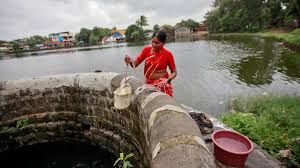
- 30 Dec 2024
Introduction: Groundwater Crisis and Agriculture
- India's Agricultural Dependence on Groundwater: India is a leading producer of water-intensive crops like rice, wheat, and pulses. The country’s agricultural sector heavily depends on groundwater for irrigation, especially for paddy cultivation.
- Over-exploitation of Groundwater: Groundwater extraction for irrigation is increasingly unsustainable, threatening agricultural sustainability in the long term.
Rising Groundwater Usage and Its Implications
- Population Growth and Groundwater Use: Between 2016 and 2024, global population grew from 7.56 billion to 8.2 billion, and India’s population rose from 1.29 billion to 1.45 billion. Concurrently, groundwater used for irrigation increased from 38% in 2016-17 to 52% in 2023-24, exacerbating the water crisis.
- Over-extraction in Major Paddy-Producing States: States like Rajasthan, Punjab, and Haryana have witnessed severe over-exploitation of groundwater for irrigation.
- Rajasthan: Highest groundwater salinisation (22%) despite receiving the highest average rainfall (608 mm) among these states.
- Punjab and Haryana: Lesser groundwater salinity due to canal irrigation and micro-irrigation systems.
Impact of Excessive Fertilizer Use on Groundwater Quality
- Soil Salinity and Groundwater Contamination: Excessive use of fertilizers, particularly for paddy cultivation, increases soil salinity and contributes to groundwater contamination.
- Toxic Chemicals in Groundwater: Nitrate contamination, caused by nitrogen-based fertilizers, and uranium contamination due to phosphate fertilizers are key concerns in states like Maharashtra, Telangana, Andhra Pradesh, and Tamil Nadu.
- Health Risks: Contaminated groundwater poses health risks such as thyroid disorders, cancer, and dental fluorosis, along with reduced agricultural productivity.
Projected Impact on Future Groundwater Availability
- Unsustainable Groundwater Levels: The Central Groundwater Board (CGWB) reports that if current practices continue, over half of the districts in Punjab could face groundwater depletion. Similarly, 21-23% of districts in Haryana and Rajasthan may experience a similar crisis.
- Population Growth and Water Scarcity: With India’s population expected to reach 1.52 billion by 2036, the need for sustainable groundwater management becomes even more critical.
Government Initiatives for Groundwater Management
- National Mission for Sustainable Agriculture (2014): Promotes sustainable practices like zero tillage, cover cropping, and micro-irrigation for efficient water and chemical use.
- Pradhan Mantri Krishi Sinchai Yojana (2015): Aims to boost irrigation efficiency through drip and sprinkler irrigation methods.
- Atal Bhujal Yojana (2019): Targets efficient groundwater management in water-stressed states like Gujarat, Haryana, Rajasthan, Maharashtra, and Uttar Pradesh.
- Success of Government Initiatives: CGWB data shows that the percentage of districts with unsustainable groundwater levels dropped from 23% in 2016-17 to 19% in 2023-24.
Role of State Governments in Groundwater Management
- State-Level Initiatives: States with unsustainable groundwater levels must take proactive measures to manage water resources efficiently.
- Example - Odisha: Odisha's Integrated Irrigation Project for Climate Resilient Agriculture emphasizes irrigation efficiency and climate-smart practices, supported by World Bank funding.
- Encouraging Resource-Efficient Agriculture: States with safe groundwater levels, like Chhattisgarh, Bihar, Jharkhand, Telangana, and Odisha, should adopt water-efficient practices to protect groundwater resources.
Conclusion: Ensuring Agricultural Sustainability and Water Security
- Need for Urgent Action: Scaling up efforts to improve irrigation practices and groundwater management is crucial to securing India’s agricultural future.
- Global Food Security: Protecting groundwater resources will not only ensure water security within India but also contribute to global food security amid climate challenges.
- Blueprint for Sustainable Agriculture: States like Odisha are providing a model for sustainable water management, which can be replicated across water-stressed regions in India.
Analysis of Female Labour Force Participation Rate (LFPR) Trends in India: 2017-2023
- 11 Dec 2024
In News:
The Economic Advisory Council to the Prime Minister (EAC-PM) recently released a working paper revealing critical insights into the trends of female Labour Force Participation Rate (LFPR) in India from 2017-18 to 2022-23. The report highlights an overall increase in female LFPR, with rural areas experiencing more significant growth compared to urban areas. This article delves into the key findings, regional disparities, influencing factors, and government initiatives aimed at promoting female workforce participation.
Key Findings on Female LFPR
The period between 2017-18 and 2022-23 witnessed a notable rise in female LFPR, both in rural and urban regions, though rural areas saw higher gains.
Rural female LFPR surged by approximately 69%, from 24.6% to 41.5%, while urban female LFPR increased from 20.4% to 25.4%. This consistent growth was observed even after excluding unpaid family workers or household helpers, reinforcing the long-term trend of increased female workforce participation across India.
However, a significant point of discussion in the report was the regional variations in female LFPR. States like Bihar, Punjab, and Haryana have consistently reported low female LFPR, which is noteworthy considering that Punjab and Haryana are among India's wealthiest states, while Bihar is the poorest. This regional disparity suggests that economic prosperity does not automatically translate into higher female labour force participation, highlighting deeper socio-cultural and structural barriers.
Regional Disparities in Female LFPR
The report emphasizes the persistent challenges in northern and eastern India. Punjab and Haryana, despite their affluence, have struggled with low female LFPR. Cultural and societal norms in these regions may contribute to the underrepresentation of women in the workforce, particularly in rural areas where traditional gender roles are more entrenched.
On the other hand, Bihar, the poorest state in India, had the lowest female LFPR in the country, particularly in rural areas. However, there has been a significant improvement in recent years, especially among rural married women. This indicates a slow but positive shift in attitudes towards female employment in these states.
In contrast, northeastern states such as Nagaland and Arunachal Pradesh have shown significant improvements in female LFPR, particularly in rural areas. These states have demonstrated that regional and cultural factors can also create conducive environments for female workforce participation.
Demographic Factors Affecting Female LFPR
Several demographic patterns influence female LFPR, including marital status and age. The report notes that married men consistently exhibit higher LFPR compared to women. Marriage, however, has a detrimental impact on female LFPR, particularly in urban areas, where women often face greater familial and societal pressures to prioritize domestic responsibilities over formal employment.
Age dynamics also play a crucial role in female LFPR trends. The data reveals a bell-shaped curve for female participation, peaking around the age of 30-40 years and sharply declining thereafter. This is in stark contrast to male LFPR, which remains almost universally high between the ages of 30-50 before gradually declining. These trends underscore the challenges women face in sustaining their participation in the workforce due to familial responsibilities, especially after marriage and childbirth.
Government Initiatives and the Rise in Female LFPR
The government's focus on women-led development is evident through various schemes aimed at increasing female workforce participation. Programs like Mudra Loans, the Drone Didi Scheme, and the Deendayal Antyodaya Yojana have been particularly instrumental in empowering women, especially in rural areas. These initiatives provide women with access to financial resources, skill development opportunities, and avenues for entrepreneurship, all of which contribute to the rise in female LFPR.
The EAC-PM's analysis acknowledges the positive impact of these government schemes, but it also stresses the need for further research to evaluate their long-term effectiveness. While the descriptive analysis highlights a substantial increase in female LFPR between 2017-18 and 2022-23, especially in rural areas, there remains a need for continuous monitoring and assessment of these schemes to ensure their sustained impact.
Conclusion: A Positive Shift, but Challenges Remain
The increase in female LFPR across India from 2017-18 to 2022-23 signals a positive shift in employment trends, particularly in rural areas. However, regional disparities, societal norms, and demographic factors continue to pose challenges. The rise in female LFPR is encouraging, but it is essential to understand the deeper socio-economic factors that shape women's participation in the workforce.
Government schemes have contributed to this growth, but future research is necessary to gauge their long-term effects and ensure that women’s participation in the workforce is not just a short-term trend. It is crucial that the government continues to refine policies that support women in overcoming socio-cultural and economic barriers, especially in less prosperous states like Bihar, Punjab, and Haryana. Sustained efforts, including education, skill development, and gender-sensitive policies, will be key to ensuring that the rise in female LFPR is both inclusive and long-lasting.
The analysis by the EAC-PM provides an essential framework for policymakers to design more targeted interventions to address regional disparities and create a more inclusive labor market for women in India.
Beware of Digital Wedding Invites

- 08 Dec 2024
In News:
In the peak wedding season, cyber fraudsters are increasingly exploiting digital wedding invitations to hack into mobile phones. These fraudulent invites, often disguised as PDF wedding cards shared on WhatsApp, contain embedded malware that allows cybercriminals to gain full access to the victim's phone. This includes access to sensitive financial data, making individuals vulnerable to fraud. The Lucknow Police Cyber Cell has issued a public warning, urging citizens to be cautious and avoid opening suspicious files.
How the Scam Works
The scam involves cybercriminals sending out malware-laden wedding invitations. Once the recipient opens the file, the malware infects their phone, enabling the fraudsters to remotely control the device. From there, they can access sensitive information, including bank account details, and may even transfer funds without the victim’s consent.
Preventive Measures and Cyber Hygiene
To protect against such scams, individuals should follow these preventive steps:
- Avoid Suspicious Files: Do not open files from unknown senders, particularly those with extensions like APK, PIF, or VBS. It is crucial to verify the sender's number—legitimate Indian numbers typically begin with +91.
- Turn Off Auto-Download: Disabling automatic downloads on platforms like WhatsApp can prevent files from being opened unknowingly.
- Enable Two-Step Verification: Strengthen security by activating two-step verification on your digital accounts and setting strong passwords.
- Report Fraud Immediately: In case of suspicious activity, contact the cybercrime helpline at 1930 or file a complaint on the official cybercrime portal (www.cybercrime.gov.in).
The Lucknow Police’s “Cyber Pathshala” campaign aims to raise awareness and educate the public on digital scams, particularly during the wedding season when these frauds are at their peak.
Cybersecurity Challenges in India
This emerging digital threat is part of a broader trend of sophisticated cybercrimes in India. Cyber fraudsters are increasingly using manipulative tactics, such as phishing, fake digital arrests, and malware attacks. In 2024, India witnessed a significant rise in ransomware attacks, frauds targeting financial institutions, and supply chain vulnerabilities.
India's legislative and institutional frameworks are evolving to address these challenges. Key measures include:
- The Information Technology Act, 2000, which lays the foundation for tackling cybercrimes.
- The Digital Personal Data Protection Act, 2023, which focuses on protecting personal data.
- The Indian Computer Emergency Response Team (CERT-In), which coordinates national responses to cyber incidents.
Additionally, new frameworks like the National Cyber Security Policy, 2013, and initiatives such as Cyber Surakshit Bharat and the Indian Cyber Crime Coordination Centre (I4C), aim to fortify India's digital landscape and promote cybersecurity.
Emerging Cyber Threats
As India becomes more digitally connected, the threat landscape continues to evolve:
- Digital Arrest Scams: Fraudsters impersonate law enforcement to extort money from victims, claiming they are under investigation for fictitious crimes.
- Ransomware: Attacks on critical infrastructure, such as financial institutions and healthcare systems, have led to operational disruptions and financial losses.
- Deepfake Technology: The rise of AI-generated deepfakes poses significant risks, including misinformation and financial fraud.
- Internet of Things (IoT) Vulnerabilities: The rapid adoption of IoT devices has created new security challenges, with many devices lacking adequate protection.
Strategic Recommendations for Enhancing Cybersecurity
To counter these evolving threats, India must focus on several strategic areas:
- Digital Literacy Campaigns: Nationwide efforts to improve digital literacy, particularly targeting vulnerable groups such as rural populations and senior citizens.
- Stronger IoT Security Protocols: Mandating secure design and certification for IoT devices.
- AI-Driven Threat Intelligence: Implementing AI-based tools for early threat detection and response in critical sectors.
- Mandatory Cybersecurity Audits: Regular audits of critical infrastructure, especially in sectors like healthcare, banking, and utilities.
- Public-Private Collaboration: Strengthening partnerships to address challenges such as cryptocurrency fraud, ransomware, and dark web-enabled crimes.
Conclusion
The rise of digital fraud, including the manipulation of wedding invitations for malicious purposes, highlights the need for enhanced cybersecurity measures in India. By improving public awareness, investing in technological solutions, and reinforcing legal and institutional frameworks, India can better protect its citizens from the growing threat of cybercrime. A proactive and informed approach is essential to secure the digital future of the nation.
Reflections on Baku’s ‘NCQG Outcome’ at COP29
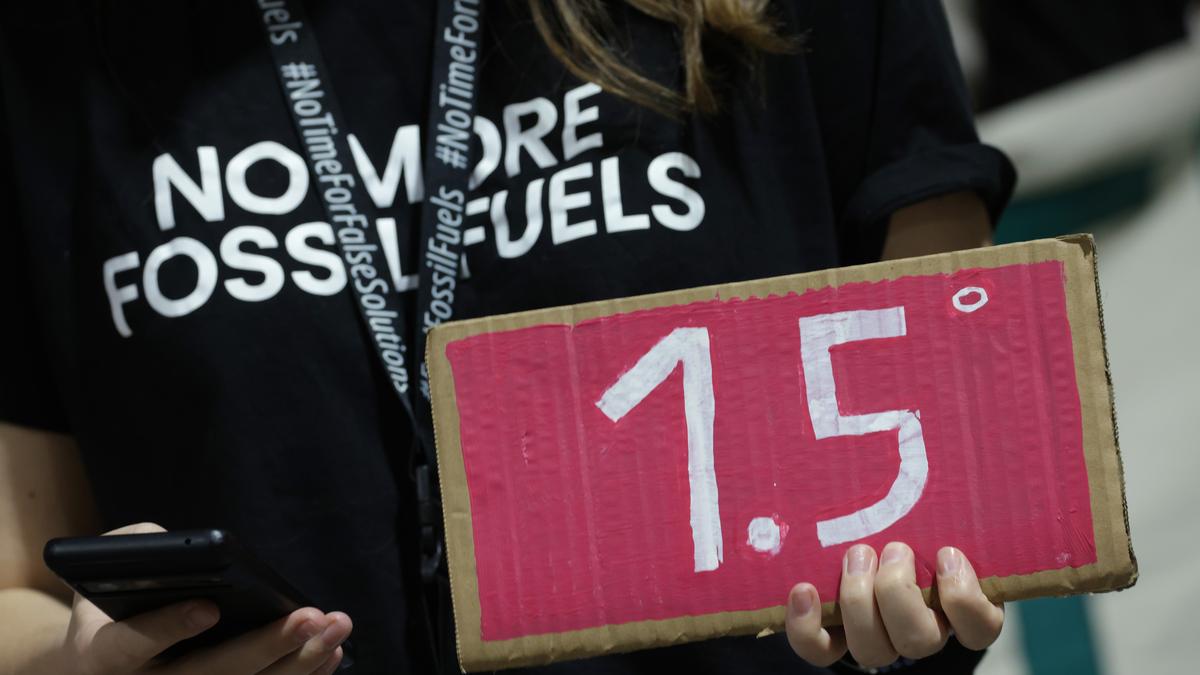
- 06 Dec 2024
In News:
The recently concluded COP29 in Baku, Azerbaijan, has brought the spotlight back to climate finance, particularly in relation to the New Collective Quantified Goal (NCQG). As the global community grapples with the escalating climate crisis, the discussions and outcomes from the COP29 summit are pivotal in shaping future climate action. However, the agreed-upon financial targets, which were expected to be a step towards transformative climate justice, have sparked significant concern, particularly among developing nations.
The Need for Climate Finance: A Global Responsibility
Climate finance is essential for supporting developing countries, which bear the brunt of climate change despite contributing minimally to global emissions. The Intergovernmental Panel on Climate Change (IPCC) has stressed the need to limit global warming to 1.5°C above pre-industrial levels, yet current policies could lead to a rise of up to 3.1°C. To counter this, developing nations require financial assistance to transition to green energy, adapt to climate impacts, and implement their Nationally Determined Contributions (NDCs).
The upfront costs of green technologies, such as renewable energy, are high, and while they offer long-term savings, their initial investments remain a significant barrier. Additionally, many developing countries face fiscal constraints, making it even more difficult to adopt climate-friendly technologies without external financial support.
The Role of NCQG in Addressing Climate Finance Gaps
The NCQG, an evolution of the 2010 $100 billion annual commitment, aims to provide clarity and accountability in climate financing. Established as a framework to ensure financial resources for climate action, the NCQG should ideally focus on the evolving needs of the Global South. However, at COP29, the target agreed upon was a mere $300 billion annually by 2035, far from the $1.3 trillion that developing countries had requested. This amount falls drastically short of what is necessary to meet the ambitious climate goals and fails to represent a transformative shift in financial flows.
Key Challenges and Discontent with the Outcome
Several challenges have been raised regarding the COP29 outcome:
- Equity and Responsibility: Developed nations are expected to bear a larger share of the financial burden, in line with the principle of 'Common but Differentiated Responsibilities' (CBDR). However, the NCQG outcome bypasses this principle, offering insufficient funds for climate action in developing countries.
- Types of Finance: There is debate over whether private finance should count towards the goal. Developing countries have stressed the importance of public finance over loans, which add to their debt burdens.
- Insufficient Commitment: While the $300 billion annual pledge is a step forward, it is far from adequate. The global climate finance needs, estimated at $5 trillion to $7 trillion by 2030, require bolder commitments from developed nations.
India's Position and Domestic Efforts
At COP29, India emphasized the need for developed countries to fulfill their financial commitments, advocating for at least $1.3 trillion annually until 2030. India, despite being a developing country, has also made significant strides in climate action through domestic policies. The 2024-25 Union Budget allocated substantial funds to renewable energy projects, including ?19,100 crore for the Ministry of New and Renewable Energy. These efforts demonstrate India’s commitment to climate goals, though the financial flow remains insufficient.
Conclusion: The Road Ahead
The NCQG outcome at COP29 highlights the ongoing disparities in global climate finance commitments. While the $300 billion annual target is a step forward, it does not align with the urgency or scale required to tackle the climate crisis. To achieve a just and equitable transition to a sustainable future, future climate finance discussions must prioritize transparency, accountability, and fairness, ensuring that developed nations shoulder their fair share of the responsibility. The path forward requires unwavering international cooperation to ensure that developing countries receive the necessary support to mitigate and adapt to the impacts of climate change.
Scrapping of Windfall Gains Tax

- 05 Dec 2024
Introduction
On December 2, 2024, the Indian government withdrew the windfall gains tax on domestic crude oil production and fuel exports (diesel, petrol, and aviation turbine fuel - ATF). This tax, initially imposed in July 2022, was introduced in response to the surge in global oil prices following Russia's invasion of Ukraine. Its removal reflects the current global oil market stability and the improved fuel supply situation in India.
What is Windfall Gains Tax?
Definition
A windfall tax is a levy imposed on unexpected profits that result from extraordinary events, such as geopolitical crises or market disruptions. In the case of India, the tax was applied to the super-normal profits of oil producers and fuel exporters due to the global energy turmoil.
Key Features
- Domestic Crude Oil: The Special Additional Excise Duty (SAED) was imposed on domestic crude oil production.
- Fuel Exports: A combination of SAED and Road and Infrastructure Cess (RIC) was levied on diesel, petrol, and ATF exports.
Rationale Behind the Windfall Gains Tax
Immediate Context
The tax was introduced during a period of soaring global crude oil prices, driven by the Russia-Ukraine conflict. India, which imports over 85% of its oil, faced concerns about the availability of fuels and the impact of rising prices on domestic consumption. The tax was seen as a way to:
- Ensure Domestic Fuel Supply: By discouraging excessive fuel exports during a period of global supply chain disruptions.
- Increase Government Revenue: The tax aimed to capture windfall profits and offset the duty cuts on domestic fuel sales.
Global Context
Other countries also implemented similar windfall taxes during this period, as energy companies saw record profits due to the price surge.
Decline in Windfall Gains Tax Revenue
Revenue Collection
The windfall gains tax initially raised significant revenue, but the amount has decreased over time due to falling global oil prices:
- FY 2022-23: Rs 25,000 crore
- FY 2023-24: Rs 13,000 crore
- FY 2024-25 (so far): Rs 6,000 crore
This decline, combined with reduced oil prices, led to the tax being effectively inactive before its formal withdrawal.
Withdrawal of the Windfall Gains Tax
Reasons for the Withdrawal
- Global Stabilization: Crude oil prices, which had exceeded $100 per barrel, have now stabilized under $75 per barrel, with no immediate signs of a significant price surge.
- Domestic Fuel Availability: There is now a robust fuel supply in the domestic market, making the tax less necessary.
- Declining Revenues: With the tax generating diminishing returns, it was no longer economically viable for the government to maintain it.
Impact of the Scrapping
The government's move to scrap the windfall gains tax is seen as a signal of stability and predictability in the taxation regime. It assures the oil industry that the government is confident in the stability of global oil prices and supply chains.
Criticism of the Windfall Tax
Industry Opposition
The windfall tax faced opposition from the oil industry, which argued that it:
- Reduced Profitability: The tax limited the profits of publicly listed companies like ONGC and Reliance Industries.
- Discouraged Oil Production: By making the taxation environment unpredictable, it deterred investment in oil exploration and production in a country that is heavily dependent on oil imports.
- Created Uncertainty: Frequent revisions of the tax led to an unstable business environment.
Conclusion
The scrapping of the windfall gains tax is a significant policy shift. It not only provides relief to oil companies but also signals a more predictable and stable taxation regime. By withdrawing the tax, the government is fostering a conducive environment for future investments in domestic oil production and signaling its confidence in the stability of global oil prices. This move is a crucial step in ensuring that India’s energy policies remain adaptable and aligned with the evolving global market conditions.
Current Representation of Women in CAPFs
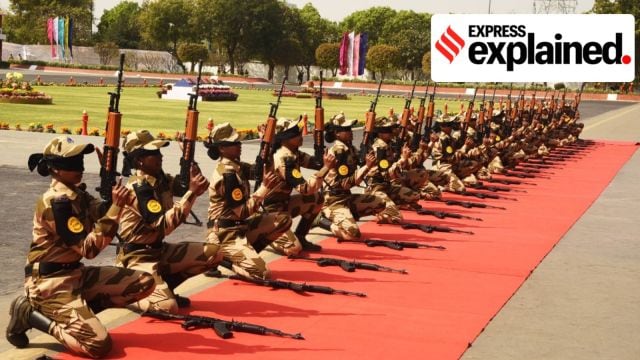
- 04 Dec 2024
In News:
The Central Armed Police Forces (CAPFs) of India, comprising forces like CRPF, BSF, CISF, and others, play a crucial role in maintaining internal security. Women’s participation in these forces has been historically limited, but recent efforts have focused on increasing their representation. As of 2024, women constitute only 4.4% of the total personnel in CAPFs, highlighting the slow progress despite various initiatives.
Current Representation and Changes Over Time
- Overall Representation: Women make up 4.4% of the 9.48 lakh-strong CAPFs. Within this, the Central Industrial Security Force (CISF) has the highest representation at 7.02%, followed by the Sashastra Seema Bal (SSB) at 4.43%, Border Security Force (BSF) at 4.41%, Indo-Tibetan Border Police (ITBP) at 4.05%, Assam Rifles at 4.01%, and Central Reserve Police Force (CRPF) at 3.38%.
- Growth of Women Personnel: From 15,499 women in 2014, the number has tripled to 42,190 in 2024, reflecting a steady increase in recruitment. However, the percentage remains low despite these gains.
- Recruitment Trends: In 2024, 835 women were recruited, with 5,469 more in the process. In 2025, 4,138 women are expected to be recruited.
Government Efforts and Parliamentary Committee Recommendations
- Policy Measures: The government has introduced several steps to encourage women’s participation in CAPFs, such as reservations in constable-level positions: one-third for CRPF and CISF, and 14-15% for border forces like BSF, SSB, and ITBP.
- Challenges in Recruitment: Despite these policies, recruitment has not kept pace with the targets. The 2022 Parliamentary Committee on Home Affairs expressed disappointment over the “abysmally low” number of women in CAPFs, noting that women made up only 3.68% of the forces at that time.
- Recommendations by Parliamentary Committees:
- The Home Affairs Committee recommended fast-tracking phase-wise recruitment of women, particularly in CISF and CRPF.
- The Standing Committee on Personnel (2023) suggested “soft postings” for women to avoid difficult working conditions, especially in remote or strenuous terrains. It also called for reservations for transgender individuals.
- In 2024, further steps like fee waivers, relaxed physical standards, and provisions for maternity and child care leave were introduced to make the work environment more inclusive.
Reasons Behind Low Representation
- Cultural Barriers: Traditional gender roles and societal expectations deter many women from pursuing careers in security forces.
- Work Environment: The demanding nature of the job, which includes postings in remote areas and high-risk operations, makes it less appealing, especially for women with family responsibilities.
- Infrastructure Issues: Lack of adequate accommodation, sanitation facilities, and safety measures for women are deterrents to joining and retaining female personnel.
Conclusion and Future Outlook
Although the representation of women in CAPFs has seen improvement, it remains below expectations due to persistent challenges. The government’s continuous focus on recruitment reforms, better working conditions, and policy incentives will be crucial to achieve gender parity in these forces. As societal attitudes evolve and the infrastructure improves, more women may be encouraged to serve in these vital security roles. Future efforts must include targeted recruitment drives and creating a more inclusive and supportive environment to enhance women’s participation in CAPFs.
India's Gig Economy: Growth and Impact on Employment

- 03 Dec 2024
Introduction
India’s gig economy is experiencing rapid growth, with projections indicating it will significantly contribute to the national economy and employment generation. A recent report by the Forum for Progressive Gig Workers estimates the gig economy could reach $455 billion by the end of 2024, growing at a 17% compounded annual growth rate (CAGR). By 2030, it may add 1.25% to India’s GDP and create 90 million jobs.
What is the Gig Economy?
- Definition: The gig economy refers to a labor market based on short-term, flexible jobs, typically facilitated by digital platforms. Gig workers, also called freelancers or independent contractors, are compensated for each task they complete.
- Key Features:
- Flexibility in work schedule and location.
- Task-based employment through digital platforms.
- Common sectors: e-commerce, transportation, delivery services, and freelance work.
Status of the Gig Economy in India
- Market Growth:
- In 2020-21, India had 7.7 million gig workers, which is expected to grow to 23.5 million by 2029-30.
- Key sectors contributing to growth include e-commerce, transportation, and delivery services.
- Driving Factors:
- Digital Penetration: With over 936 million internet subscribers and 650 million smartphone users, digital infrastructure is a key enabler of the gig economy.
- Startup and E-commerce Growth: The rise of startups and e-commerce platforms has increased demand for flexible labor.
- Changing Work Preferences: Younger generations seek work-life balance, opting for flexible gig work.
Gig Economy and Employment Generation
- Contribution to GDP: The gig economy is expected to contribute 1.25% to India’s GDP by 2030.
- Job Creation:
- The gig economy could create up to 90 million jobs by 2030.
- It is estimated that by 2030, gig workers will comprise 4.1% of India’s total workforce.
- Benefits:
- Women’s Empowerment: Gig work provides financial independence and flexibility, especially benefiting women in the workforce.
- Regional Growth: Tier-II and Tier-III cities are seeing accelerated growth in gig work opportunities.
Challenges Faced by Gig Workers
- Job Insecurity: Many gig workers experience instability in their employment, especially in low-skilled jobs.
- Income Volatility: Earnings are unpredictable, and workers face difficulty in financial planning.
- Regulatory Gaps: There is no comprehensive legal framework to protect gig workers’ rights and ensure fair working conditions.
- Delayed Payments: A significant number of workers face delayed payments, affecting their financial well-being.
- Skill Development: Many workers report a lack of opportunities for career advancement and skill development.
Government Initiatives for Gig Workers
- Code on Social Security, 2020: Recognizes gig workers and aims to extend social security benefits, though it lacks comprehensive coverage.
- e-Shram Portal & Welfare Schemes: Initiatives like Pradhan Mantri Shram Yogi Maandhan Yojana and PMJJBY aim to provide financial security to gig workers.
- State-level Initiatives:
- Rajasthan’s Platform-Based Gig Workers Act (2023) focuses on registration and welfare.
- Karnataka’s bill mandates formal registration and grievance mechanisms.
The Way Forward
- Legal Reforms: India can draw from international models like California and the Netherlands, where gig workers are reclassified as employees to ensure protections such as minimum wages and regulated working hours.
- Portable Benefits System: Implementing a system where gig workers can access benefits like healthcare and retirement plans regardless of their employer.
- Skill Development: Strengthening collaborations with vocational institutions to enhance skills and improve earning potential.
- Technological Solutions: Establishing robust feedback mechanisms for workers to report exploitation and ensure fairness within the gig economy.
Conclusion
The gig economy in India is poised to become a significant driver of economic growth and job creation. However, addressing challenges such as income volatility, job insecurity, and regulatory gaps is crucial to ensuring sustainable growth.
NITI Aayog’s Framework for Future Pandemic Preparedness
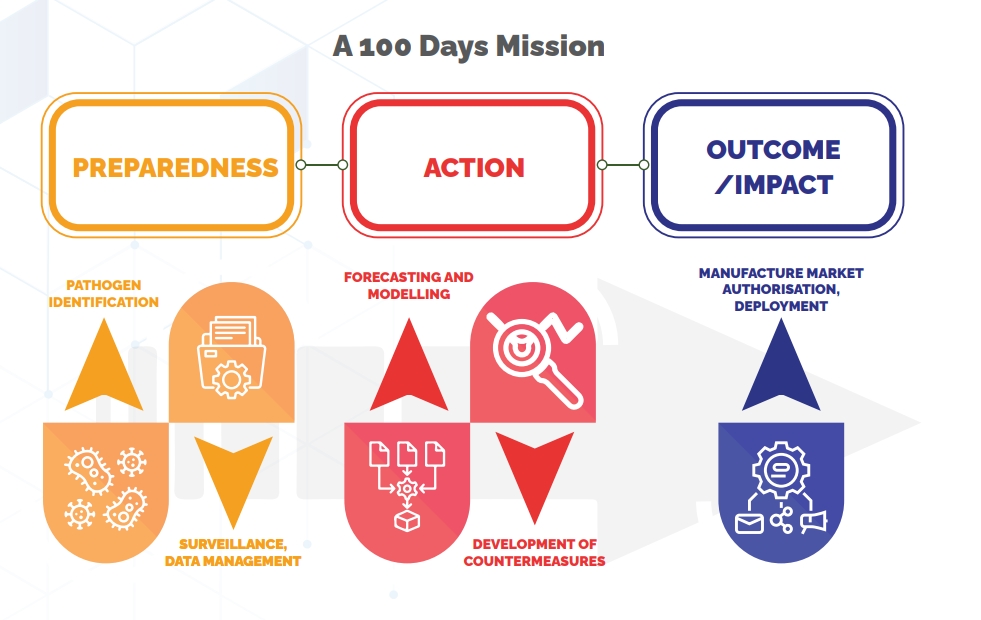
- 02 Dec 2024
Introduction
In response to the evolving threat of pandemics, NITI Aayog has released an Expert Group report titled "Future Pandemic Preparedness and Emergency Response — A Framework for Action." The report offers a strategic blueprint for India to enhance its pandemic preparedness, drawing from the lessons learned during the COVID-19 crisis and global best practices. This framework aims to create a rapid, well-coordinated response system for future public health emergencies.
Rationale Behind the Expert Group
The COVID-19 pandemic underscored the vulnerability of global and national health systems to emerging infectious diseases. As future pandemics are inevitable, especially with increasing zoonotic threats, India has taken a proactive step in planning for such eventualities. The WHO has warned that 75% of future pandemics may be zoonotic, caused by pathogens transmitted from animals to humans.
Key Findings from COVID-19 Response
India's response to COVID-19 highlighted several strengths and weaknesses in the public health system. Key efforts included developing vaccines, enhancing research and development frameworks, and deploying digital tools for data management across its 1.4 billion population. However, gaps were identified in governance, data management, and cross-sectoral coordination. These lessons have been integrated into the expert group’s framework for future preparedness.
The 100-Day Response Framework
A crucial aspect of the report is the emphasis on the first 100 days of a pandemic. The expert group argues that a rapid response within this period is essential for minimizing the impact of any outbreak. The framework outlines a detailed roadmap for preparedness, which includes tracking, testing, treating, and managing outbreaks efficiently. A robust system for quick deployment of countermeasures, including vaccines and treatments, is pivotal during these critical days.
Four Pillars of Pandemic Preparedness
The report's recommendations are organized around four pillars:
- Governance, Legislation, Finance, and Management:
- Proposes a new Public Health Emergency Management Act (PHEMA) to address modern pandemic needs.
- Creation of an empowered group of secretaries (EGoS) for rapid decision-making and coordination.
- Data Management, Surveillance, and Predictive Tools:
- Calls for a unified data platform to aggregate and analyze data for timely decision-making.
- Emphasizes strengthening genomic surveillance and establishing a national biosecurity network.
- Research, Innovation, and Infrastructure:
- Recommends a high-risk innovation fund to support research on diagnostics, vaccines, and therapeutics.
- Suggests enhancing manufacturing capacity and building biosafety containment facilities.
- Partnerships and Community Engagement:
- Stresses the importance of private sector involvement and community engagement in managing pandemics.
- Proposes a risk communication unit at the National Centre for Disease Control (NCDC) to manage public information and prevent misinformation.
International and National Collaboration
The report underscores the need for cross-border collaboration, aligning India’s efforts with international frameworks such as the WHO’s revised International Health Regulations and the Pandemic Accord negotiations. Collaboration with global institutions, academia, and the private sector is essential for sharing data, technology, and expertise during health crises.
Lessons from Past Epidemics
The report draws lessons from several past epidemics, including SARS, H1N1, and Ebola, which revealed the importance of timely diagnostics, coordinated surveillance, and rapid response. These lessons highlight the need for stronger international regulations, integrated data systems, and enhanced public-private partnerships in tackling future pandemics.
Conclusion and Recommendations
The framework offers actionable recommendations to strengthen India’s pandemic preparedness. From institutionalizing governance structures and creating a dedicated pandemic fund to enhancing surveillance and fostering innovation, these steps are designed to ensure rapid response and minimize the impact of future health crises. By focusing on governance, data management, research, and community partnerships, India aims to build a resilient health system capable of facing future challenges effectively.
Digital Arrests

- 01 Dec 2024
In News:
In 2024, India has witnessed an alarming rise in cybercrime, particularly a new scam called "digital arrests." This type of fraud involves criminals impersonating law enforcement officials to extort money from victims. With more than 92,000 people targeted and ?2,141 crore defrauded from victims, these scams are rapidly becoming a significant concern for the public and law enforcement.
Nature of ‘Digital Arrests’
The modus operandi of digital arrest scams is sophisticated and emotionally manipulative. Cybercriminals contact victims through video calls, often using fake police officers' profiles and official documents to build credibility. They accuse victims of serious crimes such as money laundering or drug trafficking, claiming urgent action is needed to avoid arrest. The scammers create a false atmosphere of fear and urgency, convincing the victim to transfer large sums of money under the pretext of settling legal dues.
A notable example involves Ruchi Garg, who was targeted by scammers posing as police officers, falsely claiming her son was involved in a major scam. She was coerced into transferring ?80,000 before realizing it was a scam. Similar cases have affected hundreds, with perpetrators using AI-generated voices and fake visuals to amplify the deception.
The Growth of Cybercrime in India
Digital arrest scams are part of a broader increase in cybercrime in India. The Indian Cyber Crime Coordination Centre (I4C) has reported a rise in cyber fraud, with financial losses exceeding ?27,900 crore between 2021 and 2024. The most significant sources of these losses include stock trading scams, Ponzi schemes, and digital arrest frauds. As criminals adapt to emerging technologies and use social engineering tactics, the scale and complexity of scams are growing.
The surge in cybercrimes is fueled by vulnerabilities in India's digital landscape. With over 95 crore Internet users, many people, particularly the elderly or less tech-savvy, remain susceptible to such fraud. Cybercriminals often exploit this lack of awareness, combining fear and confusion to manipulate victims.
International Scope and Challenges
One of the challenges in combating digital arrests is the transnational nature of cybercrime. Scams often originate from countries like China, Cambodia, and Myanmar, where "scam compounds" run operations to train individuals in fraudulent techniques. These groups use virtual private networks (VPNs) and encrypted apps to conceal their identities and locations, making it difficult for Indian authorities to trace them.
Moreover, the involvement of mule bank accounts to launder defrauded money complicates investigations. Thousands of such accounts are identified and blocked regularly, but the flow of money continues through multiple channels, including cryptocurrencies.
Government Efforts and Preventive Measures
To address the growing menace of digital frauds, the Indian government has initiated several measures. The I4C, launched in 2020, aims to strengthen the response to cybercrimes by coordinating with various law enforcement agencies. The National Cyber Crime Reporting Portal allows citizens to report cyber fraud, while real-time alerts are sent to banks to prevent financial losses.
Additionally, the Cyber Crime Coordination Centre and other initiatives like Cyber Surakshit Bharat and CERT-In are working to enhance cybersecurity awareness and support victims. The Digital Personal Data Protection Act, 2023, also aims to regulate data security, which can reduce the sale of personal data on the dark web, a key enabler of these scams.
Conclusion
‘Digital arrests’ exemplify the evolving nature of cybercrimes in India. As digital threats become more complex and widespread, it is essential for citizens to remain vigilant and informed. Effective law enforcement, technological innovations, and public awareness are critical to reducing the impact of these scams and safeguarding the digital economy.
Biomedical Waste Regulations
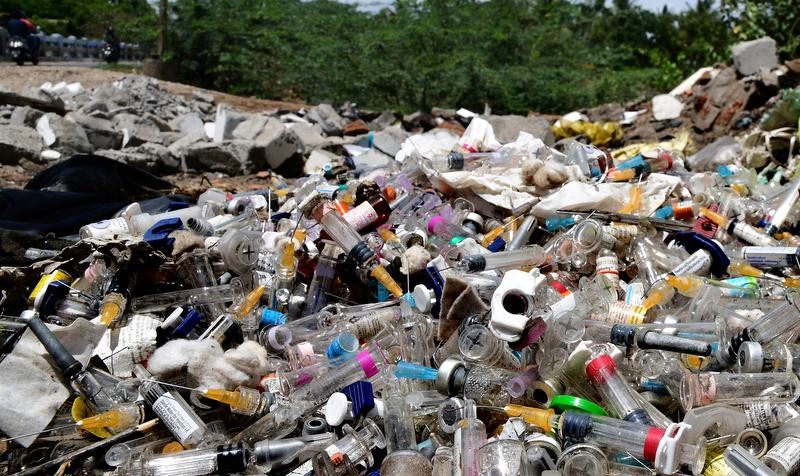
- 30 Nov 2024
The Emergence of HIV and Global Panic
In 1983, scientists Luc Montagnier and Robert Gallo independently identified the virus responsible for AIDS. By the mid-1980s, HIV/AIDS was perceived as a biological death sentence, with the virus primarily attacking immune cells, making medical intervention difficult. The epidemic quickly became associated with fear, ignorance, and stigma, as it was often linked to marginalized groups.
The "Syringe Tide" Incident and Public Outrage
In August 1987, the U.S. faced a public health crisis when discarded medical waste, including syringes and blood vials, washed up on beaches along the Atlantic coast. Known as the "Syringe Tide," this incident shocked the public and fueled anxiety, especially when children were seen playing with syringes. Traced to improper waste disposal in New York City, the event highlighted the hazardous nature of medical waste, which had been previously underestimated. Combined with the HIV/AIDS epidemic, this incident amplified public fear and economic losses of up to $7.7 billion due to the decline in tourism.
U.S. Response: Medical Waste Tracking Act of 1988
The widespread outrage led to the U.S. government passing the Medical Waste Tracking Act in 1988. This was the first law to formally categorize hospital waste as hazardous. The Act introduced stringent guidelines for the handling, transportation, and disposal of medical waste, establishing systemic regulation and oversight. It marked a significant turning point in both public health and environmental safety, changing how medical waste was managed in the healthcare sector.
India’s Journey in Biomedical Waste Management
Initial Steps and Delays
While the U.S. responded swiftly to the crisis, India’s approach to managing biomedical waste was slower. In 1986, India enacted the Environmental Protection Act, which marked the country’s first significant step towards environmental conservation. That same year, India identified its first HIV case. However, biomedical waste was not yet recognized as hazardous, and the Hazardous Waste (Management and Handling) Rules of 1989 failed to address the issue. As a result, local bodies were left to manage waste disposal, leading to inefficiencies.
Judicial Intervention and Legislative Action
In the 1990s, as pollution levels rose, particularly in urban areas like Delhi, the inadequacies of the system became apparent. In the landmark case Dr. B.L. Wadehra vs. Union of India (1996), the Supreme Court criticized Delhi’s waste management system, calling the city an "open garbage dump." This judgment led to a nationwide conversation on waste management and resulted in the Biomedical Waste (Management and Handling) Rules of 1998, marking the formal recognition of hospital waste as hazardous. The rules empowered the Central and State Pollution Control Boards to regulate waste disposal, ensuring accountability.
The Link Between HIV and Biomedical Waste Regulations
The HIV crisis highlighted the need for safe disposal practices to protect the environment and healthcare workers. While India charted its own course, the global response to HIV, particularly the U.S. model, influenced India’s approach to biomedical waste management. Over the years, India has made significant progress, with amendments to the rules in 2016 and 2020 to improve waste management technology and ensure safe disposal.
Current Challenges and Progress
- Ongoing Issues in Biomedical Waste Management: Despite significant progress, challenges remain, especially in rural and resource-limited areas. Mishandling of biomedical waste continues to pose risks, and healthcare professionals still face occupational hazards. Gaps in compliance and awareness persist, but the system’s progress is undeniable.
Conclusion
The HIV/AIDS epidemic, while tragic, indirectly led to significant improvements in healthcare waste management. As the crisis highlighted the dangers of improper waste disposal, it spurred legislative and systemic changes that have contributed to safer healthcare environments. The progress in biomedical waste management demonstrates that crises can often lead to long-term improvements.
National Mission on Natural Farming (NMNF)
- 29 Nov 2024
In News:
The Union Cabinet recently approved the launch of the National Mission on Natural Farming (NMNF), marking a significant shift in the government's approach to agriculture. This initiative, a standalone Centrally Sponsored Scheme under the Ministry of Agriculture & Farmers' Welfare, aims to promote natural farming across India, focusing on reducing dependence on chemical fertilizers and promoting environmentally sustainable practices.
What is Natural Farming?
Natural farming, as defined by the Ministry of Agriculture, is a chemical-free agricultural method that relies on inputs derived from livestock and plant resources. The goal is to encourage farmers to adopt practices that rejuvenate soil health, improve water use efficiency, and enhance biodiversity, while reducing the harmful effects of fertilizers and pesticides on human health and the environment. The NMNF will initially target regions with high fertilizer consumption, focusing on areas where the need for sustainable farming practices is most urgent.
Evolution of Natural Farming Initiatives
The NMNF is not an entirely new concept but a scaled-up version of the Bhartiya Prakritik Krishi Paddhti (BPKP) introduced during the NDA government's second term (2019-24). The BPKP was part of the larger Paramparagat Krishi Vikas Yojna (PKVY) umbrella scheme, and natural farming was also promoted along the Ganga River under the NamamiGange initiative in 2022-23. With the renewed focus on natural farming following the 2024 elections, the government aims to extend the lessons learned from BPKP into a comprehensive mission mode, setting a clear direction for sustainable agriculture.
In Budget speech for 2024-25, it was announced a plan to initiate one crore farmers into natural farming over the next two years. The mission will be implemented through scientific institutions and willing gram panchayats, with the establishment of 10,000 bio-input resource centers (BRCs) to ensure easy access to the necessary inputs for natural farming.
Key Objectives
The NMNF aims to bring about a paradigm shift in agricultural practices by:
- Expanding Coverage: The mission plans to bring an additional 7.5 lakh hectares of land under natural farming within the next two years. This will be achieved through the establishment of 15,000 clusters in gram panchayats, benefiting 1 crore farmers.
- Training and Awareness: The mission will establish around 2,000 model demonstration farms at Krishi Vigyan Kendras (KVKs), Agricultural Universities (AUs), and farmers' fields. These farms will serve as hubs for training farmers in natural farming techniques and input preparation, such as Jeevamrit and Beejamrit, using locally available resources.
- Incentivizing Local Inputs: The creation of 10,000 bio-input resource centers will provide farmers with easy access to bio-fertilizers and other natural farming inputs. The mission emphasizes the use of locally sourced inputs to reduce costs and improve the sustainability of farming practices.
- Farmer Empowerment: 30,000 Krishi Sakhis (community resource persons) will be deployed to assist in mobilizing and guiding farmers. These trained individuals will play a key role in generating awareness and providing on-ground support to the farmers practicing natural farming.
- Certifications and Branding: A major aspect of the mission is to establish scientific standards for natural farming produce, along with a national certification system. This will help in creating a market for organically grown produce and encourage more farmers to adopt sustainable practices.
Targeting High Fertilizer Consumption Areas
The Ministry of Agriculture has identified 228 districts in 16 states, including Uttar Pradesh, Punjab, Maharashtra, and West Bengal, where fertilizer consumption is above the national average. These districts will be prioritized for the NMNF rollout, as they have high fertilizer usage but low adoption of natural farming practices. By focusing on these areas, the mission seeks to reduce the over-dependence on chemical fertilizers and foster a transition to more sustainable farming practices.
Benefits of Natural Farming
The NMNF aims to deliver multiple benefits to farmers and the environment:
- Cost Reduction: Natural farming practices can significantly reduce input costs by decreasing the need for costly chemical fertilizers and pesticides.
- Soil Health and Fertility: By rejuvenating the soil through organic inputs, natural farming improves soil structure, fertility, and microbial activity, leading to long-term agricultural sustainability.
- Climate Resilience: Natural farming enhances resilience to climate-induced challenges such as drought, floods, and waterlogging.
- Healthier Produce: Reduced use of chemicals results in safer, healthier food, benefitting both farmers and consumers.
- Environmental Conservation: The promotion of biodiversity, water conservation, and carbon sequestration in soil leads to a healthier environment for future generations.
Conclusion
The launch of the National Mission on Natural Farming represents a critical step toward transforming India's agricultural practices into a more sustainable and environmentally friendly model. By targeting regions with high fertilizer usage, providing farmers with the tools and knowledge for natural farming, and creating a system for certification and branding, the government hopes to make natural farming a mainstream practice. As India continues to grapple with the challenges of climate change, soil degradation, and health risks from chemical inputs, the NMNF provides a promising framework for sustainable agriculture that benefits farmers, consumers, and the environment alike.
India’s Urban Infrastructure
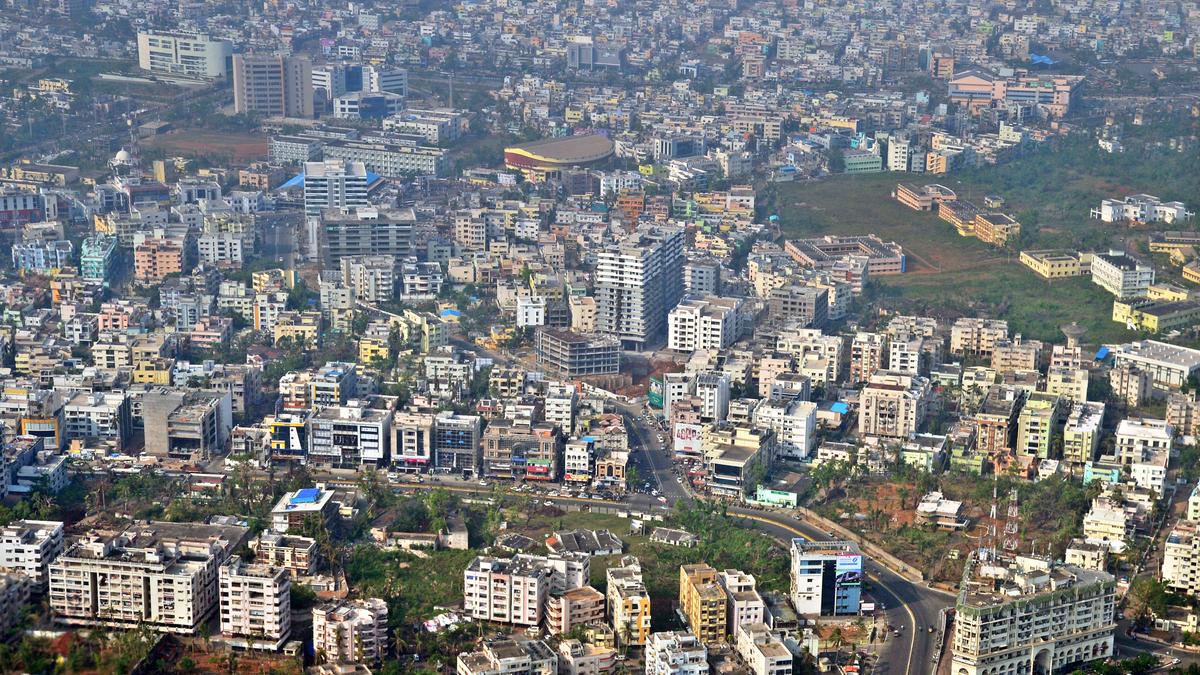
- 28 Nov 2024
Introduction
India’s urban population is projected to double from 400 million to 800 million by 2050. This demographic shift presents both challenges and opportunities for transforming the country’s urban infrastructure. To meet the growing needs of urban areas, India will require an investment of approximately ?70 lakh crore by 2036, a figure significantly higher than current spending levels.
Financial Challenges in Urban Infrastructure
- Investment Gap
- The current annual investment in urban infrastructure stands at ?1.3 lakh crore, which is only 28% of the ?4.6 lakh crore needed annually.
- A large portion of the existing investment, around 50%, is directed towards basic urban services, with the remainder allocated to urban transport.
- Municipal Finances
- Municipal finances have remained stagnant at 1% of GDP since 2002.
- Despite increased transfers from the central and state governments, municipal bodies face financial strain.
- The contribution of municipal own-revenue has decreased from 51% to 43%, indicating a reduced financial independence.
- Revenue Collection Inefficiencies
- Urban local bodies (ULBs) are collecting only a small fraction of their potential revenues, with property tax collections representing just 0.15% of GDP.
- Cost recovery for essential services like water supply and waste management ranges between 20% and 50%, pointing to a significant funding gap.
- Underutilization of Resources
- Cities like Hyderabad and Chennai utilized only 50% of their capital expenditure budgets in 2018-19.
- Central schemes such as AMRUT and the Smart Cities Mission also showed suboptimal fund utilization, with utilization rates of 80% and 70%, respectively.
- Decline in Public-Private Partnerships (PPPs)
- Investments through PPPs in urban infrastructure have seen a sharp decline, from ?8,353 crore in 2012 to ?467 crore in 2018.
- This drop is attributed to limited project-specific revenues and inadequate funding mechanisms.
Structural and Administrative Challenges
- Weak Governance and Fragmented Management
- Fragmented governance and limited administrative autonomy hinder effective urban planning and resource allocation.
- Municipal bodies often lack the ability to undertake long-term planning and project execution due to these governance challenges.
- Climate Vulnerability and Sustainability: Urban areas are increasingly vulnerable to climate risks like floods and heatwaves. However, many urban infrastructure projects fail to incorporate climate resilience in their planning, exacerbating the long-term vulnerability of investments.
- Inadequate Land Management
- There is poor coordination between land use planning and infrastructure development, resulting in urban sprawl and inefficient transportation systems.
- Opportunities to capitalize on the land value generated by metro and rail projects remain underutilized.
Measures for Transforming Urban Infrastructure
- Streamline Revenue Collection: Leverage technology to improve property tax collection systems and enhance cost recovery in essential services.
- Enhance Fund Utilization: Strengthen municipal capacities for effective project planning and incentivize the timely use of allocated grants.
- Scale Public-Private Partnership (PPP) Investments: Develop a pipeline of bankable projects and create risk-sharing mechanisms to attract private sector investments.
- Decouple Project Preparation from Funding: Ensure that infrastructure projects are thoroughly prepared for financial, social, and environmental sustainability before seeking funding.
- Promote Urban Innovation: Establish urban innovation labs and encourage public-private-academic collaborations to foster the adoption of advanced technologies.
- Empower Municipalities: Grant municipalities greater financial autonomy, enabling them to raise capital through municipal bonds and other debt mechanisms.
- Integrated Urban Planning: Align infrastructure development with land use, transport, and housing requirements, while integrating climate resilience into planning.
- Capacity Building: Invest in the training of municipal staff to improve governance and financial management capabilities.
Conclusion
India’s expanding urban population presents a major opportunity for economic growth. However, addressing the financial and structural challenges in urban infrastructure is crucial for harnessing this potential. By adopting a combination of short-term actions, medium-term strategies, and long-term reforms, India can create sustainable, resilient urban infrastructure that meets the growing needs of its cities, fostering inclusive development and long-term prosperity.
29th UN Climate Change Conference (COP29)
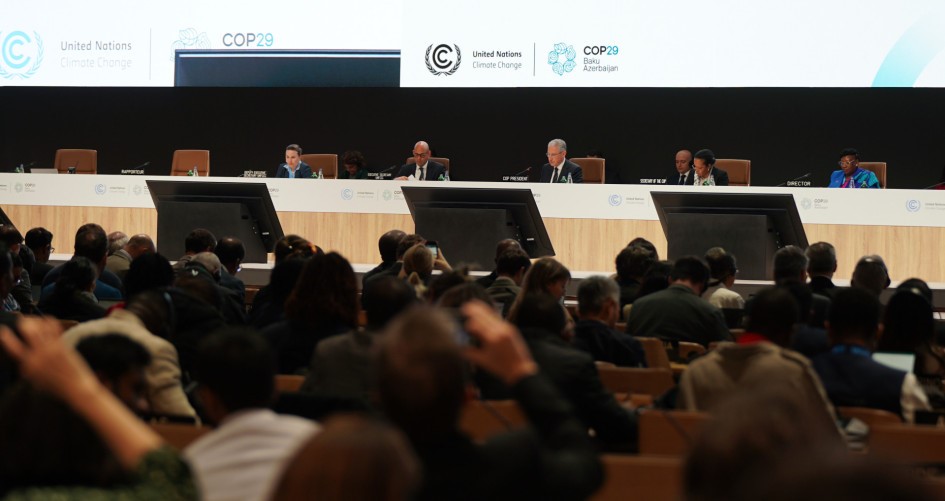
- 26 Nov 2024
In News:
The 29th UN Climate Change Conference (COP29), held in Baku, Azerbaijan, focused on enhancing climate finance, adaptation measures, and global cooperation.
Key Outcomes of COP29:
- Climate Finance: A new goal was set to triple climate finance for developing countries to USD 300 billion annually by 2035. The total climate finance target aims for USD 1.3 trillion annually by 2035.
- Carbon Markets: The conference operationalized Article 6 of the Paris Agreement, which establishes frameworks for carbon credit trading between countries. It also launched the Paris Agreement Crediting Mechanism, ensuring safeguards for human rights and the environment.
- Transparency and Adaptation: COP29 saw 13 countries submit their Biennial Transparency Reports, promoting greater accountability. The Baku Adaptation Roadmap was launched to speed up National Adaptation Plans (NAPs) in Least Developed Countries (LDCs).
- Gender and Inclusivity: A new Gender Action Plan was developed, and the Lima Work Programme on Gender was extended for another 10 years. Over 55,000 people, including civil society, Indigenous peoples, and youth, participated.
- Global Climate Action: The 2024 Yearbook of Global Climate Action highlighted the role of non-Party stakeholders like businesses and sub-national actors in combating climate change.
India’s Role at COP29: India played an active role in highlighting resilient infrastructure initiatives like the Coalition for Disaster Resilient Infrastructure (CDRI) and advocated for financial resources to support Small Island Developing States (SIDS). India also pushed for solar energy adoption through the International Solar Alliance (ISA) and promoted gender-inclusive climate policies. India co-hosted the LeadIT summit with Sweden, focusing on industrial decarbonization.
Challenges at COP29:
- Inadequate Finance: Despite ambitious targets, many countries felt the financial commitments were insufficient and distant.
- Private Sector Dependency: The reliance on private sector contributions raised concerns about the reliability of funding.
- Emission Reduction Gaps: There was a lack of sufficient pledges to meet the 1.5°C global warming target, with rising emissions.
- Geopolitical Conflicts: Disputes over issues like the Carbon Border Adjustment Mechanism (CBAM) hindered progress.
India’s Carbon Credit Framework:
India introduced the Energy Conservation (Amendment) Act, 2022, establishing a domestic carbon market and setting a legislative framework for carbon credit trading. This aligns with India’s NDCs and aims to support sustainable growth while reducing emissions. However, concerns about the integrity of carbon credits and potential "greenwashing" need to be addressed through rigorous verification systems.
Conclusion:
COP29 marked progress in scaling up climate finance, carbon markets, and adaptation efforts, but significant challenges remain, especially in finance, emission reductions, and geopolitical cooperation. India's initiatives in carbon credit frameworks and resilience are steps toward a sustainable future. Moving forward, a collaborative, transparent, and adaptive approach is crucial to meet global climate goals.
India’s Agricultural Sector
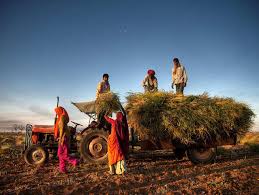
- 23 Nov 2024
In News:
India’s agricultural sector, which employs 42.3% of the population, is crucial to the nation’s economy. However, it faces a range of challenges that need to be addressed to ensure long-term stability, food security, and sustainable growth.
Current Performance of India’s Agricultural Sector
- Key Agricultural Metrics and Growth
- Foodgrain Production: India produced 330.5 million metric tonnes (MT) of foodgrains in 2022-23, maintaining its position as the world’s second-largest producer.
- Horticulture Production: A record high of 351.92 million tonnes in horticultural production was achieved, marking a 1.37% increase from the previous year.
- Market Outlook
- India’s agricultural market is projected to reach USD 24 billion by 2025.
- The food and grocery retail sector is ranked as the sixth-largest globally, with 70% of its sales generated from retail.
- Investment and Export Trends
- FDI in Agriculture: From April 2000 to March 2024, the agricultural services sector attracted USD 3.08 billion in foreign direct investment, while the food processing industry garnered USD 12.58 billion.
- Agricultural Exports: India’s agricultural and processed food exports reached USD 4.34 billion in 2024-25, including products like marine products, rice, and spices.
Key Challenges Confronting India’s Agriculture
- Climate Change and Environmental Impact:Extreme weather events, such as heatwaves and erratic rainfall, continue to impact agricultural productivity. In 2023, India experienced its second-warmest year on record, contributing to crop damage and rising food prices.
- Water Stress and Irrigation Inefficiency: Agriculture consumes the majority of India’s water resources, but irrigation efficiency is still low. The country relies heavily on flood irrigation, which leads to significant water wastage. Only 11% of agricultural land is under micro-irrigation, far below global standards.
- Land Fragmentation and Declining Farm Sizes: The average size of agricultural farms has decreased from 1.08 hectares in 2016-17 to 0.74 hectares in 2021-22, hindering the adoption of modern farming practices and mechanization.
- Market Access and Price Realization: Farmers continue to face challenges in accessing fair market prices due to the dominance of intermediaries and inadequate market infrastructure. Despite reforms like e-NAM, price gaps between farm-gate and retail prices persist, leaving farmers with a smaller share of the final price.
- Technology Adoption and Digital Divide: Although agritech is growing in India, only 30% of farmers use digital tools in agriculture, and rural digital literacy is just 25%, which limits the widespread adoption of modern farming solutions.
Addressing Structural Issues in Indian Agriculture
- Soil Health and Sustainability:The excessive use of chemical fertilizers and mono-cropping practices has led to soil degradation. Approximately 30% of agricultural land in India is experiencing degradation, impacting productivity and sustainability. Stubble burning further exacerbates this issue, worsening air quality and soil health.
- Crop Diversification Challenges:Many farmers are locked into the wheat-rice cycle due to Minimum Support Price (MSP) guarantees, limiting the cultivation of other crops like pulses and oilseeds. Although India is the largest producer of pulses, the domestic production is insufficient to meet the growing demand.
- Feminisation of Agriculture:Women make up 63% of agricultural workers but own only 11-13% of the operational land, limiting their access to resources and decision-making power. This gender disparity hampers their economic security and limits their participation in agricultural development.
Conclusion
India’s agricultural sector holds immense potential but is facing significant structural challenges that must be addressed to ensure its long-term growth and sustainability. Urgent reforms are needed to address issues like climate vulnerability, inefficient irrigation, land fragmentation, and limited market access. Additionally, fostering technology adoption, improving infrastructure, and addressing gender disparities will be crucial for improving the sector's performance and securing India’s food security needs.
Earning Instead of Burning
- 21 Nov 2024
In News:
Paddy straw burning, prevalent in Punjab, Haryana, and Uttar Pradesh, contributes to severe air pollution, especially during the post-harvest period in October and November. Despite various government measures and subsidies to reduce stubble burning, it continues due to economic and operational constraints faced by farmers. To address this issue, innovative technologies for the productive use of paddy straw need to be explored.
Stubble Burning: Causes and Consequences
Reasons for Stubble Burning
- Short Crop Cycles: The narrow window between paddy harvest and wheat sowing forces farmers to burn straw to prepare fields quickly.
- Economic Constraints: High costs of alternative residue management methods.
- Lack of Awareness: Farmers are often unaware of sustainable alternatives.
- Limited Mechanization: Availability of crop residue management machinery is inadequate.
- Policy Gaps: Ineffective enforcement of regulations and insufficient incentives.
Consequences of Stubble Burning
- Air Pollution: Emission of harmful pollutants like PM2.5, CO2, and CO contributes to air quality degradation.
- Health Hazards: Increased respiratory illnesses due to the inhalation of toxic fumes.
- Soil Degradation: Loss of essential nutrients and organic matter.
- Climate Change: Stubble burning releases greenhouse gases into the atmosphere.
- Economic Costs: Increased health care costs and loss of soil fertility.
Technologies for Paddy Straw Utilization
Large-Scale Technologies
- Direct Combustion:Burns rice straw under controlled conditions to generate heat for cooking and industrial uses. While its calorific value is lower than that of petrol and diesel, it is still viable for local energy generation.
- Pyrolysis and Gasification:
- Pyrolysis: Converts rice straw into bio-oil through heating at 200-760°C in the absence of oxygen.
- Gasification: Converts rice straw into syngas at higher temperatures (480-1,650°C) with limited oxygen. Challenges include low gas production and tar accumulation.
- Biochar Production:Rice straw is incinerated at lower temperatures to produce biochar, which is used as a soil conditioner to improve fertility, water retention, and reduce greenhouse gas emissions.
- Power Generation:Biomass-based power plants use rice straw to generate electricity, providing a sustainable energy source, especially for rural areas. States like Punjab, Haryana, and Uttar Pradesh are scaling up such plants.
- Pellet Production:Rice straw is compressed into compact pellets, improving its density, transportability, and combustion efficiency. These pellets can partially replace coal in power plants, offering an alternative use for crop residue.
- Biofuels:Conversion of rice straw into biofuels like ethanol and biogas helps reduce dependency on fossil fuels and supports the renewable energy transition.
- Paper Production:Rice straw, with its high cellulose content, is used as an eco-friendly alternative to wood in the paper and pulp industry, reducing environmental impact.
Small-Scale Technologies
- Composting:Rice straw can be composted to produce organic fertilizer, enhancing soil health. Vermicomposting is another effective method, though awareness among farmers remains low.
- Mushroom Cultivation:Rice straw serves as an ideal substrate for growing mushrooms, particularly species like Volvariellavolvacea. This practice provides an additional income source for farmers.
- Silica Extraction:Rice straw contains high silica content, which can be extracted for industrial applications like construction and electronics.
- Fodder for Ruminants:Though rice straw is low in digestibility due to high silica content, it can be used as animal feed after pre-treatment, such as drying, grinding, or chemical processes to enhance its nutritional value.
- Adsorbent for Pollution Control:Rice straw can be used to remove heavy metals and toxins from contaminated water, showing promise in environmental cleanup efforts.
- Soil Incorporation:Instead of burning, rice straw can be incorporated directly into the soil to improve fertility, moisture retention, and crop yield. This practice is already being adopted in regions like Punjab and Haryana.
Conclusion: Path Forward
Stubble burning continues to be a significant environmental challenge, but the development and adoption of technologies for utilizing paddy straw can offer viable solutions. Both large- and small-scale technologies can convert rice straw into valuable products like biofuels, power, and fertilizers. To ensure widespread implementation, efforts must be made to increase awareness among farmers and stakeholders, coupled with strong policy support and infrastructural investment. A collaborative approach involving the government, industries, and farmers is essential for sustainable management of rice straw, benefiting both the environment and the economy.
Reimagining Governance with AI: The Promise of GovAI

- 20 Nov 2024
In News:
India's rapid digital transformation, coupled with the advancements in Artificial Intelligence (AI), presents a unique opportunity to reimagine governance. The concept of GovAI—using AI to enhance public administration—holds the potential to revolutionize governance, improve efficiency, and create more responsive and inclusive public systems.
Digital Transformation in Governance
- Evolution of Digital Public Infrastructure (DPI)
- Over the past decade, India has made significant strides in digital governance through the development of Digital Public Infrastructure (DPI). DPI has reduced inefficiencies, enhanced transparency, and improved service delivery, transforming India's governance landscape.
- Impact of AI on Governance
- As AI becomes a critical enabler in various sectors, its application to governance promises to deliver more efficient, inclusive, and responsive government services. The potential of AI lies in its ability to provide more with less, driving innovation across key public services.
Key Trends Driving GovAI
- Rapid Digitalization of India
- Currently, 90 crore Indians are connected to the Internet, with projections indicating 120 crore by 2026, positioning India as the most connected country globally.
- Digitalization serves as the backbone for AI-driven governance, enabling efficient data collection, analysis, and informed policy-making.
- Data as a Valuable Resource
- The rapid digitalization of India has led to the generation of vast amounts of data. This data serves as the fuel for AI models, which can be used to enhance governance.
- Programs like the IndiaDatasetsProgramme aim to harness government datasets for AI development while safeguarding data privacy through legislation.
- Demand for Efficient Governance
- The post-COVID world has underscored the need for governments to deliver better outcomes with fewer resources. AI has the potential to optimize the use of public resources, enabling more efficient and targeted governance.
India’s Leadership in AI-Driven Governance
- Positioning India as a Global Leader
- India’s digital governance initiatives have placed it at the forefront of AI adoption in the public sector. Through GovAI, India can solidify its position as a global leader in using technology for public good.
- As the Chair of the Global Partnership on AI (GPAI), India is advocating for the inclusive development of AI to ensure that it benefits all nations, not just a select few.
- Role of Innovation Ecosystem
- India’s innovation ecosystem, comprising startups, entrepreneurs, and tech hubs, can play a crucial role in driving the development of AI models, platforms, and apps for governance.
- A strong partnership between the government and private sector is essential to successfully deploy AI solutions across various sectors of governance.
Potential Benefits of GovAI
- Enhanced Efficiency and Service Delivery
- AI-powered tools, such as chatbots, can provide citizens with 24/7 assistance, streamlining public service delivery and reducing waiting times.
- AI can help in automating processes and improving the overall efficiency of government operations.
- Data-Driven Decision-Making
- AI can analyze large datasets to make informed policy decisions and design targeted interventions in sectors like healthcare, education, and social welfare.
- Data-driven insights can enhance the effectiveness of welfare schemes, improving outcomes for marginalized communities.
- Increased Transparency and Accountability
- AI can enhance transparency in governance by minimizing human intervention in processes, thus reducing corruption and ensuring efficient use of public resources.
- Predictive analytics and real-time data monitoring can enable proactive governance, preventing issues before they escalate.
Challenges and Drawbacks of GovAI
- Privacy Concerns
- The use of AI in governance requires the collection and analysis of vast amounts of personal data, raising concerns about data privacy and surveillance.
- Robust data protection laws must be enforced to ensure citizens' data is handled responsibly.
- Accountability and Bias
- AI systems may produce biased outcomes depending on the data they are trained on. Ensuring accountability for decisions made by AI systems remains a challenge, particularly when errors or biases occur.
- Transparent mechanisms must be established to hold AI systems accountable for their actions.
- Increased State Control and Surveillance
- The integration of AI in governance could lead to increased state control, potentially compromising individual freedoms. Ensuring that AI is used responsibly to balance power between the government and citizens is critical.
- Digital Divide
- The benefits of AI in governance may not be evenly distributed across the population, exacerbating the digital divide.
- Efforts must be made to ensure that marginalized communities, without access to digital technologies or skills, are not left behind.
Conclusion
- Balancing Benefits and Risks
- The integration of AI into governance systems presents significant benefits, including enhanced efficiency, transparency, and proactive governance. However, there are challenges related to privacy, accountability, and state control.
- To ensure AI serves the public good, India must implement strong regulatory frameworks, promote transparency, and develop ethical AI systems that respect citizens’ rights and freedoms.
- Moving Toward Maximum Governance
- AI can help realize the vision of maximum governance, enabling more effective and targeted interventions across sectors like healthcare, security, education, and disaster management.
- The success of GovAI will depend on a trusted partnership between the government, private sector, and innovation ecosystem, ensuring that AI technology serves the larger public interest.
Sustainable Path to Net-Zero for India
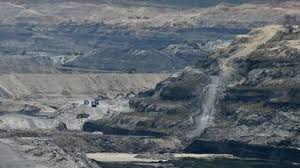
- 19 Nov 2024
In News:
India's commitment to achieving net-zero carbon emissions by 2070 presents a significant challenge, with only 45 years remaining to reach this ambitious target. The path to net-zero requires a balancing act between economic development, energy security, and climate adaptation. India’s efforts to meet its climate goals will be shaped by multiple factors, including resource constraints, land use, and financial limitations.
Why Net-Zero at All?
- Scientific Consensus on Climate Change
- Climate change is a growing concern, with the global temperature rise already reaching 1.1°C above pre-industrial levels.
- To avoid catastrophic impacts, the world needs to limit the temperature rise to 1.5°C. The remaining global carbon budget for this target is around 400-500 billion tonnes of CO?.
- Necessity of Sharp Emission Reductions
- Countries must drastically reduce emissions to stay within the carbon budget. Achieving net-zero emissions is essential for maintaining global climate stability.
Equity in Net-Zero Transitions
- Developed vs. Developing Countries
- Developed nations, historically responsible for a large share of emissions, are expected to lead the transition. However, they have not met the financial and technological support commitments for developing countries.
- Developing nations like India, with low per capita emissions, are under pressure to balance climate action with economic development.
- Climate Justice
- India’s per capita emissions are among the lowest globally, but the richest 10% of Indians contribute significantly to national emissions, exacerbating inequality.
- The impacts of climate change disproportionately affect the economically weaker sections, making the transition to net-zero not only an environmental challenge but a social justice issue as well.
The Challenge of Balancing Development and Sustainability
- Limits of India’s Resources
- India faces resource constraints, including land, water, and biodiversity, which limit the feasible expansion of renewable energy capacity.
- Meeting energy demands while ensuring food security, forest cover, and biodiversity preservation becomes increasingly challenging as energy requirements rise.
- Sustainable Consumption vs. Aspirational Lifestyles
- India’s aspiration to emulate the developed world’s lifestyle is unsustainable due to limited resources, which could lead to severe consequences like groundwater depletion, heat stress, and biodiversity loss.
- The focus should be on sufficiency consumption corridors, ensuring that consumption meets developmental goals without exceeding sustainable limits.
Projected Power Demand and Renewable Energy Targets
- Rising Power Demand
- India’s power demand could increase nine to ten-fold by 2070. Meeting this demand entirely via renewable energy requires significant expansion in energy generation capacity:
- 5,500 GW of solar energy
- 1,500 GW of wind energy
- India’s power demand could increase nine to ten-fold by 2070. Meeting this demand entirely via renewable energy requires significant expansion in energy generation capacity:
- Land Use Constraints
- To meet these targets, India must address land-use trade-offs. Expanding beyond 3,500 GW of solar and 900 GW of wind would require significant compromises in land availability for other uses, including agriculture and conservation.
Strategic Pathways to Net-Zero: Demand and Supply Measures
- Demand-Side Measures
- Energy-efficient construction: Use of better materials and passive designs to reduce cooling energy demand.
- Urban transport: Shift to public and non-motorized transport to reduce energy consumption in cities.
- Dietary choices: Promoting sustainable dietary practices to reduce the carbon footprint of food systems.
- Electrification: Focus on alternative fuels and energy-efficient appliances.
- Supply-Side Measures
- Decentralization of Energy Production: Expanding rooftop solar panels and solar pumps for agriculture.
- Nuclear Power Expansion: Increase nuclear energy to provide a low-carbon baseload and complement renewable sources like solar and wind, which are intermittent.
The Role of International Cooperation and Financial Support
- Global Cooperation
- Global climate action requires alignment between national interests, which may not always coincide, as seen in the context of the U.S. presidential election potentially influencing global climate policy.
- India’s path to net-zero depends heavily on international climate financing, technology transfer, and collaborative efforts to address climate justice.
- Equitable Financing for Developing Countries
- Developed countries are expected to provide financial support to developing nations like India to achieve climate goals. However, this support has been insufficient to date.
Conclusion: India’s Balancing Act
India faces a challenging balancing act as it seeks to provide quality of life for its growing population while achieving its climate adaptation and mitigation goals. The path to net-zero will require careful management of economic growth, energy production, and resource conservation. India must focus on demand-side strategies to reduce energy consumption and increase efficiency while expanding renewable energy infrastructure in a sustainable manner. Additionally, international cooperation and financial support will be crucial in ensuring that India’s transition to net-zero is equitable, efficient, and aligned with its developmental priorities.
Andhra Pradesh's Natural Farming Model
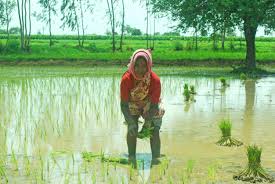
- 18 Nov 2024
In News:
Andhra Pradesh's (AP) natural farming model presents a transformative opportunity to reshape the state’s agricultural landscape by 2050. An analysis by the Food and Agriculture Organization (FAO), in collaboration with the AP government, reveals how scaling natural farming could employ more farmers, increase incomes, and foster sustainable agricultural practices, potentially surpassing the benefits of conventional industrial agriculture.
AgroEco2050: Exploring Two Agricultural Futures
The AgroEco2050 initiative aimed to envision two possible futures for Andhra Pradesh’s agricultural systems by 2050:
- Industrial Agriculture Path: Focusing on intensification of conventional farming, relying heavily on chemicals, machinery, and monocultures.
- Natural Farming Path: Expanding agroecological practices, relying on regenerative, chemical-free farming methods to create more jobs, better livelihoods, and improve the environment.
The study compared these pathways, analyzing their impacts on employment, income, food production, biodiversity, and land use.
Key Findings: Natural Farming’s Impact on Employment and Income
- Employment Growth
- By 2050, natural farming would employ twice as many farmers as industrial agriculture: 10 million compared to 5 million.
- Unemployment in natural farming would decrease to 7%, in stark contrast to a projected 30% unemployment rate in the industrial agriculture scenario.
- Farmer Income
- Natural farming is expected to be more profitable for farmers due to lower input costs (seeds, fertilizers, machinery) and higher market prices for high-quality produce.
- The income gap between farmers and non-farmers, which stood at 62% in 2019, would decrease to 22% under natural farming by 2050, a sharp improvement compared to the 47% gap predicted under industrial agriculture.
What is Natural Farming?
Natural farming is an ecological, chemical-free farming system that emphasizes the use of locally available resources. Key practices include:
- Biodiversity-based pest management
- On-farm biomass recycling (e.g., mulching)
- Indigenous techniques like using cow dung and urine for soil fertility.
Globally recognized as a form of regenerative agriculture, it offers a sustainable alternative to industrial agriculture by sequestering carbon and restoring soil health.
Global Adoption
States like Andhra Pradesh, Karnataka, Himachal Pradesh, and others are already adopting natural farming. While still evolving, its acceptance among farmers is steadily growing.
Zero Budget Natural Farming (ZBNF) in Andhra Pradesh
Origin and Growth
- In 2016, Andhra Pradesh launched the Zero Budget Natural Farming (ZBNF) initiative to offer a sustainable alternative to capital-intensive agriculture.
- This program, implemented by RythuSadhikaraSamstha, targets covering 6 million farmers across 6 million hectares.
National Recognition
The ZBNF approach gained national attention when it was featured in the 2019 Union Budget, aimed at doubling farmers' incomes by 2022. The central government now promotes this model under the Paramparagat Krishi Vikas Yojana (PKVY).
Challenges in Scaling Natural Farming
- Farmer Training and Support
- Farmers need ongoing education and support to transition effectively to natural farming. Current training systems often fail to address the full scope of their needs.
- Certification Barriers
- The certification process for organic farming, including Participatory Guarantee Systems (PGS) and third-party certifications, is complex and costly, presenting a barrier for small-scale farmers.
- Marketing and Procurement Challenges
- There is a lack of effective marketing systems for organic products, which hampers the ability of farmers to sell their produce at fair prices.
- Without strong procurement or buy-back systems, farmers may struggle to find markets for their products.
- Policy and Funding Gaps
- Organic and natural farming programs still receive minimal funding compared to subsidies for chemical fertilizers, impeding large-scale adoption.
- Slow state-level implementation and a continued reliance on chemical inputs also delay the widespread shift to natural farming.
Moving Forward
- Scientific Research on Yields
- To address concerns about lower yields for staple crops, more scientific research is needed to assess the long-term viability of natural farming, especially for crops like wheat and rice, which are crucial for India’s food security.
- Localized Adoption
- Natural farming may be best suited for non-staple crops or localized farming, balancing sustainability with the need for food security.
- Risk Mitigation for Food Security
- Careful evaluation of natural farming’s impact on staple crop yields is necessary to avoid the food security risks witnessed in countries like Sri Lanka, where a sudden shift to organic farming led to reduced yields and increased prices.
Conclusion
The Andhra Pradesh natural farming model offers a promising alternative to industrial agriculture, with the potential to create jobs, improve farmers' incomes, and promote environmental sustainability. However, for this vision to become a reality, significant efforts must be made to address challenges related to training, certification, marketing, and funding. With continued research, policy support, and community involvement, natural farming can play a crucial role in feeding the future and promoting a more sustainable agricultural system.
Significance of LignoSat
- 12 Nov 2024
Introduction
- LignoSat is the world's first satellite constructed with wood, developed to test the viability of using timber as a sustainable material in space exploration.
- Launched on November 5, 2024, the satellite was sent to the International Space Station (ISS) aboard a SpaceX Dragon cargo capsule and will be released into orbit after a month for a six-month test.
What is LignoSat?
- Dimensions: LignoSat measures 4 inches (10 cm) on each side and weighs 900 grams.
- Material Composition: The satellite features panels made from magnolia wood using traditional Japanese craftsmanship, without screws or glue.
- Development Collaboration: LignoSat was developed by Kyoto University and Sumitomo Forestry, in collaboration with various researchers and space organizations.
Purpose and Objectives of the Mission
- Testing Timber in Space:
- The primary goal is to study how wood performs in the extreme conditions of space, where temperatures fluctuate dramatically between -100°C to 100°C.
- The satellite will also assess how wood interacts with space radiation and its potential to reduce the impact of radiation on sensitive electronics, such as semiconductors.
- Space Sustainability:
- LignoSat aims to demonstrate that wood can be a sustainable, renewable alternative to metals (like aluminium) traditionally used in spacecraft construction.
- The satellite will help determine if wood can be used in future space missions, potentially reducing reliance on non-renewable materials.
Testing the Durability of Wood in Space
- Challenges of Space Environment:
- Space is an extremely harsh environment with extreme temperature variations, exposure to radiation, and the lack of water and oxygen, all of which affect material durability.
- Unlike Earth, where wood decomposes due to moisture and oxygen, space's vacuum conditions could potentially preserve the wood's integrity, providing valuable insights into its durability.
- Previous Use of Wood in Space:
- Wood has already been tested in space applications: cork has been used on spacecraft to withstand re-entry conditions.
- The LignoSat mission builds on this knowledge, aiming to test wood's performance in space's high-radiation and vacuum environment.
Potential Advantages of Using Wood in Space Exploration
- Sustainability and Environmental Benefits:
- Unlike conventional aluminium satellites, which generate harmful pollutants upon re-entry (e.g., aluminium oxides), LignoSat's wooden components will degrade in a more environmentally friendly manner, minimizing atmospheric pollution.
- As space exploration increases, particularly with mega-constellations (e.g., SpaceX’s Starlink), space debris management becomes critical. Using wood could reduce the environmental impact of satellite disposal.
- Renewable Resource:
- Wood is a renewable resource, which offers a potential solution to the growing demand for materials used in space technology.
- Kyoto University researchers have long been exploring the idea of building habitats on the Moon and Mars using timber, with LignoSat seen as a stepping stone to proving the material's space-grade capabilities.
LignoSat's Design and Construction
- Hybrid Construction:
- While the outer panels of LignoSat are made from magnolia wood, the satellite still incorporates traditional aluminium structures and electronic components inside.
- The hybrid construction allows researchers to compare the performance of wood against conventional materials used in spacecraft.
- Testing Methods:
- LignoSat will orbit Earth for six months and monitor the wood’s reaction to space conditions, providing valuable data for future space missions.
- Sensors embedded in the satellite will track various environmental factors, such as radiation exposure, temperature fluctuations, and the structural integrity of the wood.
The Long-Term Vision: Building Timber Habitats in Space
- The research team, led by Takao Doi (astronaut and Kyoto University professor), envisions a future where timber is used for constructing space habitats on the Moon and Mars.
- The team’s ultimate goal is to plant trees in space and develop timber houses on extraterrestrial bodies, providing a sustainable, self-sufficient environment for humans in space.
Broader Implications for Space Exploration
- Sustainability in Space Missions:
- LignoSat represents an innovative step toward more sustainable space technologies by investigating eco-friendly materials that can minimize the environmental impact of space missions.
- It aligns with global efforts to make space exploration more sustainable, especially as space tourism and colonization plans grow.
- Future Prospects:
- If successful, LignoSat could pave the way for wood-based materials being used in spacecraft construction, not only for satellites but also for space stations and future human habitats in space.
Conclusion
- LignoSat’s mission marks a significant milestone in space exploration by exploring wood as a sustainable material in space technology.
- As the first wooden satellite, its results could pave the way for more eco-friendly, renewable materials in future space missions, aligning with global goals for sustainability and reducing space-related pollution.
Bharat 6G Mission
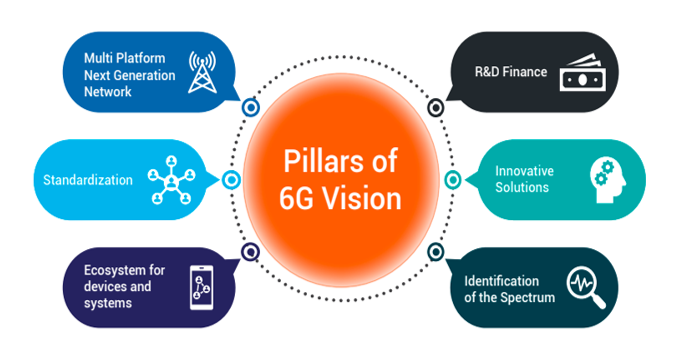
- 10 Nov 2024
In News:
India aspires to lead the world in 6G technology by 2030 through the Bharat 6G Mission. This initiative builds upon the successful rollout of 5G, which reached 98% of districts in just 21 months.
Key Features of 6G Technology
- Terahertz (THz) Frequencies: 6G will utilize THz waves capable of transmitting significantly more data than 5G, offering ultra-fast data rates.
- Massive MIMO (Multiple Input Multiple Output): Supports a large number of devices and simultaneous connections using multiple antennas, improving data transmission and reception.
- Network Slicing: Creates specialized, smaller networks tailored to specific traffic types, such as video streaming or industrial automation.
- Enhanced Security: Incorporates advanced encryption and authentication protocols to safeguard sensitive data.
- Ultra-Reliable Low Latency Communication (URLLC): Ensures ultra-low latency, critical for applications like industrial automation, virtual reality (VR), and augmented reality (AR).
- Integrated Intelligent Reflecting Surfaces (IIRS): Enhances signal strength and quality, particularly in areas with poor reception.
- High-Speed Data Transfer: Supports data communication over hundreds of GHz or THz frequencies, facilitating faster transfer rates.
Government Initiatives for 6G Development
Bharat 6G Vision and Strategy
- Goal: To design, develop, and deploy 6G technologies, ensuring secure, intelligent, and pervasive global connectivity.
- Core Principles:
- Affordability, sustainability, and ubiquity aligned with the vision of Atmanirbhar Bharat (self-reliant India).
- Strategic Objectives:
- Promote R&D through startups, universities, and industries.
- Develop affordable 6G solutions and global IP contributions.
- Focus on transformative applications to enhance quality of life.
Technology Innovation Group (TIG) on 6G
- Established: November 1, 2021.
- Task Forces:
- Focus on multidisciplinary solutions, spectrum management, devices and networks, international standards, and R&D funding.
Bharat 6G Alliance
- A collaborative effort between Indian industry, academia, and research institutions to develop 5G advancements, 6G products, and patents.
- Global Alignment: Partners with organizations like the Next G Alliance (US), 6G Flagship (Finland), and South Korea’s 6G Forum.
Applications of 6G Technology
Application Area
Description
Healthcare
Real-time patient monitoring and AI-connected devices.
Agriculture
IoT and AI-driven predictive systems for crop health and irrigation.
Defense & Internal Security
Enhanced surveillance, communication, and unmanned operations.
Disaster Response
High-volume communication for emergency coordination.
Transportation
Ultra-low latency for urban air mobility and traffic management.
Education
High-speed remote learning, immersive AR/VR-enabled classrooms.
Metaverse
3D holographic displays and seamless virtual interactions.
Industrial Automation
Smart factories with enhanced operational efficiency through real-time data.
Smart Cities
Efficient urban infrastructure and real-time monitoring using IoT.
Entertainment & Media
Higher-quality streaming, immersive content delivery.
Environmental Monitoring
Real-time data collection for resource management and conservation.
Challenges in 6G Development
- Technical Complexity: Development of advanced components and subsystems makes 6G technology highly complex.
- Infrastructure Deployment: Significant investment and regulatory support are required for the necessary infrastructure upgrades.
- Spectrum Allocation: The limited availability of spectrum poses challenges in balancing competing demands for bandwidth.
- Security Concerns: High-speed data transmission increases vulnerability to cyber threats, necessitating robust security protocols.
- Standardization Issues: Achieving global consensus on standards for 6G interoperability can be slow and contentious.
- Global Collaboration: Effective international cooperation is critical for technological and regulatory alignment.
Conclusion
India’s Bharat 6G Mission represents a visionary approach to maintaining technological leadership in the rapidly evolving global digital landscape. By investing in research, fostering international collaborations, and pursuing policies aligned with Atmanirbhar Bharat, India can harness 6G to fuel socio-economic growth and strengthen global connectivity.
Zeroing in on Methane Diplomacy, at COP29
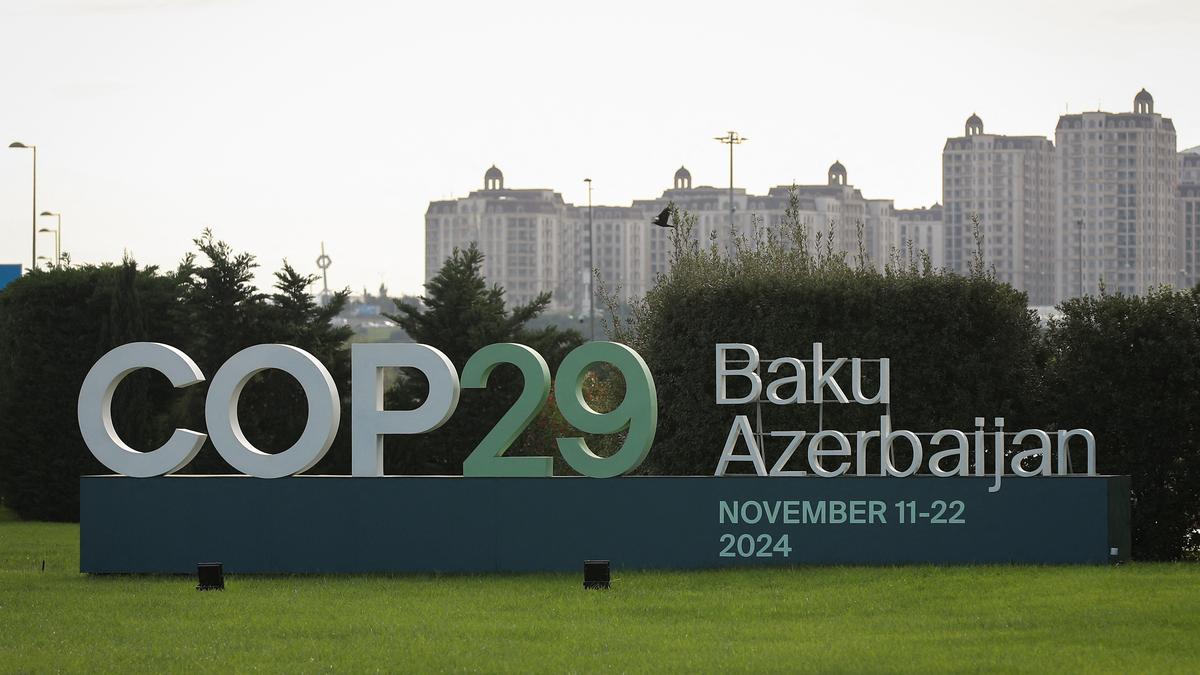
- 07 Nov 2024
In News:
From November 11 to 22, 2024, global leaders will gather in Baku, Azerbaijan, for the 29th Conference of Parties (COP29) under the United Nations Framework Convention on Climate Change (UNFCCC). This year’s summit, known as the Finance COP, will focus on setting a new global climate finance target—the New Collective Quantified Goal (NCQG).
A key focus of the summit is the reduction of methane emissions, as countries aim to curb near-term temperature increases, which buys critical time for long-term CO2 reductions necessary for stabilizing climate change.
U.S.-China Collaboration and Methane Reduction
US-China Collaboration Despite Geopolitical Tensions
Despite ongoing geopolitical tensions, the United States and China have found common ground on the issue of methane reduction. Both nations recognize the importance of addressing methane emissions, which are more potent in the short term than CO2. They, along with the United Arab Emirates, organized a summit at COP28 to discuss methane and other non-CO2 pollutants.
China’s National Plan for Methane Emissions
In November 2023, China launched its first national methane reduction plan, emphasizing capacity-building efforts over explicit reduction targets. This plan marked a significant step in China’s climate policy, underscoring its commitment to mitigating methane emissions alongside the U.S.
Given that China and the U.S. are the two largest contributors to methane emissions globally, their collaboration presents a significant opportunity for global climate mitigation efforts. India, the third-largest emitter of methane, could benefit from this partnership by seeking financial support and technical expertise to address its methane challenges.
India’s Methane Emissions Profile and Challenges
Emissions Breakdown
India’s Third Biennial Update Report to the UNFCCC indicates that in 2016, India emitted approximately 409 million tons of CO2-equivalent methane. The major sources of these emissions include:
- Agriculture: 74% (mainly from livestock and rice cultivation)
- Waste: 14% (unmanaged organic waste in landfills and dumpsites)
- Energy: 11%
- Industrial processes: 1%
Due to the dominant role of agriculture, India has been cautious about committing to stringent methane reduction targets. Initiatives like the Global Methane Pledge, which calls for a 30% reduction from 2020 levels by 2030, have not been fully embraced.
Environmental and Health Impact of Methane Emissions
Methane-related fires at waste dumpsites, such as the Bhalswa dump in Delhi (2022), have highlighted the broader environmental and health risks of methane emissions. These fires contribute significantly to air pollution, making it urgent for India to address methane in its waste management and agricultural sectors.
India’s Initiatives for Methane Reduction
Waste Management Programs
- Comprehensive Waste Management Framework India’s waste management sector is a significant source of methane, contributing 14% of the nation’s total emissions. Although a comprehensive regulatory framework for waste management has been developed, implementation remains slow due to local capacity constraints and financial limitations.
- Innovative Solutions Indore, a city in Madhya Pradesh, has pioneered waste sorting and biomethane production. The city's initiative includes:
- Sorting organic waste
- Converting it into biogas to fuel city buses
This model has gained national attention and is being considered for replication in other cities.
- GOBARdhan Scheme Launched as part of the Swachh Bharat Mission-Urban 2.0, the Galvanizing Organic Bio-Agro Resources Dhan (GOBARdhan) scheme encourages rural communities to convert cattle manure and other organic waste into biogas and compost, reducing methane emissions from livestock waste while providing additional income to rural households.
Agricultural and Livestock Emission Reduction
- National Mission for Sustainable Agriculture (NMSA) The NMSA promotes climate-resilient agricultural practices that reduce methane emissions. For example, Alternate Wetting and Drying (AWD) is a water-saving technique used in rice farming that reduces methane emissions by limiting anaerobic decomposition.
- National Livestock Mission Under the National Livestock Mission, practices such as improved fodder management, silage making, and Total Mixed Ration (TMR) feeding are being promoted. These practices reduce methane emissions from livestock by improving digestion and feed efficiency.
Opportunities for India at COP29
Leveraging U.S.-China Methane Partnership
COP29 offers India an opportunity to leverage the U.S.-China collaboration on methane reduction. By engaging with these two major emitters, India can seek:
- Financial support
- Technical assistance
- Capacity-building resources, particularly for its waste sector, which is a significant source of methane emissions.
Accurate data on methane emissions, such as satellite-based monitoring, can help India refine its emission inventories and enhance the effectiveness of its methane mitigation efforts.
Fast-Tracking India’s Methane Reduction Efforts
Although methane is not the primary focus at COP29, India has an opportunity to fast-track its efforts in methane reduction. The country's existing policies and initiatives, such as waste management programs and agricultural missions, provide a foundation upon which international collaboration can build.
Recent data from satellite monitoring in cities like Delhi and Mumbai shows that actual methane emissions from waste dumpsites may be 50%-100% higher than previously estimated, highlighting the urgency of addressing this issue.
Conclusion
Although methane may not dominate the COP29 agenda, it represents a critical pathway for India to accelerate its climate action. With the groundwork already laid through domestic policies and innovative solutions, India now requires enhanced financial and technical backing to scale up its methane reduction initiatives. By engaging proactively at COP29, India has a unique opportunity to secure the resources needed to tackle methane emissions, benefiting both its citizens and the global fight against climate change.
RBI brings back 102 tonnes gold from BoE; 60 per cent reserves in India

- 04 Nov 2024
In News:
England over the past two-and-a-half years, reflecting a strategic shift in its approach to safeguarding gold reserves. This move marks a significant increase in the RBI's domestic gold holdings.
Rise in the RBI's Domestic Gold Holdings
- Current Status (September 2024):The RBI's domestic gold reserves have grown to 510.46 metric tonnes, up from 295.82 metric tonnes in March 2022.
- Reduction in Gold Held Abroad:The gold held under the custodianship of the Bank of England has decreased to 324 metric tonnes from 453.52 metric tonnes in March 2022.
- Gold as a Share of Foreign Exchange Reserves:The proportion of gold in India's total foreign exchange reserves increased from 8.15% in March 2024 to 9.32% in September 2024.
Gold Kept in the Bank of England
- Overview of the Bank of England's Gold Vault:The Bank of England is home to one of the largest gold vaults in the world, second only to the New York Federal Reserve, housing around 400,000 bars of gold.
- India’s Gold Held Abroad:The RBI continues to retain 324 metric tonnes of its gold with the Bank of England and the Bank for International Settlements (BIS).
- Additional Gold Management:Around 20 tonnes of gold are managed through gold deposit schemes.
- Strategic Role of London’s Gold Market:Storing gold in London provides immediate access to the global London bullion market, enhancing liquidity for India’s gold assets.
Historical Context of India’s Gold Holdings
- 1991 Balance of Payments Crisis:During a financial crisis in 1991, India had to send 47 tonnes of gold to the Bank of England to secure loans for repaying international creditors.
RBI’s Strategy to Bring Gold Back to India
- Global Trend of Central Banks Buying Gold:Since the imposition of U.S. sanctions on Russia in 2022, central banks globally have been increasing their gold reserves as a hedge against inflation and to reduce reliance on the U.S. dollar. India has outpaced other G20 nations in this trend, surpassing Russia and China in gold purchases.
- De-dollarisation:This shift is part of a broader strategy of de-dollarisation, aiming to diversify away from the U.S. dollar amidst rising gold prices and growing geopolitical tensions.
Significance of Repatriating Gold to India
- Sign of Economic Strength
- Recovery from the 1991 Crisis:The decision to repatriate gold reflects a significant improvement in India's economic position, a stark contrast to the 1991 economic crisis when India had to pledge gold for financial survival.
- Optimizing Financial Resources
- Reducing Storage Costs:Storing gold domestically allows the RBI to save on storage fees paid to foreign custodians, such as the Bank of England.
- Strategic Significance
- Enhanced Resilience Amid Global Instability:By repatriating its gold, India enhances its strategic autonomy and strengthens its economic position in a world of rising uncertainties and currency volatility.
RBI's Capacity to Safeguard Gold Domestically
- Increasing Domestic Storage Capacity:The RBI has been increasing its domestic capacity for gold storage to accommodate rising reserves and reduce dependence on foreign gold safekeeping facilities.
- Current Foreign Exchange Reserves:As of October 2024, India’s total foreign exchange reserves stand at $684.8 billion, sufficient to cover over 11.2 months of imports.
Diversification of Foreign Exchange Reserves
- Mitigating Currency Risks:By increasing gold reserves, India diversifies its foreign exchange holdings, reducing reliance on any single currency and shielding itself from global currency fluctuations and economic volatility.
- Gold as a Stable Asset:Gold serves as a stable asset, providing a safeguard against global economic shocks, and balances India’s reserves portfolio.
Gold as a Hedge against Inflation
- Preserving Wealth amid Inflation:Gold is traditionally viewed as a hedge against inflation, maintaining or appreciating in value when other currencies weaken. By increasing its gold reserves, India positions itself to better withstand the adverse effects of inflation and ensure long-term financial stability.
Conclusion
The repatriation of gold by the RBI reflects a strategic move to bolster India's economic strength and diversify its financial assets. The decision to bring gold back to India not only signifies an improvement in India's economic fundamentals but also aligns with global trends of central banks increasing their gold reserves to ensure long-term stability and reduce reliance on the U.S. dollar.
Key Takeaways from COP-16: Convention on Biological Diversity
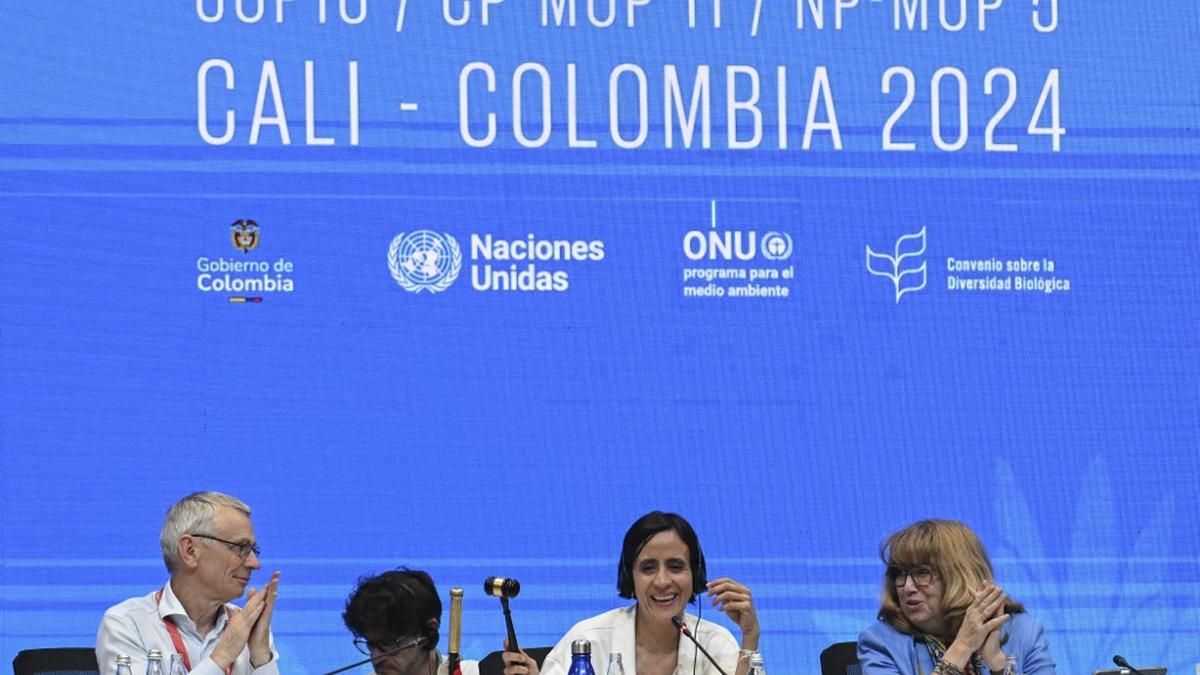
- 03 Nov 2024
In News:
The 16th edition of the Convention of Biological Diversity (CBD) in Cali, Colombia was concluded.
Key Agreements at COP-16
- Establishment of the Cali Fund
- Purpose: To ensure equitable benefit-sharing from the use of Digital Sequence Information (DSI) on genetic resources.
- Focus on Indigenous Communities: At least 50% of the Cali Fund will support Indigenous peoples and local communities, with special emphasis on women and youth.
- Creation of a Permanent Subsidiary Body
- Inclusion of Indigenous Peoples: A new body will ensure the active participation of Indigenous groups in biodiversity conservation and policy discussions.
- Resource Mobilisation Strategy
- Target Funding: The conference agreed on a strategy to secure USD 200 billion annually by 2030 to support global biodiversity initiatives.
- Kunming Biodiversity Fund: A contribution of USD 200 million from China to support biodiversity funding.
- Management of Invasive Alien Species
- New Guidelines: Proposals for databases, cross-border trade regulations, and enhanced coordination with e-commerce platforms to manage invasive species.
- Identification of Ecologically or Biologically Significant Marine Areas (EBSAs)
- Enhanced Process: COP-16 agreed on an evolved process for identifying EBSAs, a critical aspect of marine conservation.
- Global Action Plan on Biodiversity and Health
- One Health Approach: Approval of a global action plan to curb zoonotic diseases, promote health, and safeguard ecosystems.
India’s Contribution at COP-16
Updated National Biodiversity Strategy and Action Plan (NBSAP)
- Financial Commitment: India plans to invest ?81,664 crore (USD 9.8 billion) from 2025-30 on biodiversity conservation.
- Focus Areas: India highlighted efforts such as the establishment of the International Big Cat Alliance, expansion of Ramsar sites, and increased spending on biodiversity from 2018-2022.
International Finance Support
- Global Partnerships: India emphasized the need for international finance to meet biodiversity targets, particularly under the Kunming-Montreal Global Biodiversity Framework (KMGBF).
Key Outcomes from COP-16
- New Mechanisms for Biodiversity Conservation
- Cali Fund: Ensures equitable benefit-sharing from genetic resources.
- Permanent Subsidiary Body: Facilitates the inclusion of Indigenous peoples in policy-making.
- Funding and Resource Mobilization
- USD 200 Billion Annually: Strategy to secure funding for biodiversity initiatives.
- Redirecting Harmful Subsidies: Agreement to redirect USD 500 billion in harmful subsidies by 2030.
- Biodiversity and Human Health
- Global Action Plan on Biodiversity and Health: Aimed at preventing zoonotic diseases and promoting human, animal, and environmental health.
Challenges in Biodiversity Protection
Key Threats to Biodiversity
- Population Growth and Resource Demand: Increasing population and demand for biological resources lead to over-exploitation.
- Habitat Degradation and Climate Change: Destruction of ecosystems and climate change threaten species globally.
- Invasive Species: Introduction of non-native species harms local biodiversity.
- Government Policies: Policies that prioritize development without environmental safeguards contribute to biodiversity loss.
Gaps in Global Biodiversity Framework
- Weak Legal Language: Concerns about insufficient legal protection for critical ecosystems.
- Lack of Implementation Mechanisms: Absence of mandatory review mechanisms for biodiversity targets.
Kunming-Montreal Global Biodiversity Framework (KMGBF)
Framework Overview
- Adoption: Adopted at COP-15 in 2022, the KMGBF sets 23 action-oriented targets for biodiversity by 2030.
- Key Goals: Includes restoring 30% of degraded ecosystems and reducing the risk of invasive species by 50%.
- Living in Harmony with Nature: The framework envisions achieving biodiversity targets and living sustainably with nature by 2050.
Way Forward: Moving from Agreements to Action
- Participation of Stakeholders - Inclusive Approach: Ensuring the involvement of all relevant stakeholders, including governments, businesses, and local communities, in biodiversity conservation.
- Integrated Resource Management - Ecosystem Approach: Promoting a holistic approach to managing biodiversity and natural resources.
- Strengthening Governance - Good Governance Practices: Encouraging better governance to prevent unregulated exploitation of natural resources.
- International Financial Support - Alignment with Financial Institutions: Aligning global financial institutions and multilateral development banks with biodiversity conservation goals.
WWF Living Planet Report 2024
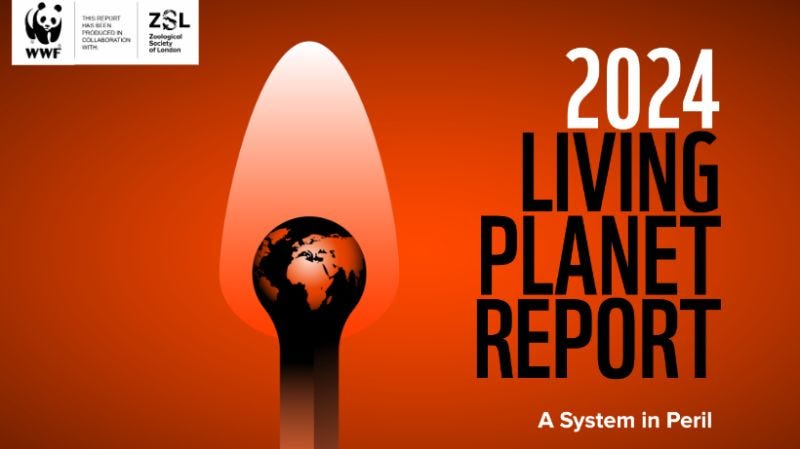
- 02 Nov 2024
In News:
- The WWF Living Planet Report 2024 highlights a drastic 73% decline in the average size of monitored wildlife populations globally from 1970 to 2020.
- The report underscores the urgent need for biodiversity conservation to maintain ecological balance, food security, and human health.
Key Findings of the 2024 Report
Wildlife Population Decline
- 73% Decline in monitored wildlife populations over the past 50 years (1970-2020).
- Freshwater species: Declined by 85%, the most significant drop.
- Terrestrial species: Declined by 69%.
- Marine species: Declined by 56%.
Main Threats to Wildlife
- Habitat Loss: Primary driver, particularly due to the expansion of food systems.
- Overexploitation: Over-hunting, fishing, and resource extraction.
- Invasive Species: Non-native species disrupt local ecosystems.
- Pollution: Water, air, and soil contamination, especially in Asia-Pacific.
- Disease: Emerging diseases impacting wildlife populations.
Ecosystem Risks and Tipping Points
- Decline in wildlife signals risks of ecosystem tipping points.
- Critical ecosystems, like the Amazon and coral reefs, face potential irreversible damage.
- Impact on global food security and livelihoods due to ecosystem collapse.
India’s Wildlife Status
- Vulture populations in India remain critically endangered.
- Tiger populations have increased to 3,682 (2022).
- Snow leopards have been successfully monitored with 718 individuals recorded.
Case Study: Chennai’s Wetland Loss
- 85% reduction in Chennai’s wetlands due to urban expansion, exacerbating flood and drought risks.
- Initiatives like the Tamil Nadu Wetland Mission aim to restore these wetlands to improve ecosystem resilience.
Impacts of Wildlife Decline
- Ecosystem Imbalance
- Disruption in predator-prey relationships, pollination, and nutrient cycles due to species decline.
- Leads to ecosystem instability and potential collapse.
- Loss of Biodiversity
- Reduced genetic diversity makes ecosystems less resilient to environmental changes.
- Increases vulnerability to diseases, natural disasters, and climate change.
- Threats to Food Security
- Pollinators like bees and insects are essential for crop yields.
- Loss of pollinators threatens global food supply and agriculture.
- Human Health Implications
- Healthy ecosystems regulate disease by controlling pest populations.
- Declining biodiversity increases the risk of zoonotic diseases, such as COVID-19.
- Economic Consequences
- Agriculture, fisheries, and tourism industries depend on healthy ecosystems.
- Decline in wildlife can lead to job losses and economic instability.
- Cultural and Social Impacts
- Wildlife holds cultural, spiritual, and recreational value for societies worldwide.
- Loss of iconic species diminishes cultural identities and opportunities for nature-based tourism.
Challenges in Biodiversity Conservation
- Inadequate National Actions
- Despite global commitments (e.g., Global Biodiversity Framework, Paris Agreement, UN SDGs), national actions are insufficient to meet 2030 biodiversity targets.
- Risk of crossing tipping points that could lead to irreversible ecosystem degradation.
- Key Drivers of Biodiversity Loss
- Habitat Loss: Driven by agriculture, urbanization, and infrastructure development.
- Climate Change: Rising temperatures, extreme weather, and altered precipitation patterns.
- Overexploitation: Unsustainable hunting, fishing, logging, and resource extraction.
- Pollution: Industrial, agricultural, and plastic pollution disrupt natural habitats.
- Invasive Species: Non-native species outcompeting and threatening native populations.
- Lack of Funding: Inadequate financial resources for effective conservation.
- Weak Policy and Enforcement: Poorly implemented habitat protection laws.
- Human-Wildlife Conflict: Increased interactions between expanding human populations and wildlife.
- Genetic Diversity Loss: Reduced genetic diversity makes species vulnerable to diseases and environmental changes.
- Awareness Gaps: Insufficient public awareness on the importance of biodiversity.
Conclusion and Way Forward
Policy and Action Recommendations
- Expand protected areas and restore ecosystems to halt biodiversity loss.
- Engage Indigenous communities in conservation and land management practices.
- Promote sustainable farming, reduce food waste, and encourage plant-based diets to lessen food production impacts.
- Shift to renewable energy and reduce fossil fuel use to mitigate climate change.
- Redirect investments from environmentally harmful sectors to nature-friendly industries.
WWF-India’s Call for Collective Action
- WWF-India advocates for collective action to align climate, conservation, and sustainable development policies.
- The goal is to ensure a resilient and thriving future for both biodiversity and human societies.
Analysis of Growing Economic Divide in India

- 29 Oct 2024
Overview
The Economic Advisory Council to the Prime Minister (EAC-PM)'s report titled "Relative Economic Performance of Indian States: 1960-61 to 2023-24" highlights an alarming trend of widening economic disparities across India's states, which is increasingly threatening the principles of federalism and national unity. The findings reveal significant regional imbalances in terms of contributions to the national income, per capita income, and overall economic development. This analysis delves into the key insights from the report and explores the broader implications for India's federal structure, governance, and policy approaches.
Key Insights from the Report
- Regional Economic Disparities:
- Western and Southern States' Dominance: States such as Maharashtra, Gujarat, Tamil Nadu, and Karnataka have consistently outperformed others. These states have benefited from higher private investments, better infrastructure, and a more business-friendly environment. They also enjoy proximity to international markets, especially coastal regions like Gujarat and Tamil Nadu, which have access to ports and export markets.
- Underperformance of Northern and Eastern States: On the other hand, northern states (with exceptions like Delhi and Haryana) and eastern states like Bihar, Odisha, and West Bengal lag behind in economic performance. These regions face challenges such as poor infrastructure, low levels of investment, and weak governance structures, which hinder their growth potential.
- Impact of Liberalization (1991):
- The 1991 economic reforms marked a shift toward market-oriented growth, benefiting states that were already more industrialized or had better urban infrastructure. Southern states, in particular, adapted well to the liberalized environment, attracting higher levels of private investment and expanding their economies.
- The liberalization process disproportionately favored urban centers like Delhi, Mumbai, Chennai, and Bengaluru, where investments were channelized into growing service sectors, technology, and industries, creating a feedback loop of wealth accumulation in these hubs. Meanwhile, the hinterland remained underdeveloped due to insufficient public investment and the lack of private sector interest in these regions.
- Investment Disparities:
- Private Investment: Wealthier states attract a disproportionate share of private investment, which is driven by profitability and market opportunities. These states have better infrastructure, which reduces transaction costs and increases returns on investment. In contrast, underdeveloped states struggle to attract investment due to poor governance, inadequate infrastructure, and perceived higher risks.
- Public Investment: While the public sector still plays a role in investment, the New Economic Policies (NEP) since 1991 have shifted the focus towards private sector-driven growth. This has further widened the investment gap, as the poorer states receive less public investment relative to their needs.
- Role of Infrastructure and Governance:
- The availability and quality of infrastructure are significant determinants of economic performance. States with better roads, energy supply, ports, and communication networks tend to attract more investments. Additionally, good governance, characterized by reduced corruption, better policy implementation, and transparency, also plays a critical role in fostering economic development.
- In contrast, states with weaker governance structures and poor infrastructure struggle to create an enabling environment for businesses, further compounding regional disparities.
- Impact on Federalism:
- The growing economic divide is leading to tensions between the Centre and state governments, particularly in wealthier states that contribute significantly to national income but feel short-changed in resource allocation. These states argue that they are not receiving a fair share of national resources in return for their contributions, leading to growing dissatisfaction with the federal system.
- The tension is exacerbated by political factors, such as accusations from opposition-led states that the Centre uses public investment to favor states aligned with the ruling party. The growing perception of politicization of resource allocation has the potential to undermine the spirit of cooperative federalism.
Structural Causes of Regional Inequality
- Economic and Investment Magnetism:
- Wealthier states attract more private investments, as they offer better returns due to established markets, skilled labor, and urbanization. Cities like Mumbai, Delhi, and Bengaluru serve as economic magnets, drawing talent, technology, and capital, which further consolidates their economic dominance.
- In contrast, states without such economic hubs or access to global markets struggle to attract investment. The absence of urban agglomerations and the concentration of wealth and resources in a few states perpetuate regional disparities.
- Policy and Investment Bias:
- Post-liberalization policies have disproportionately benefited the organized sector, often at the expense of the unorganized sector, which is more prevalent in poorer states. The emphasis on industrial growth and infrastructure development has largely bypassed the rural and informal sectors, which are critical in underdeveloped states.
- The organized sector has also benefited from government support, such as tax concessions and subsidized infrastructure, which have enabled these industries to thrive in already developed regions. This has widened the gap between the haves and the have-nots.
- Cronyism and the Black Economy:
- Crony capitalism and the prevalence of the black economy in poorer states further exacerbate regional imbalances. In some cases, political patronage and corruption divert resources and investments from areas that need them most. This weakens the investment climate, especially in states with higher levels of informal and illegal economic activity.
Implications for Federalism
The growing economic disparity poses a serious threat to India's federal structure. The increasing dissatisfaction of wealthier states with the current fiscal arrangements and the growing demand for fairer resource allocation challenge the spirit of cooperative federalism. A well-functioning federal system relies on equitable distribution of resources and opportunities for all regions to develop.
Policy Recommendations
To address these disparities and strengthen India's federal framework, several policy measures need to be implemented:
- Enhancing Governance and Infrastructure in Lagging States:
- Improved governance and reducing corruption are essential in attracting both private and public investments. Additionally, there must be a focus on developing critical infrastructure, such as roads, energy, and health facilities, which are essential for economic growth.
- States need to increase public investment in sectors like education, healthcare, and social security to improve human capital and productivity.
- Focus on the Unorganized Sector:
- A significant portion of the labor force in poorer states is employed in the unorganized sector. Policies should aim to formalize this sector by providing social security benefits, improving labor rights, and increasing productivity through skill development. This could help raise incomes and stimulate local demand, attracting more private investment.
- Balancing the Organized and Unorganized Sectors:
- While the organized sector has benefited from liberalization, more attention should be given to the unorganized sector, which forms the backbone of the economy in many poorer states. A balanced approach to economic growth, which includes both organized and unorganized sectors, can help reduce disparities.
- Shifting Focus from Urban Centers to Hinterlands:
- Private sector investment must be incentivized in underdeveloped regions through tax breaks, subsidies, and targeted infrastructure projects. This will encourage businesses to expand beyond the major urban centers, thus promoting a more balanced distribution of economic activities.
Conclusion
The widening economic divide in India, as revealed by the EAC-PM report, poses a significant challenge to the country's federalism and unity. To ensure inclusive and balanced development, policy reforms must focus on reducing regional disparities by improving governance, infrastructure, and investment in lagging states. A shift towards equitable growth, addressing the needs of both the organized and unorganized sectors, is essential to promoting national cohesion and ensuring sustainable economic progress across all regions.
Pradhan Mantri Mudra Yojana (PMMY)

- 27 Oct 2024
Introduction
The Pradhan Mantri Mudra Yojana (PMMY) was launched by Prime Minister Narendra Modi on April 8, 2015, with the aim of providing financial support to non-corporate, non-farm small and micro enterprises in India. Through this initiative, loans are provided to individuals and small businesses who are unable to access formal institutional finance.
In the Union Budget 2024-25, Finance Minister Nirmala Sitharaman announced an increase in the loan limit under PMMY from ?10 lakh to ?20 lakh, with the introduction of a new loan category, Tarun Plus, aimed at fostering growth in the entrepreneurial sector.
Key Features of the Pradhan Mantri Mudra Yojana
Loan Limit Increase
- Loan Limit Raised: The loan limit has been increased from ?10 lakh to ?20 lakh for eligible entrepreneurs.
- New Loan Category: The newly introduced Tarun Plus category caters to entrepreneurs who have previously availed and successfully repaid loans under the Tarun category.
- Credit Guarantee: The Credit Guarantee Fund for Micro Units (CGFMU) will cover these enhanced loans, further ensuring the security of micro-enterprises.
Categories of MUDRA Loans
PMMY provides collateral-free loans through financial institutions like Scheduled Commercial Banks, Regional Rural Banks (RRBs), Small Finance Banks (SFBs), Non-Banking Financial Companies (NBFCs), and Micro Finance Institutions (MFIs). These loans are provided for income-generating activities in sectors like manufacturing, trading, services, and allied agriculture activities.
Objectives of PMMY
- Financial Inclusion: PMMY targets marginalized and socio-economically neglected sections of society, promoting financial inclusivity.
- Support to Small Businesses: By providing affordable loans, the scheme encourages small-scale entrepreneurs, particularly women and minority groups, to establish and expand their businesses.
- Fostering Entrepreneurship: PMMY aims to unlock the potential of India’s entrepreneurial spirit, especially in rural and underserved areas.
MUDRA: The Institutional Backbone
Role of Micro Units Development & Refinance Agency Ltd. (MUDRA)
MUDRA is the primary institution set up by the Government of India to manage and implement the Mudra Yojana. It acts as a refinancing agency that provides financial support to small and micro-enterprises by working through financial intermediaries, such as banks and micro-finance institutions.
Funding Sources
- Scheduled Commercial Banks
- Regional Rural Banks (RRBs)
- Small Finance Banks (SFBs)
- Non-Banking Financial Companies (NBFCs)
- Micro Finance Institutions (MFIs)
Application Process
Applicants can avail loans through any of the aforementioned financial institutions or apply online via the Udyami Mitra Portal.
Benefits of Pradhan Mantri Mudra Yojana
- Collateral-free Loans: No security is required to obtain loans, which reduces the financial burden on borrowers.
- Easily Accessible: PMMY loans are available across India, making them accessible to entrepreneurs in both rural and urban areas.
- Quick and Flexible Loans: Loans can be disbursed quickly with flexible repayment terms (up to 7 years).
- Empowering Women Entrepreneurs: The scheme offers special incentives for women entrepreneurs, helping them to establish and grow their businesses.
- Support to Rural Areas: Special emphasis on empowering rural enterprises and reducing regional disparities.
- MUDRA Card: The MUDRA Card is a RuPay debit card that allows borrowers to access funds through an overdraft facility, enhancing liquidity for businesses.
- No Default Penalty: In case of loan defaults due to unforeseen circumstances, the government will step in to reduce the burden on entrepreneurs.
Categories of Loans Under PMMY
1. Shishu Category: Loans up to ?50,000
- Targeted at micro-enterprises at the initial stage of their business journey.
2. Kishore Category: Loans between ?50,000 and ?5 lakh
- Targeted at enterprises looking to expand their operations and upgrade their infrastructure.
3. Tarun Category: Loans between ?5 lakh and ?10 lakh
- For established businesses that are in need of funds to scale up.
4. Tarun Plus: Loans between ?10 lakh and ?20 lakh
- A new category designed for entrepreneurs who have repaid loans under the Tarun category and wish to further expand their business.
Achievements of PMMY (2023-24)
- Total Loans Sanctioned: ?5.4 trillion across 66.8 million loans in FY 2023-24.
- Loans Disbursed: Significant amounts were disbursed under each category:
- Shishu: ?1,08,472.51 crore
- Kishore: ?1,00,370.49 crore
- Tarun: ?13,454.27 crore
- Women Borrowers: A large share of loans have gone to women entrepreneurs, ensuring gender inclusivity.
- Minority Borrowers: The scheme also emphasizes financial empowerment of minority communities.
- NPA Reduction: The Non-Performing Assets (NPA) in Mudra loans have reduced to 3.4% in FY 2024, compared to higher levels in earlier years.
Digital Tools and Support Systems
MUDRA MITRA App
The MUDRA MITRA mobile app helps users access information about the PMMY scheme, loan application procedures, and other resources. The app is available for download on Google Play Store and Apple App Store.
Online Loan Application
Entrepreneurs can apply for loans online via portals such as PSBloansin59minutes and Udyamimitra, providing greater convenience and accessibility.
Steps to Improve Implementation
- Handholding Support: Assistance in submitting loan applications is available for applicants.
- Intensive Awareness Campaigns: The government conducts publicity campaigns to raise awareness about PMMY.
- Simplified Loan Process: The loan application forms have been simplified to encourage wider participation.
- Performance Monitoring: Regular monitoring of PMMY implementation to ensure its success.
- Interest Subvention: A 2% interest subvention is offered for prompt repayment of Shishu loans.
Conclusion
The Pradhan Mantri Mudra Yojana has been a transformative scheme in fostering entrepreneurship and ensuring financial inclusion for small and micro-businesses across India. With the recent increase in loan limits and the addition of the Tarun Plus category, the scheme continues to empower emerging entrepreneurs and provides a crucial lifeline for business growth and sustainability. By supporting women, minorities, and new entrepreneurs, PMMY has contributed significantly to economic upliftment and inclusive growth in the country.
Stubble Burning and the Supreme Court's Ruling: Protecting the Right to a Pollution-Free Environment
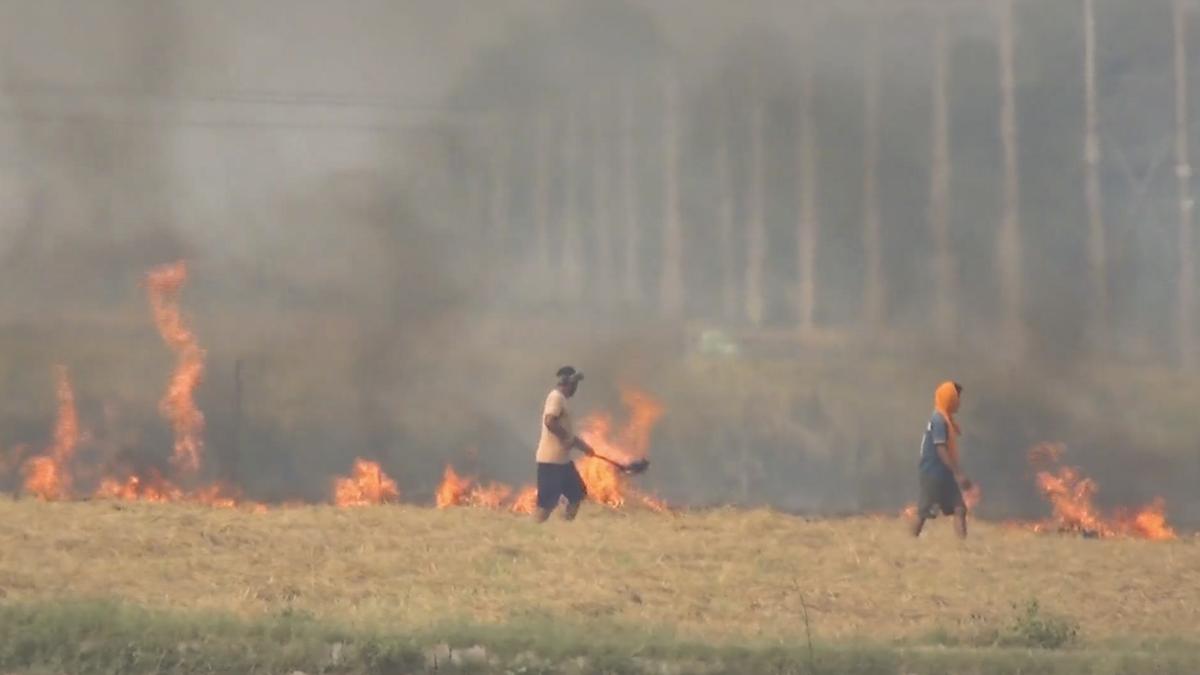
- 24 Oct 2024
Introduction
Recently, the Supreme Court of India expressed serious concerns about the ongoing issue of stubble burning in the states of Punjab and Haryana. The Court criticized the selective enforcement of penalties for stubble burning and emphasized that such practices violate citizens' fundamental right under Article 21 of the Indian Constitution, which guarantees the right to live in a pollution-free environment.
Court’s Observations on Stubble Burning
- The Supreme Court highlighted the failure of state governments in effectively implementing laws against stubble burning.
- Selective Enforcement: The Punjab and Haryana governments were accused of prosecuting only a few violators while allowing many others to escape punishment by paying a nominal fine.
- The Court observed that this approach is a blatant violation of the right to live in a pollution-free environment, which is guaranteed under Article 21 of the Constitution.
Right to a Pollution-Free Environment
- The Court emphasized that every citizen has the fundamental right to live in an environment free from pollution, as mandated by Article 21 of the Constitution.
- The Court questioned the effectiveness of current environmental regulations, specifically pointing out the lack of proper machinery to collect fines under Section 15 of the Environment (Protection) Act, 1986.
Impact of Stubble Burning
Stubble burning, primarily in the northern states of India, exacerbates air pollution, especially in Delhi and surrounding regions. The seasonal spike in air pollution during the months of October and November is largely attributed to farm fires. This not only worsens the air quality but also has severe implications for public health.
Environmental and Health Consequences
- Air Pollution: The burning of crop residues significantly contributes to the rise in PM2.5 and PM10 levels, leading to hazardous air quality.
- Soil Health: Burning crop residues depletes essential nutrients from the soil, reducing organic carbon content and harming soil fertility.
Health Risks
- Exposure to pollutants like particulate matter (PM) can lead to respiratory problems, heart diseases, and other health complications for the population, especially in densely populated areas like Delhi.
Legal and Institutional Shortcomings
- Inadequate Implementation: Despite laws and penalties being in place, the lack of an effective enforcement mechanism has resulted in the persistence of stubble burning.
- Toothless Penalties: The Supreme Court criticized the amended Section 15 of the Environment Protection Act, 1986, which replaced criminal penalties with financial fines for environmental violations. However, the lack of rules and appointed adjudicating officers has rendered this provision ineffective.
- No Serious Enforcement: The failure of the Central government and state authorities to implement effective penalties has led to widespread non-compliance with environmental laws.
Government Actions and Responses
Centre’s Efforts:
- The Central Government has introduced a Central Sector Scheme to promote agricultural mechanization for in-situ management of crop residue in Punjab, Haryana, Uttar Pradesh, and Delhi.
- The government provides financial assistance of up to 50% for the purchase of machinery, such as the Happy Seeder, to manage paddy stubble without burning.
- A total of ?3,062 crore has been released from 2018 to 2023 to tackle stubble burning.
State-Level Actions:
- The Punjab government has introduced cash incentives for farmers who refrain from burning stubble. Additionally, the state is offering non-fiscal incentives, such as access to panchayat land for storing paddy straw.
- The Pusa Decomposer, developed by the Indian Agricultural Research Institute (IARI), is a bio-enzyme used to decompose crop residue. It helps in turning the stubble into manure within 20-25 days, enhancing soil health.
Challenges for Farmers:
- Many farmers still prefer burning stubble due to high costs associated with alternative methods of residue management.
- The Happy Seeder and other machinery remain expensive and are not affordable for most small-scale farmers, leading them to resort to burning as the most cost-effective option.
Court’s Directive and the Way Forward
- The Supreme Court directed the Centre and state governments to ensure better enforcement of laws related to air pollution, vehicular emissions, and industrial pollution.
- The Court also urged the Union Government to consider Punjab’s request for additional funds to tackle the stubble burning issue and to strengthen the enforcement mechanism.
- Urgency for Action: The Court’s observations suggest that the existing framework needs urgent reforms to protect citizens’ right to a pollution-free environment.
Constitutional Provisions Related to Environmental Protection
India’s Constitution provides several provisions to ensure the protection of the environment:
Article 21: Right to Life and Environment
- In the landmark case Subhash Kumar v. State of Bihar (1991), the Supreme Court held that the right to life under Article 21 includes the right to a wholesome environment.
- This view was reiterated in Virender Gaur v. State of Haryana (1994), further strengthening the legal framework for environmental protection.
Directive Principles of State Policy
- Article 48A: The State is mandated to protect and improve the environment and safeguard forests and wildlife.
- Article 39(e) and 47: These Articles place a duty on the State to promote public health and ensure environmental protection.
Fundamental Duties
- Article 51A(g) places a duty on citizens to preserve and protect the environment.
Conclusion
The Supreme Court’s ruling highlights the urgent need for better implementation of environmental laws and the protection of citizens’ fundamental rights under Article 21. While government schemes are in place, a more robust and consistent approach is required to address the issue of stubble burning and air pollution. Immediate reforms in the enforcement mechanisms and incentives for farmers are crucial to achieve a sustainable, pollution-free environment in India.
Biodiversity COP16
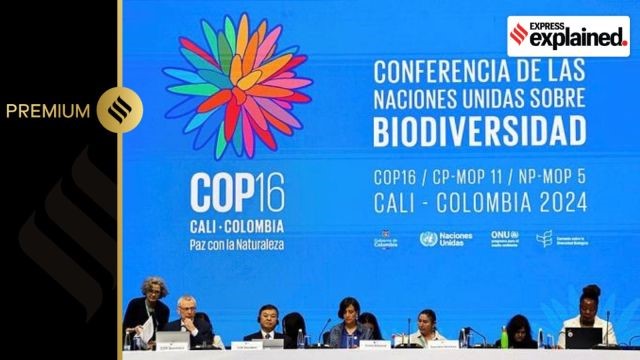
- 23 Oct 2024
In News:
The Convention on Biological Diversity (CBD), while historically overshadowed by climate change discussions, is now gaining increasing attention due to the growing recognition of the global biodiversity crisis. This evolving prominence highlights the need for urgent action to preserve ecosystems and halt biodiversity loss, which is intimately linked with the climate crisis.
Overview of the Convention on Biological Diversity (CBD)
- Origins and Objectives:
- The CBD emerged from the 1992 Rio Earth Summit, alongside the UN Framework Convention on Climate Change (UNFCCC).
- Main Goals:
- Protect global biodiversity.
- Restore ecosystems.
- Ensure equitable distribution of the benefits derived from biological resources.
- COP16 and the Kunming-Montreal Framework:
- The 16th Conference of Parties (COP16) marks the first meeting following the Kunming-Montreal Global Biodiversity Framework adopted at COP15 in 2022.
- The framework sets out four key goals and 23 targets to be achieved by 2030, including:
- Protect 30% of global lands and oceans by 2030.
- Restore 30% of degraded ecosystems by 2030.
The Growing Convergence Between Climate Change and Biodiversity
- Interlinkages Between Climate Change and Biodiversity:
- Mutual Impact:
- Climate change accelerates biodiversity loss by altering habitats and threatening species.
- In turn, ecosystem degradation contributes to climate change by releasing greenhouse gases (GHGs) from deforestation and soil degradation.
- Shared Drivers:
- Both crises are driven by unsustainable human activities, including over-exploitation of natural resources, deforestation, over-consumption, and pollution.
- Increasing Synergy:
- There is a growing realization of the need for integrated solutions that address both climate change and biodiversity loss simultaneously.
- Momentum for 30 x 30 Targets
- The 30 x 30 Commitment:
- The 30 x 30 targets are central to the Kunming-Montreal Framework, which includes:
- Conservation of 30% of the world's lands and oceans.
- Restoration of 30% of degraded ecosystems.
- These targets aim to ensure the preservation of biodiversity-rich areas and the restoration of degraded ecosystems globally by 2030.
- National Biodiversity Strategies and Action Plans (NBSAPs):
- Countries are required to develop and submit their NBSAPs (akin to Nationally Determined Contributions (NDCs) for climate change).
- As of now, only 32 countries have submitted their NBSAPs, with more expected during COP16.
- High Seas Treaty:
- A crucial agreement for achieving 30 x 30 targets is the High Seas Treaty (also called Biodiversity Beyond National Jurisdictions (BBNJ)), which focuses on:
- Establishing protected marine areas in biodiversity-rich regions beyond national jurisdictions.
- Ensuring regulation of human activities in these areas.
Access and Benefit Sharing: The Case of Genetic Resources
- Genetic Resources and Their Exploitation:
- The oceans, along with terrestrial ecosystems, harbor a wide variety of genetic resources that can be exploited for medical, commercial, and scientific purposes.
- Advances in biotechnology and digital sequencing of genetic material have raised issues about the equitable sharing of benefits from these resources.
- Nagoya Protocol and Benefit Sharing:
- The Nagoya Protocol (2010) set out guidelines for the access and fair sharing of benefits derived from genetic resources.
- At COP16, discussions will center on how genetic sequences (used in products such as medicines, crops, etc.) can be used fairly, ensuring that indigenous communities, who may be the original custodians of these resources, benefit equitably.
Finance Mechanisms for Biodiversity Conservation
- Financial Targets:
- One of the key goals of the Kunming-Montreal Framework is to mobilize $200 billion per year by 2030 for biodiversity conservation globally.
- Developed countries are expected to contribute $20 billion annually to developing nations, increasing to $30 billion by 2030.
- Phasing Out Harmful Subsidies:
- Countries are urged to eliminate perverse incentives that harm biodiversity, such as subsidies for:
- Over-fishing.
- Deforestation.
- Fossil fuel consumption.
- The goal is to repurpose such incentives to support sustainable practices and conservation efforts.
- New Financial Mechanisms:
- COP16 discussions will also focus on creating innovative financial mechanisms, such as:
- A biodiversity fund.
- Biodiversity credits, similar to carbon credits, which would allow countries or organizations to offset their biodiversity loss by investing in conservation projects elsewhere.
Challenges and the Way Forward
- Implementation of 30 x 30 Targets:
- The main challenge lies in translating ambitious goals into actionable plans at the national and local levels. Countries must not only submit action plans but also implement and monitor them effectively.
- Increased Global Cooperation:
- Addressing biodiversity loss requires collaboration between countries, industries, and local communities to ensure that efforts are comprehensive and inclusive.
- Public Awareness and Engagement:
- It is crucial to raise awareness about the importance of biodiversity conservation and the urgent need for collective action to mitigate the combined threats of biodiversity loss and climate change.
Conclusion: The Need for Urgent Action
The discussions at COP16 signal an important shift in how the world addresses biodiversity and its links to climate change. As countries continue to recognize the interconnectedness of these two crises, the outcome of the CBD negotiations could play a pivotal role in shaping global environmental policy. However, meeting the ambitious goals set forth by the Kunming-Montreal Framework requires strong political will, adequate financing, and effective global cooperation.
What are the stress factors for Indian Railways?
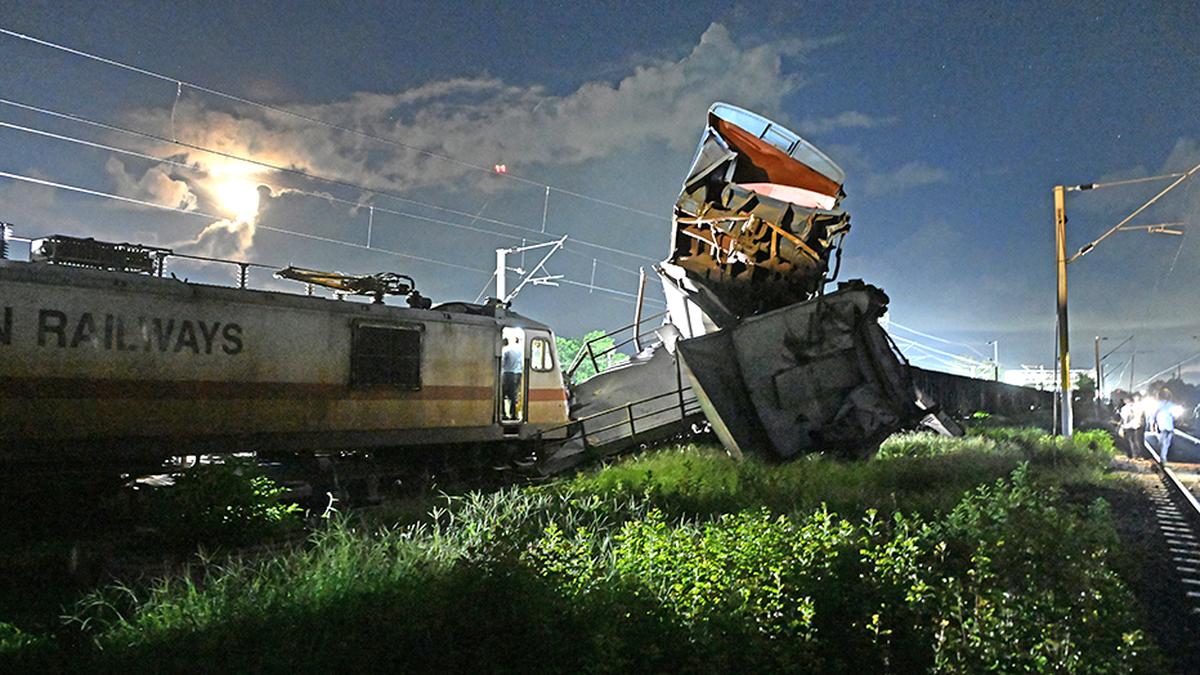
- 22 Oct 2024
In News:
On October 17, eight coaches of the Agartala-Lokmanya Tilak Express derailed in Assam with no casualties. On October 11, a passenger train rear-ended a stationary goods train near Chennai, also with no casualties. Indian trains have been involved in multiple accidents of late. The Balasore accident on June 2, 2023, had the greatest death toll, more than 275, yet pressure on the Railways to improve safety competes with pressures straining its subsistence.
Railway Accident Trends
- Decline in Accidents Over Time:
- From 1,390 accidents per year in the 1960s, railway accidents have reduced to about 80 accidents per year in the last decade.
- Recent Consequential Accidents:
- 34 accidents in 2021-2022
- 48 accidents in 2022-2023
- 40 accidents in 2023-2024
- Primary Causes of Accidents:
- 55.8% due to staff errors (railway personnel).
- 28.4% due to non-staff errors.
- 6.2% due to equipment failure.
- Role of Signalling Failures:
- Major accidents, such as Balasore and Kavaraipettai, were attributed to signalling system failures.
Key Safety Technologies and Measures
- Kavach System:
- Kavach is an automatic train protection system designed to prevent collisions by monitoring train positions and activating alarms or braking.
- As of February 2024, Kavach was implemented on only 2% (1,465 route km) of the railway network, limiting its effectiveness.
- Signalling System Overhaul:
- Outdated and faulty signalling systems contribute significantly to accidents. Both Balasore and Kavaraipettai incidents were linked to failures in signalling infrastructure.
Financial Strain on Indian Railways
- Operating Ratio (OR):
- The Operating Ratio (OR) in 2024-2025 is estimated to be ?98.2, indicating that the Railways spends ?98.2 for every ?100 earned.
- A higher OR reduces available funds for safety improvements and infrastructure upgrades.
- Budgetary Constraints:
- The 2023-24 budget showed a 7.2% reduction in capital outlay for track renewal and a 96% decrease in the Depreciation Reserve Fund, which is used to replace aging assets.
- Revenue Imbalance:
- Freight services account for 65% of Railways’ revenue but face capacity constraints, with 30% of the network operating at over 100% capacity.
- Passenger services, however, continue to incur significant losses, with ?68,269 crore loss in 2021-22.
Challenges in Rail Infrastructure
- Slow Infrastructure Development:
- The government's Dedicated Freight Corridors (DFCs), intended to alleviate congestion, are severely delayed:
- The Eastern DFC is the only fully operational corridor.
- Other corridors, including the Western DFC and additional planned routes, remain incomplete.
- Track and Equipment Maintenance:
- Ongoing delays in upgrading and maintaining essential infrastructure (tracks, wagons, signalling) contribute to the rising number of accidents.
Loco Pilot Working Conditions
- Extended Working Hours:
- Loco pilots often work 12-hour shifts due to manpower shortages, leading to fatigue and increased risk of human error.
- Stress and exhaustion are significant contributors to accidents caused by human error, including Signal Passed at Danger (SPAD).
Recommendations for Improving Railway Safety
- Loco Pilot Vacancies:Immediate recruitment to fill the 18,799 vacant loco pilot positions to prevent overworking and reduce fatigue-related errors.
- Expand Kavach Deployment:Accelerate the nationwide installation of the Kavach system, particularly on high-risk and high-traffic routes, to enhance safety.
- Complete Dedicated Freight Corridors (DFCs):Expedite the completion of DFCs to ease congestion and increase freight movement efficiency.
- Independent Railway Safety Authority:Establish an independent Railway Safety Authority with statutory powers, as recommended by the Kakodkar Committee (2012), to enforce safety standards and monitor implementation.
- Improve Signal Infrastructure:Invest in advanced and reliable signalling systems to prevent errors stemming from outdated or malfunctioning infrastructure.
- Regulate Working Hours:Enforce strict work hour limits to reduce fatigue among railway staff and ensure proper rest between shifts.
- Strengthen Trackside Infrastructure:Install fencing along tracks in high-risk areas to prevent cattle run-overs, a common cause of derailments in rural and semi-urban areas.
Conclusion
- Indian Railways faces a complex set of challenges, balancing safety requirements with financial constraints. Despite technological advancements like Kavach, its limited deployment and outdated infrastructure continue to present significant risks.
- A holistic approach to reform is needed, including addressing manpower shortages, upgrading safety technologies, and investing in infrastructure development. This will be essential for reducing accidents, improving safety, and ensuring the long-term sustainability of India’s vast railway network.
With elections in at least 83 countries, will 2024 be the year of AI freak-out?

- 19 Feb 2024
Why is it in the News?
Regulatory panic could do more harm than good. Rather than poor risk management today, rules should anticipate the greater risks that lie ahead.
Context:
- The year 2024 will see 4.2 billion people go to the polls, which, in the era of artificial intelligence (AI), misinformation and disinformation may not be the democratic exercise intended.
- The Global Risks Report 2024 named misinformation and disinformation a top risk, which could destabilise society as the legitimacy of election results may be questioned.
- Therefore, it is crucial to scrutinise the possible drawbacks of swiftly formulated regulations to counter AI-driven disinformation during this crucial period.
What are the Major Challenges Arising from Hasty Regulatory Responses to AI?
Escalation of Disinformation: Unintended Ramifications of Resource Allocation
- The surge in disinformation, demonstrated by manipulated videos impacting political figures, presents a formidable obstacle.
- For instance, consider the case of Tarique Rahman, a leader of the Bangladesh Nationalist Party, whose manipulated video suggested a reduction in support for Gaza's bombing victims—an action with potential electoral repercussions in a Muslim-majority country.
- Meta, the parent company of Facebook, exhibited delayed action in removing the fabricated video, raising concerns about the effectiveness of content moderation.
- Moreover, the reduction in content moderation staff due to widespread layoffs in 2023 exacerbates the challenge.
- The pressure to prioritize interventions in more influential markets may leave voters in less prominent regions, such as Bangladesh, vulnerable to disinformation, potentially leading to a global surge in disinformation due to the focus on catching misinformation from powerful governments.
Reinforcement of Industry Dominance: Amplifying Concentration and Ethical Concerns
- While well-intentioned, AI regulations risk bolstering industry concentration. Mandates such as watermarking (which are not foolproof) and red-teaming exercises (which are expensive) may inadvertently favour tech giants, as smaller companies encounter compliance obstacles.
- Such regulations could further entrench the power of already dominant players by erecting barriers to entry or rendering compliance unfeasible for startups.
- This concentration not only consolidates power but also raises apprehensions regarding ethical lapses, biases, and the centralization of consequential decisions within a select few entities.
Navigating Ethical Quagmires: Pitfalls of Sincere Guidelines
- The formulation of ethical frameworks and guidelines introduces its own complexities.
- The question of whose ethics and values should underpin these frameworks gains prominence in polarized times. Divergent perspectives on prioritizing regulation based on risk levels add layers of complexity, with some viewing AI risks as existential threats while others emphasize more immediate concerns.
- The absence of laws mandating audits of AI systems raises transparency issues, leaving voluntary mechanisms vulnerable to conflicts of interest.
- In the Indian context, members of the Prime Minister's Economic Advisory Council have even argued that the concept of risk management itself is precarious concerning AI, given its non-linear, evolving, and unpredictably complex nature.
Navigating the Complexity of AI Regulation: Strategies for Policymakers
- Acknowledge and Address Democracy's Inherent Challenges Alongside AI Threats:
- Before delving into the intricacies of AI-related risks, policymakers must acknowledge the persistent challenges facing democracy globally.
- Instances of unjust political imprisonments, threats to electoral processes, and disruptions to communication networks underscore the vulnerability of democratic systems.
- Furthermore, the enduring issues of vote-buying and ballot-stuffing tarnish the integrity of elections.
- These entrenched challenges within the democratic process provide context for evaluating the novelty of AI threats.
- Strike a Balance Between Addressing AI Risks and Implementing Sensible Regulation:
- The rush among regulators to enact AI regulations ahead of the 2024 elections, following the AI fervour of 2023, underscores the need for caution.
- While it is essential to confront the emerging threats posed by AI, hastily devised regulations may inadvertently worsen the situation.
- Policymakers must carefully consider the potential for unintended consequences and the complexities inherent in regulating a swiftly evolving technological landscape.
- It is crucial for regulators to appreciate the delicate balance required to manage AI risks without unintentionally creating new challenges or hindering democratic processes.
- Prepare for Future Challenges: Policymakers must adopt a forward-thinking approach to AI regulation, anticipating and formulating rules that not only address current risks but also proactively tackle future challenges.
- Recognizing the rapid evolution of technology, regulatory frameworks must evolve accordingly.
- By planning several steps ahead, regulators can contribute to the resilience of democratic processes, ensuring that voters in elections beyond 2024 benefit from an adaptive, proactive, and effective regulatory environment.
How Major Tech Companies Join Hands to Combat AI Misuse in Elections?
- On February 16th, 2024, a major step was taken in the fight against AI misuse in elections.
- 20 tech giants, including Microsoft, Google, Meta, and Adobe, signed a voluntary agreement called the "Tech Accord to Combat Deceptive Use of AI in 2024 Elections."
- This agreement marks a significant step towards collective action against the potential manipulation of democratic processes through deepfakes and other AI-generated content.
Key features of the Tech Accord:
- Collaborative detection and labelling: Companies pledge to develop tools and techniques for identifying and labelling deepfakes, fostering transparency and facilitating content removal.
- Transparency and user education: The accord emphasizes transparency in company policies regarding deepfakes and aims to educate users on identifying and avoiding them, raising public awareness about the technology's capabilities and limitations.
- Rapid response and information sharing: The signatories commit to sharing information and collaborating on takedown strategies for identified deepfakes, aiming for faster removal and a unified front against malicious actors.
- Additional measures: The agreement includes further commitments to invest in threat intelligence, empower candidates and officials with reporting tools, and collaborate on open standards and research.
However, critical analysis reveals potential limitations:
- Voluntary nature: The accord's voluntary character raises concerns about its enforceability and long-term effectiveness.
- Companies may prioritize competing interests over their goals.
- Technical challenges: Deepfake detection remains an evolving field with limitations.
- Continuous innovation by malicious actors can outpace detection capabilities.
- Potential for bias: Concerns exist about potential biases in detection algorithms, particularly regarding marginalized groups, further complicating the issue.
- Freedom of expression and censorship: Balancing the need for content moderation with upholding freedom of expression requires careful consideration and potential legal challenges.
Conclusion
Balancing immediate concerns with long-term implications, and addressing AI-related electoral risks requires careful regulatory foresight. While the Tech Accord offers promise in combatting AI-driven election interference, its effectiveness depends on rigorous implementation and continuous adaptation to evolving threats. Ongoing research and dialogue are crucial to address ethical concerns and ensure a balanced approach to safeguarding democracy and individual rights.
The Cost of Legal MSP is Greatly Exaggerated (Indian Express)
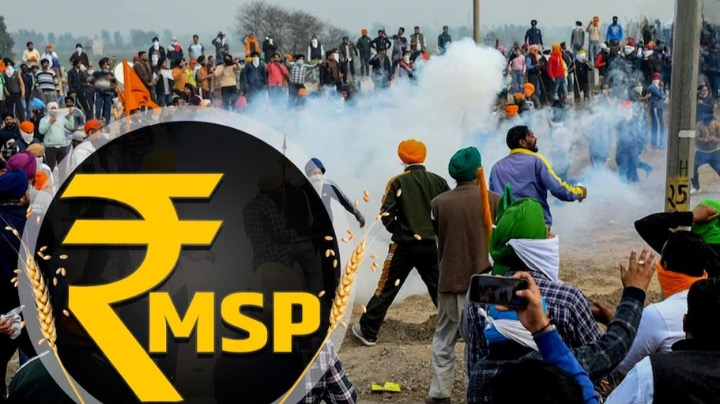
- 17 Feb 2024
Why is it in the News?
Farmers have resumed protests without a specific trigger, unlike their previous march against contentious farm laws. Their main demand is a legal guarantee for Minimum Support Prices (MSP).
Context:
- The renewed protest by farmers, advocating for a legal assurance of Minimum Support Prices (MSP), underscores the enduring battle for agricultural sector stability.
- Amidst this, it's crucial to delve into the intricacies of MSP, address prevailing misconceptions, and explore the advantages of formalising this system.
What is the Minimum Support Price (MSP)?
- MSP (Minimum Support Price) is the cost at which the government buys crops from the farmers, to guarantee farmers against any sharp fall in agricultural income.
- It is declared by the Government based on the proposal of the Commission for Agricultural Cost and Prices (CACP), at the start of the planting season.
- This mechanism aims to protect small and marginal farmers from financial losses and ensure an adequate supply of food grains for public distribution across India.
- Since its inception in 1966-67 for wheat, the MSP framework has expanded to cover various essential food crops, facilitating their availability to the public through subsidized rates under the public distribution system.
- However, only a small percentage, approximately 6% or less, of farmers are able to sell their produce at prices higher than the MSP.
Is the MSP Different in different states?
- Because of the variety in irrigation and wages, the expense of a similar yield changes from one state to another.
- However, there is no draft of the local Minimum Support Price, so there is one MSP for the whole country.
Significance of Minimum Support Price:
- Fixed Remunerations: The farmers are financially insured against the impulses of price fall in the market.
- It gives security to farmers from crop loss and price uncertainty.
- Help in Decision Making: MSPs are reported toward the start of the planting season, this assists farmers with settling on the best choices of crop that they should plant.
- This development data assists the farmer with settling on the best choice with regards to which yield to plant for the most extreme monetary advantage inside the restrictions of his agricultural land size, environment, and irrigation framework.
- Crop Diversification: The MSP declared by the Government of India without precedent for 1966-67 for wheat has reached out to around 24 crops at the present.
- This has urged the farmers to develop these different crops to maximize their agricultural income.
- Price Limitations for Private Purchasers: MSP conveys a value message to advertise that if vendors don’t offer higher than MSP costs the farmer may not sell them his produce.
- In this manner, it goes about as an anchor or benchmark for agricultural produce.
- It guarantees the market costs won’t be radically lower than the Minimum Support Price.
- Commercial Crops: MSP is utilized as an instrument to boost the creation of explicit food crops which is short in supply.
- MSP spurs farmers to develop commercial crops and expand creation on a commercial basis.
- Purchasing Power Enhancement: MSP provides fixed amounts in framers’ hands which makes them financially stable.
- It helps in upgrading the buying limit and updating the style of living of farmers and their families.
Challenges in Implementation of MSP:
- Selective Intervention and Limited Coverage: Despite the annual announcement of MSP for 23 crops, actual implementation tends to be selective, primarily focusing on major crops like rice and wheat.
- This limited coverage undermines the broader objective of ensuring stability across various agricultural commodities.
- MSP Implementation Bias: The unequal application of MSP, favouring specific crops, marginalizes farmers cultivating other essential commodities.
- This bias exacerbates regional disparities and impacts the economic well-being of farmers engaged in non-major crop cultivation.
- Disconnect Between Market Price and MSP: The disparity between market prices and MSP poses a significant challenge, as government intervention is triggered primarily when market prices fall below the MSP.
- Inconsistent intervention exacerbates uncertainties for farmers, leading to financial distress during market downturns.
- Perceived Government Apathy: Farmers perceive a lack of genuine interest or urgency from the government in effectively implementing MSP.
- This perceived apathy breeds distrust and frustration among farmers, fueling demands for a legal guarantee to ensure consistent and widespread implementation.
- Political Hesitation and Decision-Making Delays: While there is political consensus supporting a legal guarantee for MSP, successive governments have hesitated to formalize this mechanism.
- Delayed decision-making perpetuates uncertainties in the agricultural sector, undermining the effectiveness of MSP as a stabilizing force.
What Does a Legal Guarantee of MSP Mean and What Obstacles in Legalising MSP?
- It means that anyone paying less than the price set by the government for crops could be criminally charged.
- Currently, there is an MSP for 23 crops.
- However, the highest procurement by the government is of wheat and rice.
- According to experts, if MSP is legally guaranteed, the government will have to pay it regardless of supply and demand dynamics.
- At the moment, about 60 per cent of the total field crop production in India comes from wheat and paddy.
- Fiscal Concerns: Misconceptions regarding the fiscal implications of guaranteeing MSP have posed obstacles to its legalization.
- Despite the political consensus, concerns over perceived excessive fiscal burdens have deterred governments from formalizing MSP.
- Prevalent Misconceptions: There is a prevalent misconception that legalizing MSP necessitates government procurement of all agricultural produce, which is inaccurate.
- Government intervention is required only when market prices dip below MSP, and it does not entail the procurement of the entire marketable surplus.
- Misunderstanding of Procurement Costs and Subsidies: The cost of procuring rice and wheat is often misconstrued as the cost of the MSP program, whereas it primarily serves as a subsidy to consumers rather than farmers.
- For other crops, government procurement is not a cost unless sold with a subsidy, with the actual cost being the difference between economic cost and issue price.
Potential Advantages of Legalising MSP:
- Ensuring Uniform Implementation: Formalizing Minimum Support Prices (MSP) establishes a clear legal framework, ensuring consistent application across all crops.
- This move addresses current issues of selective intervention, providing farmers with a dependable safety net.
- Promoting Inclusive Agricultural Growth: Expanding MSP coverage to various crops ensures that price stability benefits all segments of the farming community.
- Small and marginal farmers cultivating diverse crops can access MSP protection, fostering inclusive agricultural development.
- Reducing Farmer Vulnerability: Formalizing MSP reduces farmers' susceptibility to market fluctuations by guaranteeing a minimum income for their produce.
- This assurance enables farmers to navigate uncertainties with confidence, knowing that government intervention is assured during price downturns.
- Boosting the Rural Economy: A secured MSP contributes to farmers' economic well-being, leading to increased rural income.
- This upliftment stimulates the rural economy by generating demand for goods and services, fostering growth across multiple sectors.
- Clarifying Consumer Subsidies: Formalization helps distinguish between procurement costs and consumer subsidies, often conflated as MSP program expenses.
- This clarity aids policy discussions and ensures targeted subsidy allocation, benefiting both farmers and consumers.
- Facilitating Strategic Government Operations: A legal framework empowers the government to conduct strategic operations in domestic and international markets.
- Through controlled sales during periods of high market prices, the government can manage inflation, ensuring price stability for consumers.
Conclusion
The legalization of MSP presents a holistic remedy to the agricultural sector's woes.
Beyond ensuring uniform application, it fosters diversification, inclusivity, and economic robustness, ultimately benefiting farmers and bolstering rural prosperity. By dispelling misconceptions and tackling apprehensions, policymakers can pave the way toward a more secure and prosperous future for our farmers.
WTO Pressure on Indian Farm Subsidies Amid Farmer's Protest for MSP (Indian Express)
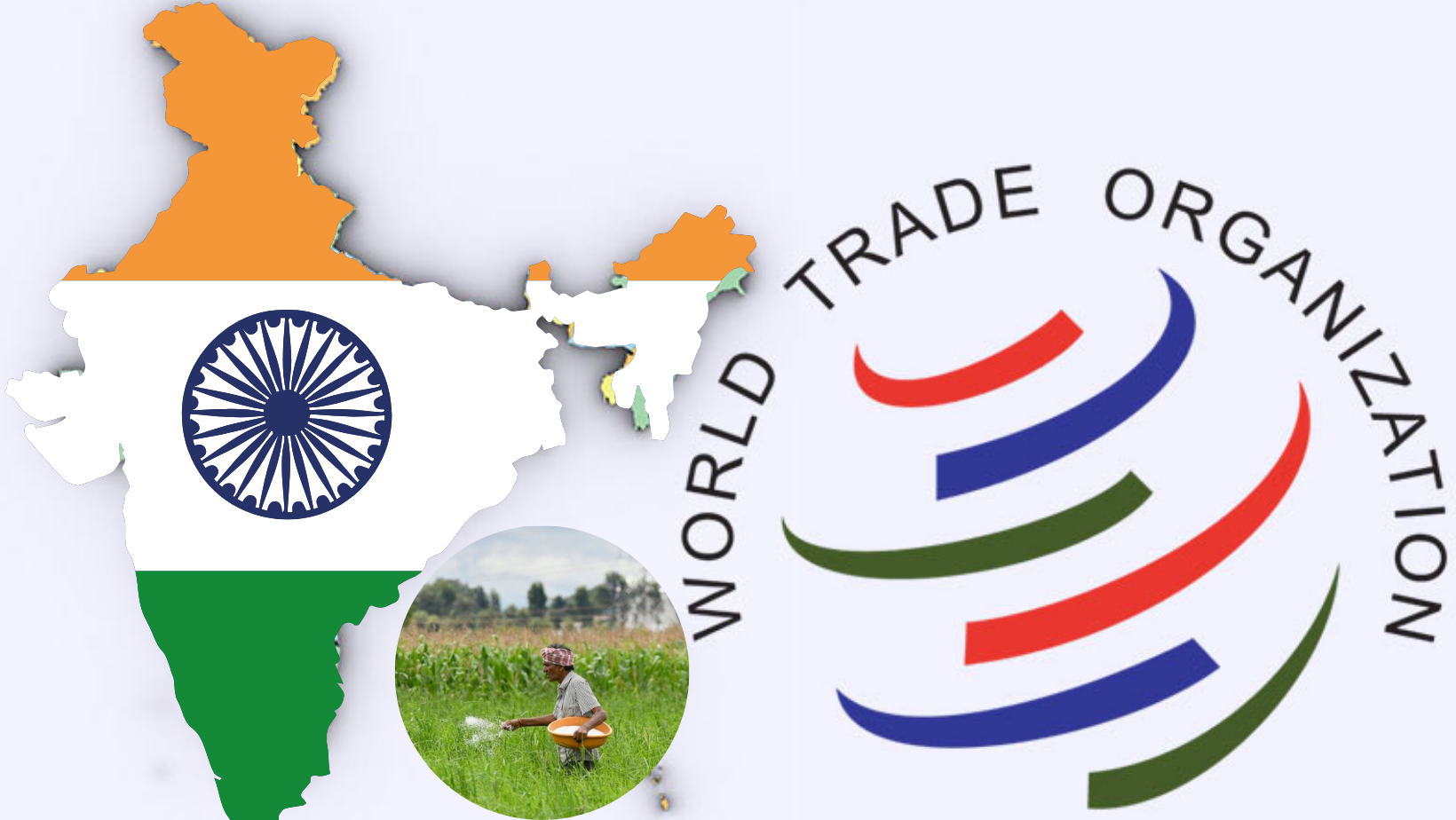
- 15 Feb 2024
Why is it in the News?
The government might find it challenging to meet the protesting farmers' demand for a legal guarantee of (MSP) due to India's farm subsidies being scrutinised at the (WTO), especially with criticism from a group of 19 influential agricultural exporting countries.
Background:
- After independence, our country struggled to produce enough food for its large population as the agriculture sector was in a poor state.
- To address this challenge, we either had to import grains, which incurred significant costs, or rely on aid from other nations.
- In 1960, the government took steps toward self-sufficiency. They introduced high-yielding seeds, promoted the use of fertilisers, and improved agricultural machinery.
- At the same time, the government supported rice and wheat cultivation by offering farmers a Minimum Support Price (MSP).
- This ensures that farmers receive a fair price; if they can't sell their crops for a better price in the market, the government will buy them at a favourable rate.
- However, there's currently tension between India and the WTO regarding these subsidies.
Green Revolution
- The Green Revolution, initiated in the 1960s, aimed to enhance agricultural productivity and bolster the nation's economy.
- India embraced technological and industrial advancements in agriculture during this era.
- This included the adoption of high-yield seeds, modern farming equipment, irrigation systems, pesticides, and fertilisers to transform the agricultural landscape.
- The green revolution helped India move from a state of importing grains to a state of self-sufficiency.
Causes of Tensions Between India and the WTO:
- India's actions in this realm have stirred discontent among other nations, who perceive India's practices as unfair trade manoeuvres.
- The government's practice of procuring crops from farmers at low prices and subsequently exporting them at reduced rates to global markets has drawn criticism.
- Developed countries have lodged complaints, alleging multiple instances of India breaching WTO regulations by providing subsidies amounting to 60-70% of the total crop value.
- While the WTO permits governments to offer subsidies to farmers, it imposes restrictions, allowing developed countries to provide up to 5% and developing countries up to 10% of the total value in subsidies.
What are the WTO Regulations on Farm Subsidies?
- The WTO regulations on farm subsidies aim to promote fair competition and prevent global trade distortion.
- These regulations establish limits on the types and levels of subsidies that member countries can offer to their agricultural sectors.
- Levels of Subsidies:
Green Box:
- These subsidies have minimal impact on trade distortion.
- They are not specific to particular products and are generally permissible under WTO rules.
- Examples include funding for research, environmental conservation, and direct income support for farmers facing challenges such as crop loss or natural disasters.
Amber Box:
- These subsidies promote excessive production and distort international trade.
- Examples include input subsidies like those for seeds, fertilisers, and Minimum Support Price (MSP).
- WTO restricts these subsidies, capping them at 5% for developed countries and 10% for developing countries.
Blue Box:
- These subsidies, akin to Amber Box subsidies, aim to limit production.
- Currently, only a few countries, such as Norway and Iceland, utilise these subsidies.
- The WTO does not impose any limits on these subsidies.
Why India's Agricultural Subsidy Programs Encounter Challenges in the WTO?
- India's agricultural subsidies face hurdles at the WTO due to the organisation's rules, which do not consider subsidies on a per-farmer basis, disadvantageous to developing countries like India.
- For instance, although India's per-farmer subsidy is significantly lower compared to countries like the US, the WTO regulations focus on total subsidy amounts.
- In 2019-20, India's subsidies exceeded the 10% limit relative to its total rice production, despite the per-farmer subsidy being relatively modest at $300 compared to the US's $40,000 per farmer.
- While India is safeguarded by the 'Peace Clause' established during the WTO's Bali ministerial in 2013, certain ambiguities in the clause leave India vulnerable to disputes.
- Consequently, new schemes must adhere to the 10% subsidy ceiling, foregoing protection under the 'Peace Clause'.
Criticism of India’s Agricultural Subsidies by Influential Agricultural Exporting Countries:
- The Cairns Group, which includes countries like Australia, Brazil, and Canada, has raised concerns about the level of subsidisation in India’s public stockholding (PSH) program.
- They argue that India's agricultural support measures are significantly subsidised, leading to distortions in global food prices and negatively impacting food security in other nations.
- Last year, the group circulated a comprehensive proposal aimed at reducing trade-distorting agricultural support among WTO members, advocating for a halving of the total global entitlement/subsidies.
- This proposal sparked tensions among developing nations, with India among those affected.
- Essentially, the Cairns Group is advocating for India to either dismantle or scale back its Minimum Support Price (MSP) scheme, prompting India to seek stronger legal protection for its MSP program.
Upcoming Challenges for the Government of India:
- In pursuit of greater flexibility in providing agricultural support, India is actively advocating for a permanent solution at the forthcoming inter-ministerial summit in Abu Dhabi.
- However, the entrenched impasse on politically sensitive issues between developed and developing nations makes resolution unlikely.
- Farmers' groups in India advocate for removing agriculture from the purview of the WTO, but this approach could present challenges and hinder India and other developing nations from regulating subsidies provided by developed countries.
- The government faces a dilemma, as it grapples with peer pressure at the WTO while simultaneously facing demands for Minimum Support Price (MSP) from farmers.
- The call for better MSP support isn't limited to Punjab farmers; farmers across the nation are seeking similar assurances.
- Furthermore, if farmers in Punjab and Haryana shift away from agriculture, it could pose a threat to the country's food security.
Way Forward
- While India currently avoids disputes on the subsidy matter at the WTO due to the non-functionality of the Dispute Settlement Body (DSB), member countries will continue to scrutinise India's adherence to subsidy limits.
- As a result, India must advocate not only for adjustments to the formula used to calculate the food subsidy cap within the WTO but also for the inclusion of programs implemented after 2013 under the protection of the 'Peace Clause'.
The Call for a Progressive Outlook in India's Bilateral Investment Treaties (Indian Express)
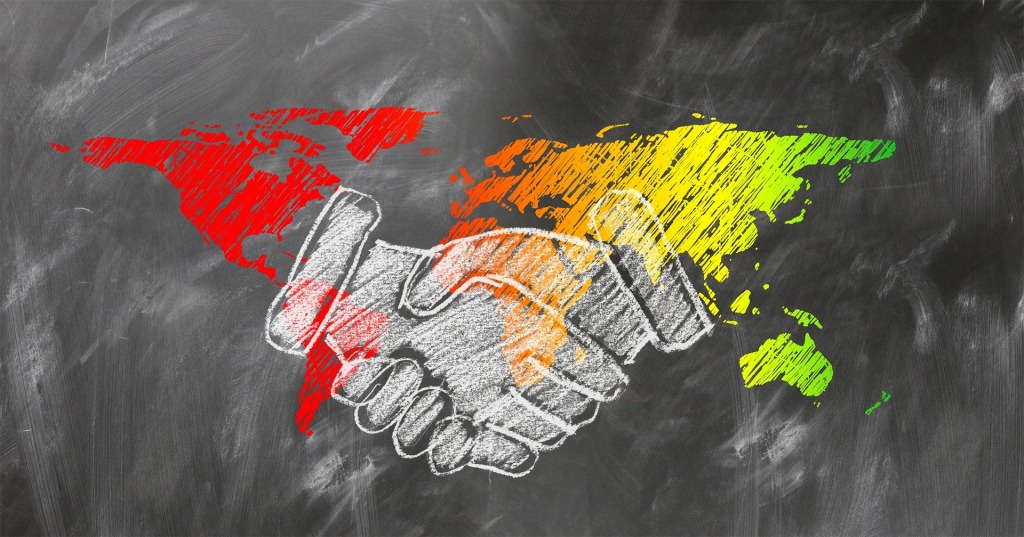
- 10 Feb 2024
Why is it in the News?
While presenting the interim Union budget, Finance Minister Nirmala Sitharaman stated that India will be negotiating Bilateral Investment Treaties (BITs) with its trade partners to boost the inflow of foreign direct investment.
Background:
- India's economic terrain is undergoing a significant shift following the Finance Minister's announcement of plans to negotiate Bilateral Investment Treaties (BITs) during the interim Union budget presentation.
- This decision arrives at a critical juncture, coinciding with India's struggle to address declining levels of foreign direct investment (FDI) and the aftermath of adopting the 2016 Model BIT.
- Given these circumstances, it becomes imperative to explore the evolution of India's BITs, assess the implications of the 2016 model, and analyze the recent policy shift to gauge its potential impact on FDI.
Evolution of Bilateral Investment Treaties (BITs) in India:
- Origins of BITs in India (1990s): During the mid-1990s, India embarked on a significant economic policy shift by initiating Bilateral Investment Treaties (BITs) to attract foreign direct investment (FDI) and create an enabling environment for economic growth.
- The primary aim was to demonstrate India's commitment to protecting investments made by individuals and companies from partner countries.
- The signing of the first BIT between India and the UK in 1994 laid the groundwork for a series of agreements that would play a pivotal role in India's global economic integration.
- Expansion of BITs as Economic Diplomacy (Late 90s to 2000s): BITs in India evolved into strategic tools to mutually encourage and safeguard investments in each other's territories.
- As India sought to position itself as a premier investment destination, these treaties became instrumental in signaling its dedication to safeguarding the rights and interests of foreign investors.
- This period witnessed a proliferation of BITs, reflecting India's acknowledgement of the importance of foreign capital in stimulating domestic industries and infrastructure development.
- Emerging Challenges and Disputes (2010s): The significance of BITs became evident in 2010 with the settlement of the first-ever investor treaty claim in India.
- Subsequent events, including the unfavorable award in the Australia-India BIT dispute (White Industries v Republic of India) in 2011, underscored the complexities and challenges associated with managing disputes arising from these agreements.
- By 2015, India found itself embroiled in 17 known BIT claims, with the Cairn Energy Plc case being particularly notable.
- These challenges prompted a critical reassessment of India's approach, leading to the adoption of the 2016 model BIT.
- Adoption of the 2016 Model BIT and Policy Shift: The adoption of the 2016 model BIT signalled a significant shift in India's approach to BITs.
- It was viewed as a protective measure, resulting in the termination of numerous existing treaties.
- However, the 2016 model BIT faced criticism for its exclusion of key international law principles, such as 'fair and equitable treatment' and 'most favoured nation.'
- Additionally, it introduced a requirement for investors to exhaust local remedies before resorting to international arbitration, potentially delaying the dispute resolution process.
Issues with the 2016 Model of BIT and their Consequences:
- Protective Nature: The introduction of the 2016 Model BIT marked a significant shift in India's approach to bilateral investment treaties, aiming for greater protection.
- Positioned as a response to past disputes, it led to the termination of numerous existing treaties, signalling a desire to recalibrate engagement terms with foreign investors.
- However, concerns arose about its potential impact on India's attractiveness as an investment destination.
- Absence of Key International Law Doctrines: Criticism was directed at the 2016 model BIT for deviating from established international law doctrines.
- Notably, it lacked principles like "fair and equitable treatment" and "most favoured nation," raising doubts about fairness and protection for foreign investors.
- This omission complicated the interpretation and enforcement of investment agreements, adding uncertainty for investors.
- Requirement for Exhausting Local Remedies: The 2016 model BIT introduced a requirement for investors to exhaust local remedies before pursuing international arbitration.
- While this aimed to promote domestic dispute resolution, it created delays and challenges.
- Investors found navigating local legal systems time-consuming and ineffective, potentially discouraging investment.
- Adverse Impact on FDI and Renegotiation Challenges: The consequences of the 2016 model BIT were evident in declining FDI in India.
- FDI equity inflows dropped by 24% to $20.48 billion in April-September 2023, reflecting investor concerns.
- The termination of existing treaties and challenges with the new model hindered India's ability to renegotiate terms, affecting its attractiveness to foreign investors.
- The Cairn Energy Plc case, resulting in a significant award against India, highlighted the difficulties under the 2016 model BIT.
Government Recommendations and Policy Reforms Following Challenges with the 2016 BIT Model:
- Acknowledgement of Limitations and Policy Adjustment: Recognizing the constraints and hurdles posed by the 2016 Model BIT, the Indian government has signalled a shift towards more adaptable and practical strategies.
- The announcement during the presentation of the interim Union budget, highlighting the negotiation of Bilateral Investment Treaties with trading partners, signifies a departure from rigid approaches.
- This acknowledgement underscores the necessity for a nuanced approach that considers evolving international investment dynamics and global economic shifts.
- Parliamentary Standing Committee Proposals: In 2021, the Parliamentary Standing Committee on External Affairs proposed several key recommendations to reevaluate the existing BIT framework.
- These recommendations aimed to tackle challenges associated with the 2016 model BIT and foster a more investor-friendly environment.
- One notable recommendation emphasized the importance of timely dispute resolution through pre-arbitration consultations and negotiations.
- This proactive stance aims to streamline the dispute-resolution process and alleviate pressure on both foreign investors and the Indian legal system.
- Addressing India's Contract Enforcement Ranking: India's low ranking in contract enforcement, currently at 163 out of 190, remains a significant concern.
- Recognizing the link between an efficient legal framework and foreign investment attractiveness, recommendations from the Parliamentary Standing Committee serve as a call to action.
- A timely review of treaties and alignment with global best practices becomes crucial to improving the ease of doing business, reinforcing India's commitment to fostering an investment-friendly climate.
- Free Trade Agreement (FTA) with the UK: As part of ongoing policy reforms, India is working towards finalizing a free trade agreement (FTA) with the UK.
- This strategic endeavour has undergone over 14 rounds of negotiations, with disputes being a major obstacle.
- The proposed FTA is expected to eliminate the requirement for exhausting local remedies, offering a mechanism for swift dispute resolution through international arbitration.
- This pragmatic approach acknowledges the importance of rapid dispute resolution in nurturing international trade relationships.
Conclusion
Achieving a $5 trillion economy hinges on robust international trade and secure investments in India. A forward-looking strategy for BITs is essential to attract and maintain long-term foreign investments, and the government's recent initiative is a positive move. Nevertheless, adopting a more tailored approach, rather than a one-size-fits-all model, is necessary to facilitate rapid yet sustainable growth in cross-border flows.
Contribution of Dr MS Swaminathan Towards Indian Agriculture (Indian Express)
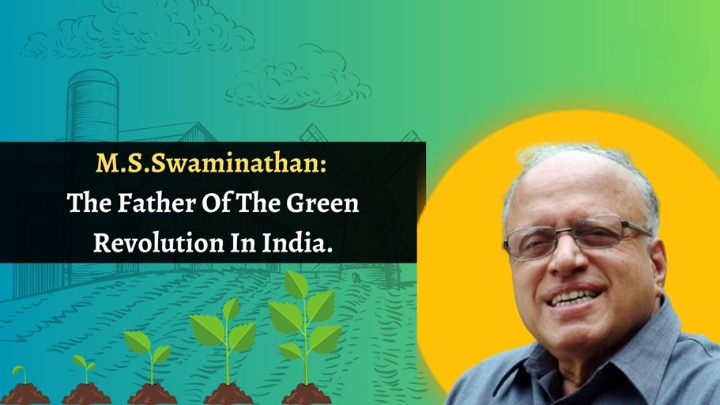
- 09 Feb 2024
Why is it in the News?
Recently, Prime Minister Modi announced that the agriculture scientist M S Swaminathan will be honoured with the Bharat Ratna.
Who was MS Swaminathan?
- Monkomb Sambasivan Swaminathan (MS Swaminathan) was born on August 7, 1925, in Kumbakonam, Madras Presidency (now Tamil Nadu).
- He was an agronomist, agricultural scientist, plant geneticist, administrator, and humanitarian.
- He was known as the ‘father of the Green Revolution’ in India.
- Swaminathan began his career in 1949 researching the genetics of potatoes, wheat, rice, and jute.
- He played a crucial role in developing high-yielding varieties of paddy that helped ensure India’s low-income farmers produced more yield.
- Also known as the ‘father of economic ecology’ by the United Nations Environment Programme, he worked with agriculture ministers including C Subramaniam and Jagjivan Ram during the 1960s and 70s for the success of the ‘Green Revolution’ in India.
- An initiative that paved the way for an exponential rise in the productivity of wheat and rice through the adaptation of chemical-biological technology.
- Career: Swaminathan also held administration positions in various agricultural research laboratories.
- He served as the director general of the Indian Council of Agricultural Research and International Rice Research Institute.
- He also worked as the principal secretary of the Ministry of Agriculture in 1979.
- Later, he also served as the President of the International Union of the Conservation of Nature and Natural Resources.
- In 2004, Swaminathan was appointed as chairman of the National Commission on Farmers.
- Awards and Recognition: He was awarded with the Ramon Magsaysay Award in 1971 and the Albert Einstein World Science Award in 1986.
- He was awarded the first World Food Prize in 1987, following which he set up the MS Swaminathan Research Foundation in Chennai.
- Swaminathan has also been conferred with the Padma Shri, Padma Bhushan, and Padma Vibhushan - the three most prestigious awards.
- Apart from these, he was also given the H K Firodia Award, the Lal Bahadur Shastri National Award, and the Indira Gandhi Prize.
- Swaminathan also contributed to various agricultural and environmental initiatives globally.
- He was named one of the 20 most influential Asians of the 20th century by Time magazine.
- He also served as a Member of Parliament in the Rajya Sabha from 2007 to 2013.
- MS Swaminathan passed away in September 2023 at the age of 98.
- His decision to focus on ensuring India's food security led him to become a key figure in the Green Revolution of the 1960s, which transformed India from a food-deficient nation to one of the world's leading agricultural producers.
- His collaboration with Nobel laureate Norman Borlaug introduced high-yielding varieties of wheat and rice, saving millions from starvation.
- Dr Swaminathan's transformative influence on Indian agriculture began to emerge when he championed the introduction of high-yielding crop varieties.
- His visionary approach was instrumental in pioneering the Green Revolution in India when the country was still grappling with poverty and a lack of social security.
- The impact of Dr. Swaminathan's efforts was nothing short of revolutionary.
- India's food production skyrocketed, and the nation moved from a state of food scarcity to food self-sufficiency.
- His work not only averted potential famines but also elevated the economic conditions of countless farming communities.
How MS Swaminathan Contributed to the Green Revolution?
- MS Swaminathan was greatly influenced by Mahatma Gandhi's teachings of selfless service to the poor and the nation.
- He was very much influenced by the 1943 Bengal famine, which killed up to three million people and realised the need to improve agriculture and food security in India.
- After Swaminathan’s work on rice, he and other scientists worked on doing the same to enhance productivity for the wheat crop.
- India had to get Norin dwarfing genes from Norman Borlaug in Mexico to enhance the productivity and adaptability of its wheat crops.
- These genes, known for their ability to produce shorter wheat plants, were instrumental in the Green Revolution, as they helped increase yield potential and improve resistance to lodging (falling over) in wheat plants.
- By acquiring these genes, India aimed to replicate the success of the Green Revolution and address food security challenges by boosting wheat production.
- Norman Borlaug was an American scientist who was working on developing more productive crop varieties.
- It led to him winning the Nobel Peace Prize in 1970 for his work in developing High Yielding Varieties (HYVs) of wheat.
- Many researchers and scientists were involved in this work but there isn’t any doubt that the basic strategic vision underpinning the Green Revolution in India, introducing a new genetic strain or ‘plant type’ responsive to increased fertiliser and water application came from MS Swaminathan.
- The problem with the traditional wheat and rice varieties was that they were tall and slender.
- These ‘lodged’ – fell flat on the ground — when they grew and their heads were heavy with well-filled grains produced in response to high fertiliser doses.
- Through Swaminathan’s research on rice, a reduction in plant height was sought to make them less lodging-prone but this was not easy to do.
- His strategy of developing semi-dwarf wheat varieties using mutagenesis exposing plants to chemicals or radiation to introduce desirable modifications in their DNA did not, however, work.
- The lowering of plant heights led to a simultaneous reduction in the size of the grain-bearing panicles or earheads.
- The search for an ideal variety led him to contact American scientist Orville Vogel.
- He played a role in developing a ‘dwarf wheat’ called Gaines, which had a high yield.
- It contained dwarfing genes from a dwarf wheat called the Norin-10.
- Vogel agreed but was unsure of the wheat’s potential in the Indian climate and thus advised Swaminathan to approach Norman Borlaug, who had incorporated the same dwarfing genes through Vogel’s lines into his spring wheat varieties in Mexico that were better suited for India.
- Borlaug also later visited India, after Swaminathan proposed so to the Indian Agricultural Research Institute, allowing for the wheat breeding programme to commence.
- In 1963, they began a serious effort to breed dwarf wheat and within five years, this initiative led to what became known as the "Wheat Revolution."
- Indira Gandhi, the then Prime Minister of India, released a special stamp to mark the achievement.
The Side Effects of the Green Revolution:
- Despite its landmark role in achieving food sufficient in India, the Green Revolution has been criticised on multiple counts, such as:
- Benefiting the already prosperous farmers as it was introduced in states with higher productivity.
- Swaminathan recognised such issues as early as January 1968, addressing the Indian Science Congress at Varanasi.
- He highlighted concerns about the rapid spread of a few high-yielding crop varieties replacing diverse local ones, leading to potential problems like soil degradation, desertification, excessive pesticide use, and unsustainable groundwater extraction.
- Unfortunately, many of these concerns have materialised today.
- He also lent his support to farmers as the head of the National Commission on Farmers from 2004-06, he recommended that the Minimum Support Price at which farmers sell their crops to the government should be at least 50 per cent more than the weighted average cost of production.
- For his contributions, Swaminathan was awarded the first World Food Prize Laureate in 1987, for “developing and spearheading the introduction of high-yielding wheat and rice varieties into India during the 1960s when that country faced the prospect of widespread famine.
- Wheat production doubled in just a few years, making the country self-sufficient and saving millions from extreme food deprivation.
Significance of Union Budget's Deep Tech & Research Funding (Indian Express)

- 08 Feb 2024
Why is it in the News?
In her Interim Budget speech, Finance Minister Nirmala Sitharaman announced a Rs 1 lakh crore fund to provide long-term, low-cost or zero-interest loans for research and development.
Context:
- Finance Minister, Nirmala Sitharaman in her Interim Budget speech, announced a Rs 1 lakh crore fund to provide long-term, low-cost, or zero-interest loans for research and development.
- A new scheme to strengthen deep-tech capabilities in the defence sector that is likely to be followed up later was also announced.
- The separate announcements on the fund and defence deep tech are intricately linked and must be seen together with the government’s other plans for the R&D sector.
What is Deep Tech?
- Deep tech refers to advanced and disruptive technologies, many of which are still under development, that have the potential to trigger transformative change and provide solutions for the future.
- The term is used to describe cutting-edge research in nanotechnology, biotechnology, material sciences, quantum technologies, semiconductors, artificial intelligence, data sciences, robotics, 3D printing, etc.
What are the Advantages of Deep Tech?
- These technologies are expected to play a key role in addressing complex global challenges like climate change, hunger, epidemics, energy access, mobility, physical and digital infrastructure, and cyber security including:
- Economic Implications: Advanced capabilities in deep tech are also likely to enhance productivity drive economic growth create jobs in coming years, and offer a competitive advantage to countries with strong foundations in these areas.
- Opportunities for India: With its large base of relatively high-quality science and engineering manpower and a fairly well-established technology culture, India feels it is well-placed to be one of the frontrunners in these areas.
- Potential Benefits: There is scope to contribute to the development of these technologies, which can ensure early adoption, shares in intellectual property, indigenous know-how, and self-reliance.
- Major associated benefits in terms of spin-off technologies, trained manpower, entrepreneurship and technology exports can accrue as well.
Initiatives by the GOI to Build a Deep Tech Ecosystem
- Over the past few years, the government has tried to incentivise research in some of these areas by setting up a National Mission on Transformative Mobility and Battery Storage and, more recently, a National Quantum Mission.
National Mission on Transformative Mobility and Battery Storage:
- This mission is aimed at fostering innovation in the mobility and energy storage sectors.
- The government encourages research and development in electric vehicles, advanced battery technologies, and sustainable mobility solutions through focused platforms and financial incentives.
- It targets challenges related to environmental sustainability and energy efficiency.
National Quantum Mission:
- Recognizing the transformative potential of quantum technologies, the government has initiated the National Quantum Mission.
- This effort concentrates on promoting research and development in quantum computing, communication, and sensing.
- Quantum technologies hold promise for revolutionizing various industries, and the mission aims to position India as a leader in global quantum advancements.
National Deep Tech Startup Policy (NDTSP):
- In addition to mission-oriented strategies, the government has devised a policy framework to create a conducive environment for deep tech companies.
- The NDTSP addresses specific challenges faced by technology startups and aims to nurture a thriving ecosystem for their growth.
- Currently awaiting government approval, it embodies a comprehensive approach to cultivating a vibrant deep-tech startup ecosystem in India.
- Objectives and Key Components of NDTSP: The NDTSP is designed to achieve several objectives, including:
- Competitiveness: Fostering innovation to enable startups to compete globally.
- Collaboration: Facilitating partnerships between startups and international counterparts.
- Incentives: Providing appropriate incentives for companies investing in innovation and research.
The policy outlines key components to achieve its goals, such as:
- Funding Opportunities: Creating avenues for long-term funding to support sustained innovation.
- Intellectual Property Rights: Establishing a simplified yet robust intellectual property rights regime.
- Tax Incentives: Offering tax incentives to encourage investment in deep tech startups.
- Regulatory Framework: Developing a conducive regulatory environment to streamline operations.
- Standards and Certifications: Establishing standards and certifications to ensure quality and reliability.
- Talent Nurturing: Focusing on nurturing talent through skill development and educational initiatives.
- Industry-Academia Collaboration: Facilitating linkages between industry, research centres, and educational institutions to promote knowledge exchange.
The Challenge of Funding in Deep Tech Research:
- Challenges in Research Funding Landscape: There's a persistent concern within the scientific community regarding the need for more research funding.
- India's investment in research lags behind the global average, particularly in comparison to scientifically advanced nations that serve as direct competitors.
- Disparity Between Targets and Actual Spending: For more than two decades, the Indian government has set a target of allocating at least 2% of the GDP for research and development.
- Despite an increase in absolute spending, the proportion of GDP dedicated to research has dwindled in recent years.
- Currently, India allocates a mere 0.65% of its national GDP to research and development activities, significantly below the global average of approximately 1.8%.
Government's Initiatives to Address the Funding Challenges:
- Harnessing Public-Private Collaboration: Recent governmental directives reflect a recognition that significant boosts in research and development expenditure may only be attainable through effective partnerships with the private sector.
- Initiatives are underway to forge synergies among industry, research laboratories, and educational institutions, aimed at bolstering both research activities and the financial resources available to support them.
- Introduction of the National Research Foundation (NRF): The establishment of the National Research Foundation (NRF), operational in recent times, stands as a key component of this strategy.
- With an objective to tackle the funding hurdle, the NRF is set to procure approximately 70% of its Rs 50,000 crore allocation over the next five years from the private industry.
- This collaborative model is envisioned to cultivate a more sustainable and resilient ecosystem for deep tech research and development in India.
The 1 Lakh Crore Fund: Anticipations, Enthusiasm, and Doubts:
- Anticipations: The provision of a Rs 1 lakh crore fund for financing research and development is deemed crucial in fortifying the research landscape.
- This fund holds particular promise for startups and private sector ventures in need of initial funding to kickstart their projects.
- Anticipations are high that these initiatives will gain momentum with the injection of funds.
- Enthusiasm and Doubts: While the government expresses optimism regarding the potential impact of this substantial fund, there exists scepticism within the scientific community.
- Past expectations of significant private sector contributions to research have not materialized, leading to uncertainties and reservations among researchers.
- Scientists argue that there's an imbalance in expectations, with excessive reliance on the private sector without a corresponding increase in government funding.
- The unpredictability and inadequacy of private-sector financing present significant challenges.
- Currently, the government appears to heavily rely on the success of its new funding initiatives for research.
- However, the budgetary allocations for science and research departments in the Interim Budget show only nominal increases.
Conclusion
- The recent initiative promises startups and other private sector ventures access to seed funding, offering potential benefits for their projects, yet, to boost R&D expenditure, fostering deeper partnerships with the private sector is essential. Initiatives are underway to enhance collaboration among industry, research laboratories, and educational institutions, aiming to diversify research activities and amplify available funding.
Public Examinations (Prevention of Unfair Means) Bill, 2024 (Indian Express)
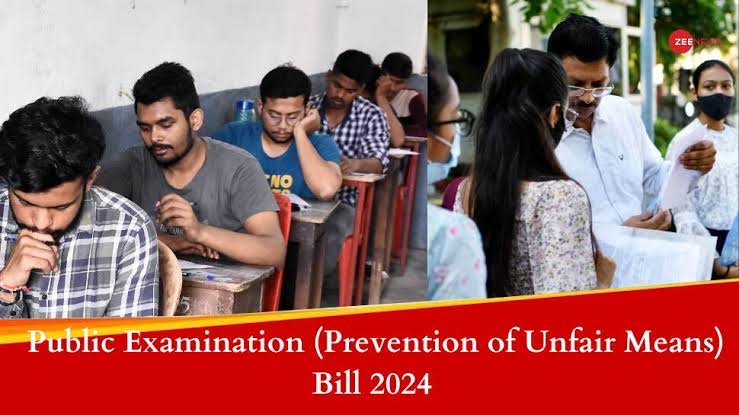
- 06 Feb 2024
Why is it in the News
The Public Examinations (Prevention of Unfair Means) Bill, 2024, was introduced in Lok Sabha on 5th Feb which aims to prevent “unfair means” in order to “bring greater transparency, fairness and credibility to the public examinations system”.
Context:
- The Centre recently tabled the draft of the Public Examinations (Prevention of Unfair Means) Bill, 2024 in Parliament.
- This legislative proposal aims to prevent unfair means in public examinations and common entrance tests held across the country.
- In a bid to tighten the noose on public examinations, the proposed law provides for punishment, including imprisonment, in instances of malpractice in these tests.
- The Bill serves as a model draft for states to adopt at their discretion, aiding them in preventing criminal elements from disrupting the conduct of their state-level public examinations.
- At present, there is no specific substantive law to deal with unfair means adopted or offenses committed by various entities involved in the conduct of public examinations by the Central Government and its agencies.
- Therefore, it is imperative that elements that exploit vulnerabilities of the examination system are identified and effectively dealt with by a comprehensive Central legislation.
Which Exams are “Public Examinations” as Defined in the Bill?
- Under Section 2(k) of the Bill, a “public examination” is defined as any examination conducted by a “public examination authority” listed in the Schedule of the Bill, or any “such other authority as may be notified by the Central Government”.
- The schedule lists five public examination authorities:
- (i) the Union Public Service Commission (UPSC), which conducts the Civil Services Examination, Combined Defence Services Examinations, Combined Medical Services Examination, Engineering Services Examination, etc.;
- (ii) the Staff Selection Commission (SSC), which recruits for Group C (non-technical) and Group B (non-gazetted) jobs in the central government;
- (iii) the Railway Recruitment Boards (RRBs), which recruit Groups C and D staff in the Indian Railways;
- (iv) the Institute of Banking Personnel Selection (IBPS), which hires at all levels for nationalized banks and regional rural banks (RRBs); and
- (v) National Testing Agency (NTA), which conducts the JEE (Main), NEET-UG, UGC-NET, the Common University Entrance Test (CUET), etc.
- Apart from these designated public examination authorities, all “Ministries or Departments of the Central Government and their attached and subordinate offices for recruitment of staff” will also come under the purview of the new law.
- The central government can add new authorities in the schedule through a notification as and when required.
What is Meant by the Use of “Unfair Means” in an Examination?
- Section 3 of the Bill lists at least 15 actions that amount to using unfair means in public examinations “for monetary or wrongful gain”.
- These acts include:
- Leakage of question paper or answer key or part thereof and colluding in such leakage;
- Accessing or taking possession of question paper or an Optical Mark Recognition response sheet without authority”;
- Tampering with answer sheets including Optical Mark Recognition response sheets.
- Providing solution to one or more questions by any unauthorized person during a public examination, and
- Directly or indirectly assisting the candidate” in a public examination.
- The section also lists:
- Tampering with any document necessary for short-listing of candidates or finalizing the merit or rank of a candidate.
- Tampering with the computer network or a computer resource or a computer system.
- Creation of a fake website” and “conduct of fake examination, issuance of fake admit cards or offer letters to cheat or for monetary gain” as illegal acts.
What Punishment does the Proposed Law Provide for Violations?
- Section 9 of the Bill states that all offenses shall be cognizable, non-bailable, and non-compoundable — which means that an arrest can be made without a warrant and bail will not be a matter of right; rather, a magistrate will determine whether the accused is fit to be released on bail.
- A non-compoundable offense is one in which the case cannot be withdrawn by the complainant even when the complainant and the accused have reached a compromise, and a trial must necessarily follow.
- Punishment for “any person or persons resorting to unfair means and offenses” can be three to five years in prison, and a fine up to Rs 10 lakh.
- If the convict fails to pay the fine, “an additional punishment of imprisonment shall be imposed, as per the provisions of the Bharatiya Nyaya Sanhita, 2023,” Section 10(1) of the Bill says.
- Under Section 10(2), a service provider who is engaged to provide “support of any computer resource or any material, by whatever name it may be called” for the conduct of the examination can be fined up to Rs 1 crore, along with other penalties.
- The Bill provides for harsher punishment in cases of organized paper leaks, where “organized crime” is defined as unlawful activity by a group of persons colluding in a conspiracy “to pursue or promote a shared interest for wrongful gain in respect of a public examination”.
- Section 11(1) says the punishment for organized crime will be “imprisonment for a term not less than five years but which may extend to ten years” and a fine “which shall not be less than one crore rupees”.
Why has the Government Brought this Bill?
- In recent years, there has been a significant rise in cases of question paper leaks during recruitment exams nationwide.
- An investigation uncovered at least 48 instances of paper leaks across 16 states over the past five years, disrupting the hiring process for government jobs and affecting approximately 1.51 crore applicants for about 1.2 lakh posts.
- The Statement of Objects and Reasons of the Bill highlights that malpractices in public examinations lead to delays and cancellations, adversely affecting millions of youth.
- Currently, there is no specific substantive law addressing unfair means or offenses committed during these examinations.
- It is crucial to identify and effectively deal with elements exploiting vulnerabilities in the examination system through comprehensive Central legislation.
- The primary objective of the Bill is to enhance transparency, fairness, and credibility in public examination systems, ensuring that sincere efforts of youth are duly rewarded and their future is secure.
- It aims to deter individuals, organized groups, or institutions from engaging in unfair practices that undermine the integrity of public examinations for monetary or wrongful gains.
- The Bill explicitly states that candidates, as defined within its scope, will not be subject to its provisions and will continue to be governed by existing administrative provisions of the relevant public examination authority.
- Once enacted, the Bill will also serve as a model draft for states to adopt at their discretion.
- This provision is expected to assist states in preventing criminal elements from disrupting the conduct of their state-level public examinations.
How to restore WTO’s authority (Indian Express)
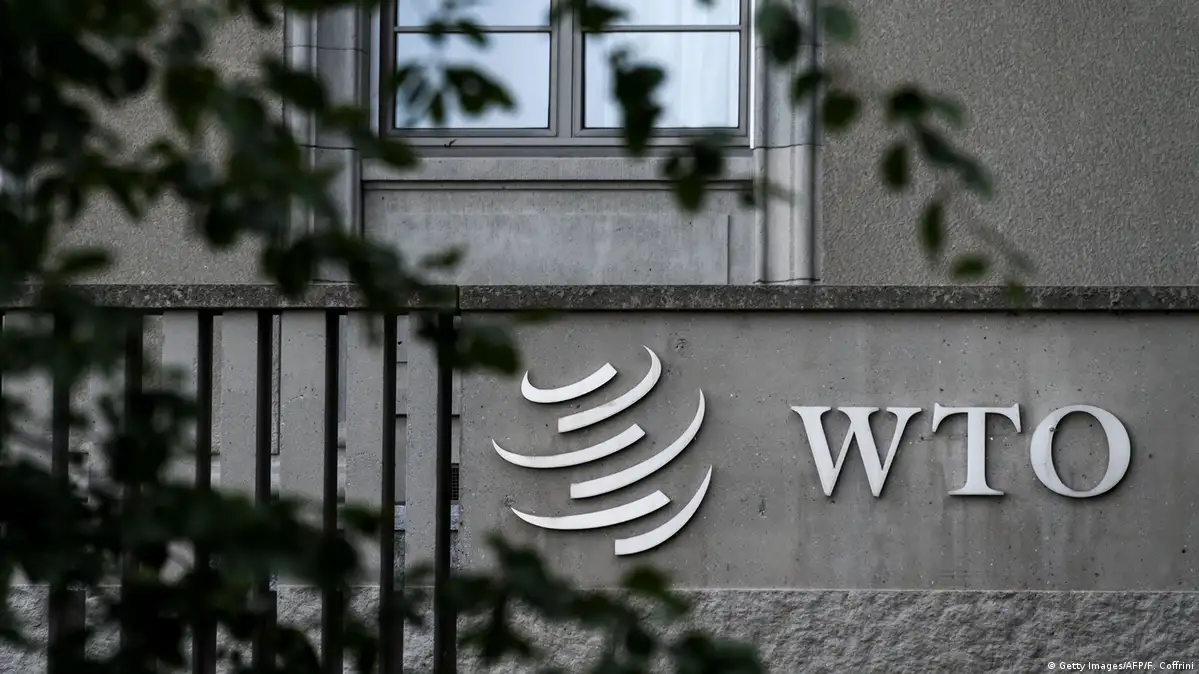
- 05 Feb 2024
Why is it in the News
Since the end of 2019, WTO’s crown jewel, the appellate body (AB) stands crippled because the US has single-handedly blocked the appointment of new members.
Context:
- The 13th ministerial meeting of the World Trade Organization (WTO) is scheduled in Abu Dhabi, presenting a chance to tackle the persistent crisis in the Dispute Settlement Mechanism (DSM).
- The effectiveness of WTO's key component, the DSM, has diminished since late 2019, mainly due to the United States obstructing the appointment of new Appellate Body (AB) members.
- Despite the implications of this crisis, there exist specific options for developing countries that could offer potential solutions to rejuvenate the DSM.
What is the World Trade Organization (WTO)?
- The WTO is an international institution responsible for overseeing global trade rules among nations.
- With 164 member countries (including Liberia and Afghanistan, the most recent additions in 2016) and 25 observer countries and governments, it officially commenced operations on January 1, 1995, replacing the 1948 General Agreement on Tariffs and Trade (GATT) in accordance with the 1994 Marrakesh Agreement.
Organizational Structure:
- The highest authority within the WTO is the Ministerial Conference, comprising all member states, typically meeting biennially with a consensus-driven decision-making approach.
- Daily operations are managed by three bodies, sharing the same membership:
- General Council:
- Functions as the primary decision-making body.
- Convenes as the Dispute Settlement Body (DSB) when addressing disputes between WTO members.
- Dispute Settlement Body (DSB):
- Empowered to establish dispute settlement panels.
- Refers matters to arbitration.
- Adopts reports from panels, Appellate Body, and arbitration.
- Monitors the implementation of recommendations and rulings, authorizing concession suspension in cases of non-compliance.
- Exclusive authority to make decisions, while panels and the Appellate Body can only offer recommendations.
- Trade Policy Review Body:
- Operates with terms of reference distinct from the General Council and DSB.
- Assesses the trade policies of member countries through periodic reviews.
- This structure ensures effective governance and dispute resolution within the WTO framework, emphasizing consensus in decision-making processes.
The Importance of the Appellate Body (AB):
- Enforceable Decision-Making:nThe Appellate Body (AB) holds the authority to review and, if necessary, overturn legal findings and interpretations by WTO panels.
- This enforceable nature ensures a conclusive resolution to trade disputes, fostering stability and predictability in international trade relations.
- Mandatory Jurisdiction: The AB's jurisdiction spans all WTO member countries, creating a mandatory framework for resolving disputes.
- Member nations are obligated to participate in the AB process, reinforcing the foundation of a rules-based international trading system.
- Advocacy for Equitable Practices: By addressing disputes and upholding compliance with WTO rules, the AB contributes to the promotion of fair and equitable trade practices.
- This approach establishes a level playing field for both developed and developing nations, supporting inclusivity and sustainable economic growth.
Challenges in the Dispute Settlement Mechanism (DSM):
- Appellate Body's Paralysis: Since late 2019, the AB, integral to the DSM, has been practically non-functional due to the blockage of new member appointments, primarily led by the United States dissatisfied with previous dispute outcomes.
- This obstruction erodes the binding nature of the dispute resolution process, creating a legal void.
- Evasion of Compliance: With the AB inoperable, countries have found a loophole to evade compliance with WTO panel rulings.
- Nations can appeal into the void, rendering the DSM ineffective and contradicting its purpose of providing a binding and enforceable resolution to trade disputes.
- Prolonged Dispute Resolution: The absence of a functioning AB leads to delays in resolving trade disputes.
- Without a binding appellate process, disputes may linger, contributing to economic uncertainties and potential retaliatory actions among trading partners.
- Undermining Rules-Based Trade: The DSM crisis jeopardizes the concept of a rules-based international trading system.
- The inability to enforce agreed-upon rules diminishes predictability and stability crucial for global economic growth through trade.
Potential Measures for Developing Countries to Sustain a Functional Two-Tiered DSM:
- Participation in the European Union-led MPIA: Developing countries can explore joining the European Union-led multi-party Interim Appeal Arbitration Arrangement (MPIA) as an initial option.
- This arrangement formalizes the arbitration mechanism already available under the WTO, providing appellate review for panel reports.
- However, the MPIA's voluntary nature poses challenges, leading to ad hoc tribunals and limited adoption of awards by all WTO members.
- Creation of a Restricted AB with Limited Powers: Considering the opposition to the AB by the United States, an alternative is formulating a diluted AB with constrained powers.
- Limiting the AB's authority in various ways, such as deference to parties in dispute and non-persuasive value of rulings, may be explored.
- However, a diluted AB could contradict the intended role of the DSM in providing security and predictability to the multilateral trading regime.
- Resurrecting the AB with an Opt-Out Provision: Scholars Robert Howse and Wenhua Ji propose resurrecting the AB with a critical modification—allowing countries to opt out of compulsory AB jurisdiction.
- Countries opting out would be excluded from participating in the appellate process, settling disputes solely through a single-tier panel jurisdiction.
- Critics express reservations about altering the intrinsic nature of a two-tier binding DSM but acknowledge the need to safeguard the AB's integrity.
Conclusion
In addressing the WTO DSM crisis, developing countries, including India, confront a complex decision-making process.
While restoring the AB to its original form is ideal, the suggested resurrection with an opt-out provision offers a pragmatic compromise, recognizing challenges while preserving the AB's legitimacy.
As WTO member countries gather in Abu Dhabi, the way forward requires thoughtful consideration of trade-offs to balance DSM effectiveness with accommodating diverse interests in the global trade landscape.
Navigating the Risks and Benefits Associated with Internationalisation of Government Bonds (The Hindu)

- 03 Feb 2024
Why is it in the News?
There is a serious underestimation of the risks involved in the internationalisation of bond markets and currencies of emerging economies.
Context:
- In recent times, there have been noticeable changes in the global financial landscape, specifically regarding the inclusion of government bonds from emerging economies in global indices.
- It is crucial to evaluate the actions taken by J.P. Morgan, Bloomberg, and FTSE Russell in incorporating Indian local currency government bonds (LCGBs) into global indices amidst these developments.
- Exploring the reasons behind these moves and understanding the potential advantages and risks associated with such initiatives is essential.
J.P. Morgan's Influence on India's Financial Landscape:
- The inclusion of Indian local currency government bonds (LCGBs) in J.P. Morgan's Government Bond Index-Emerging Markets (GBI-EM) Global index suite in September 2023 marked a significant milestone.
- This step not only underscored India's financial stature but also raised expectations within the Indian financial sector.
- It spurred interest from other major index providers such as Bloomberg-Barclays and FTSE Russell.
- Subsequently, Bloomberg Index Services announced in January 2024 that India's fully accessible route (FAR) bonds would be incorporated into the Bloomberg Emerging Market Local Currency Index, further bolstering this trend.
- All eyes are now on FTSE Russell, highlighting the increasing influence and anticipation of reforms in India's government bond market.
What is the Process of Opening Local Bond Markets?
- Opening local bond markets to foreign investors is a strategic move by emerging economies to bolster their global financial integration.
- In India, this journey began in 2019 and gained momentum by 2020 with the introduction of the fully accessible route (FAR).
- Despite facing challenges like delays due to government policies on capital gains taxes and local settlement, the core policy remained unchanged, showcasing a dedication to promoting global financial inclusivity.
Advantages of Internationalising Bond Markets:
- Reduced Reliance on Domestic Institutions: By integrating local currency government bonds into global indices, emerging economies like India aim to lessen their dependence on domestic financial institutions.
- This diversified funding base can contribute to financial stability.
- Stability in Funds Tracking Indices: Inclusion in global indices can result in a more stable inflow of funds, as funds tracking indices typically have a longer investment horizon compared to short-term speculative flows.
- This stability can help mitigate volatility in local financial markets, providing a secure environment for both domestic and foreign investors.
- Lower Cost of Public Borrowing: Increased demand for local currency government bonds from global investors may lead to a decrease in domestic interest rates.
- As a result, the cost of public borrowing for the government can decline.
- Relief for Local Financial Institutions: Higher participation by foreign investors in local bond markets can alleviate the balance sheets of local financial institutions holding these bonds.
- This increased liquidity may encourage more lending and private investment.
- Mitigation of "Original Sin": Bond market internationalization helps mitigate the "original sin" problem faced by emerging economies, where they are unable to borrow internationally in their currencies.
- By issuing bonds in their currencies, these countries shift the exchange rate risk onto international lenders, potentially avoiding widespread private insolvencies during sharp currency declines.
Risks Involved with Internationalising Bond Markets:
- Loss of Control and Heightened Interest Rate Risks: Internationalizing bond markets poses the risk of losing control over long-term interest rates, leaving emerging economies more vulnerable to global interest rate fluctuations.
- This can negatively impact domestic bond markets and overall economic stability.
- Exchange Rate Volatility and Spillover Effects: Increased participation by foreign investors exposes local currency bond markets to exchange rate volatility.
- During periods of global risk aversion or liquidity challenges, adverse spillover effects can occur, as seen in events like the Lehman collapse in 2008 and recent shifts in U.S. monetary policy.
- Volatility in Inflows of Local Currency Bonds: Instances such as the rapid exit of investors from local currency assets in Malaysia during 2014-15 and the total withdrawal of foreigners from the bond market in Türkiye since Spring 2018 underscore the unpredictability of capital flows.
- These sudden stops and exits can lead to large reserve losses and currency declines, highlighting the potential for rapid market fluctuations.
Efforts by the Inter-Departmental Group (IDG) and RBI to Integrate Government Bonds into Global Indices:
- Indian LCGBs Integration into Global Indices: The RBI's journey towards internationalization commenced in October 2022 with an Inter-Departmental Group (IDG) report outlining efforts to integrate Indian local currency government bonds (LCGBs) into global indices.
- Diversification of Funding Channels: The inclusion of Indian LCGBs in global indices aims not only to attract foreign capital but also to diversify funding sources, reducing reliance on domestic institutions and tapping into large international resources.
- Stability Enhancement and Investment Allocation: The IDG report highlights the potential benefits of LCGB inclusion in global indices, such as enhancing the stability of funds tracking these indices.
- This stability can foster a more predictable investment environment, attracting long-term investors and improving investment allocation within the Indian financial market.
- Rupee Internationalization Beyond Bonds: Integrating LCGBs into global indices is just one aspect of a broader effort to internationalize the Indian rupee, as outlined in the IDG report.
- Another crucial component involves allowing banking services in the rupee (INR) outside the country.
Moving Forward:
- Striking a Delicate Balance: While the opening of local bond markets presents abundant opportunities, it necessitates careful balancing.
- Countries must balance the attraction of foreign capital with the management of potential risks.
- Drawing from Past Experiences: The experiences of Malaysia and Türkiye offer valuable lessons, emphasizing proactive management of offshore markets to prevent excessive speculation and maintain currency stability.
- These lessons underscore the importance of regulatory vigilance, timely interventions, and a balanced approach to fostering internationalization while preserving macroeconomic stability.
Conclusion
The process of opening local bond markets marks a crucial stride for emerging economies aiming for deeper integration into the global financial realm.
Recent developments involving J.P. Morgan, Bloomberg, and FTSE Russell underscore the growing recognition of India's financial market potential.
As India embarks on this journey, it must adeptly navigate complexities, carefully weigh risks and benefits, and adapt to the evolving global financial landscape for enduring success and stability.
The Indian government is currently drawing out an AI Mission that may soon head for Cabinet approval and could outlay more than Rs 10,000 crore. (Indian Express)
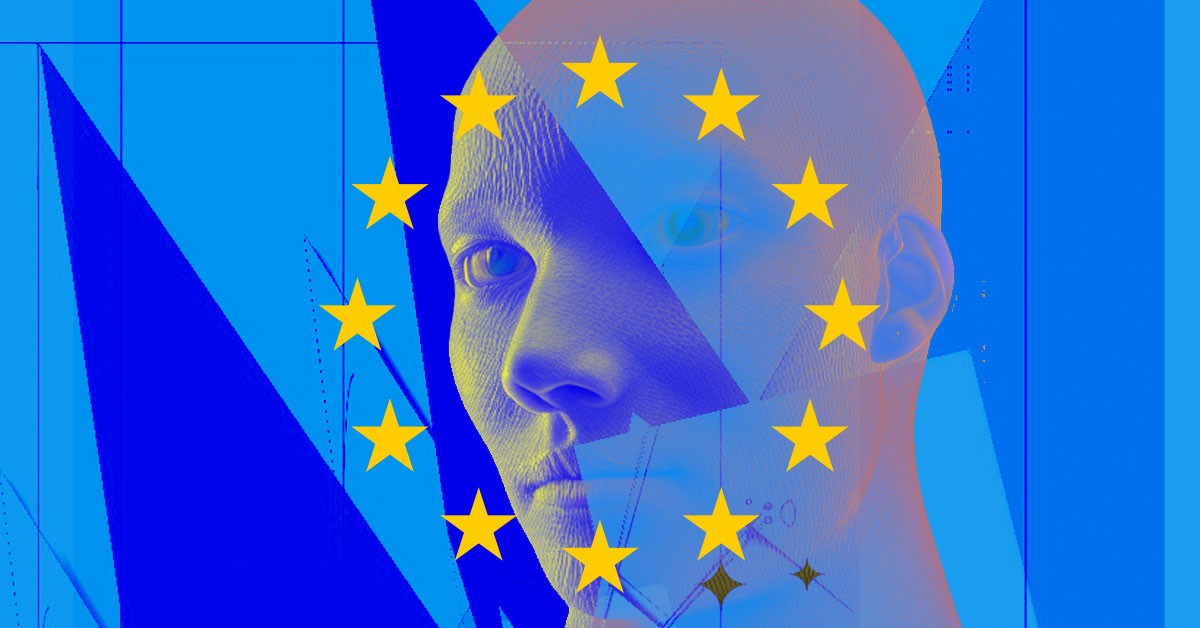
- 27 Jan 2024
Why is it in the News?
To dissuade concerns that Europe is overregulating artificial intelligence (AI), which could stifle innovation in the bloc, the European Commission has released a set of rules to enable start-ups and other businesses to access hardware – such as supercomputers and computing capacity – for them to build large- scale AI models
Context:
- To address concerns about excessive regulation stifling innovation in Europe, the European Commission has introduced rules allowing startups and businesses to access hardware, like supercomputers, to develop large-scale AI models.
- This supports the EU's new AI Act, designed to promote trustworthy AI across the region.
- India is also considering a similar initiative to provide computing capacity for startups, aiming to establish high-capacity data centres through a public-private partnership model.
- Access to computing power is crucial for building advanced AI systems, alongside innovative algorithms and datasets, especially challenging for smaller businesses to obtain.
What is Artificial Intelligence (AI)?
- Artificial Intelligence (AI) refers to the simulation of human intelligence processes by machines, particularly computer systems.
- These processes include learning, reasoning, problem-solving, perception, and language understanding.
- AI technologies enable machines to analyze large amounts of data, recognize patterns, and make decisions or predictions based on that data.
- There are several types of AI, including narrow or weak AI, which is designed for specific tasks like speech recognition or playing chess, and general or strong AI, which aims to perform any intellectual task that a human can do.
- Machine learning, a subset of AI, involves training algorithms to recognise patterns in data and make predictions or decisions without being explicitly programmed to do so.
- AI has applications across various industries, including healthcare, finance, transportation, and manufacturing.
- It is used for tasks such as medical diagnosis, fraud detection, autonomous vehicles, and predictive maintenance.
- As AI technology continues to advance, it holds the potential to revolutionize many aspects of society, improving efficiency, productivity, and decision-making processes.
What is Europe’s AI Innovation Plan?
- The European Commission has introduced a set of initiatives aimed at assisting European startups and small businesses in creating reliable AI technology.
- These initiatives encompass various measures to foster innovation among startups, including a proposal to grant special access to supercomputers for AI startups and the wider innovation community. The plan includes:
- Acquiring, upgrading and operating AI-dedicated supercomputers to enable fast machine learning and training of large general-purpose AI (GPAI) models.
- Facilitating access to the AI dedicated supercomputers, contributing to the widening of the use of AI to a large number of public and private users, including start-ups and SMEs.
- Supporting the AI startup and research ecosystem in algorithmic development, testing evaluation and validation of large-scale AI models.
- Enabling the development of a variety of emerging AI applications based on GPAI models.
How is the EU’s Plan Similar to India’s?
- The Indian government is currently outlining an AI Mission, which is expected to undergo Cabinet approval soon, with a budget exceeding Rs 10,000 crore.
- As part of this initiative, the government aims to develop its own 'sovereign AI,' enhance computational capabilities domestically, and provide compute-as-a-service to Indian startups.
- Capacity building will be pursued both within the government and through a public-private partnership model, emphasizing India’s goal to capitalize on the forthcoming AI boom as a vital economic driver.
- Overall, the country aims to establish a computing capacity ranging from 10,000 to 30,000 GPUs (graphic processing units) through the PPP model, in addition to 1,000-2,000 GPUs facilitated by the PSU Centre for Development of Advanced Computing (C-DAC).
- The government is exploring various incentive structures for private companies to establish computing centres in the country, including capital expenditure subsidies, operational expense-based incentives, and a "usage" fee model.
- The government intends to transform the GPU assembly into a digital public infrastructure (DPI), allowing startups to access its computational capacity at a reduced cost, without having to invest in GPUs, which are typically the largest expense in such operations.
Why is the EU especially enabling AI Innovation?
- Until now, the most prominent advancements in AI have been spearheaded by American companies like OpenAI and Google, along with emerging ventures such as Perplexity and Anthropic.
- Europe, which has traditionally prioritized regulating technologies with a focus on human rights, has faced criticism from the industry for potentially overregulating AI even before its widespread adoption across the continent.
- Unlike the US, where numerous American companies have made significant strides in offering hardware services to businesses, Europe has identified a need to facilitate access to hardware resources for AI development.
- This move by the European Commission follows the introduction of an AI Act last year, which has faced criticism.
- The legislation aims to establish safeguards for AI usage within the EU, including clear guidelines for its adoption by law enforcement agencies and provisions empowering consumers to report any perceived violations.
- Additionally, the AI Act imposes stringent restrictions on facial recognition technology and the use of AI to influence human behaviour, while also outlining severe penalties for companies found in breach of these regulations.
- Moreover, the legislation stipulates that governments can employ real-time biometric surveillance in public areas only in cases involving serious threats, such as terrorist attacks.
European Commission (EC)
- The European Commission is the European Union's executive body and represents the interests of Europe as a whole.
- It drafts proposals for new European laws.
- It manages the day-to-day business of implementing EU policies and spending EU funds.
- It is made up of 27 commissioners (one from each member state) and is based in Brussels.
- Each member state nominates a commissioner, but the nominated candidates must be approved by the European Parliament.
- The Parliament must also approve the President of the European Commission.
- The current President of the European Commission is Ursula von der Leyen.
- Commissioners do not represent their countries. Instead, they have a field of responsibility.
- To assist the commissioners in the performance of their duties, there is a staff of about 32,000 people employed by the Commission.
- This staff comes from all of the Member States and includes policy officers, translators, lawyers and researchers.
What does the European Commission do?
- Legislation – The Commission initiates legislation. It makes proposals for laws that are sent to the European Parliament and Council of the European Union for approval.
- Upholding EU law – The Commission can take action against businesses or states that are failing to comply with EU law.
- Policy – The Commission is the executive of the EU. It manages policies and drafts budgets.
- Representation – The Commission represents the EU in negotiations with other countries or organisations.
- The Commission meets once a week to adopt proposals, finalise policy papers and make decisions.
- Decisions are taken by a simple majority vote.
Why Punjab moved SC against the expansion of BSF jurisdiction (Indian Express)
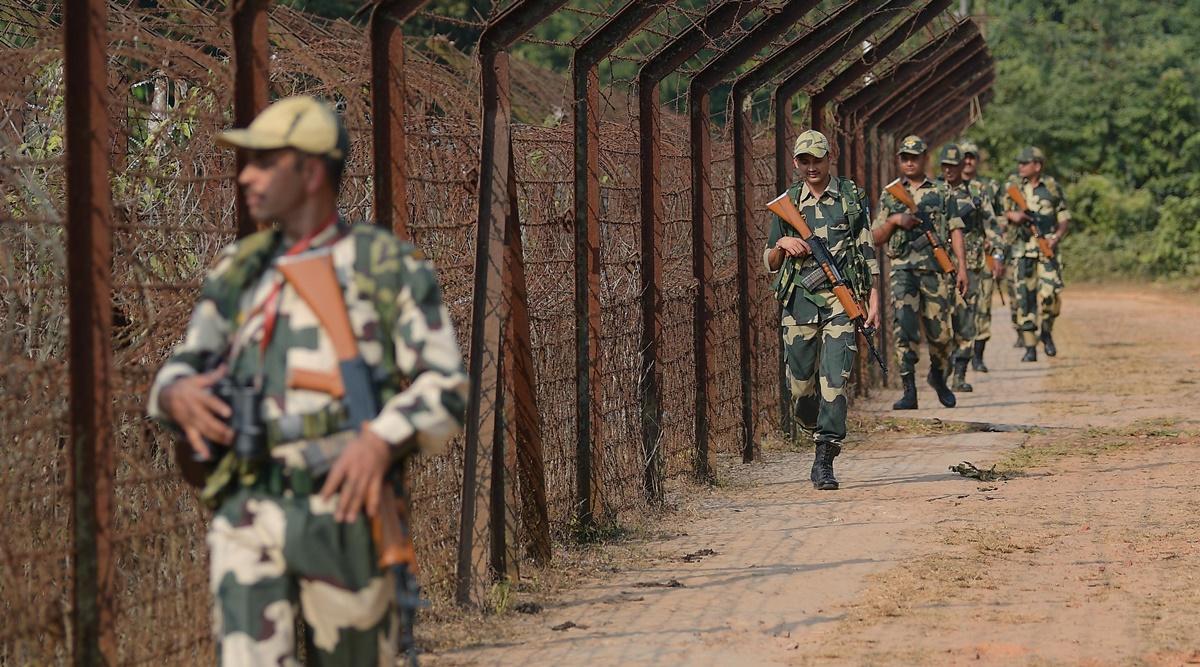
- 24 Jan 2024
Why is it in the News?
The Supreme Court is set to hear the dispute over the expansion of the Border Security Force (BSF) jurisdiction in Punjab.
Context:
- The Supreme Court will hear petitions filed by the Punjab government against the Centre’s notification expanding the jurisdiction of Border Security Forces (BSF) to 50 km from the international border in Punjab.
- This comes after the Centre in 2021 decided to expand the BSF’s jurisdiction to undertake search, seizure and arrest within a larger 50-kilometre stretch from the International Border compared to the earlier limit of 15 kilometres.
- The Centre had also decided to decrease the BSF’s area of operation in Gujarat from 80 kilometres from the border to just 50 kilometres.
What is the Border Security Force (BSF)?
- The BSF was established on 1 December 1965 after the India-Pakistan war.
- With a strength of about 2.65 lakh personnel, it has 192 operational battalions and deployed along the Pakistan and Bangladesh borders.
- It is the country’s largest border force and one of the Central Armed Police Forces of the Union of India under the administrative control of the Ministry of Home Affairs (MHA).
- The other forces include the Indo-Tibetan Border Police (ITBP), the Sashastra Seema Bal (SSB) and the Assam Rifles, Central Industrial Security Force (CISF), Central Reserve Police Force (CRPF) and National Security Guards (NSG).
- It also contributes dedicated services to the UN peacekeeping Mission by sending a large contingent of its trained manpower every year
- The BSF is meant to secure India’s borders with its neighbouring nations and is empowered to arrest, search and seize under a number of laws, such as the Criminal Procedure Code, the Passports Act, the Passport (Entry into India) Act, and the NDPS Act, to name a few.
Why was the BSF Jurisdiction Extended?
- Section 139(1) of the BSF Act allows the central government, through an order, to designate an area “within the local limits of such area adjoining the borders of India” where members of the BSF can exercise powers to prevent offences under any Acts that the central government may specify.
- Prior to the notification issued in October 2021, the BSF could exercise its powers within 15 kilometres of the border in Punjab, West Bengal and Assam.
- The Centre expanded this to within 50 kilometres of the border.
- The notification states that, within this larger 50-kilometre jurisdiction, the BSF can only exercise powers under the Criminal Procedure Code, the Passport (Entry into India) Act and the Passports Act.
- For other central legislations, the 15-km limit remains.
- This expansion was in response to the increased use of drones and Unmanned Aerial Vehicles, which have long-range capabilities and enable surveillance and the smuggling of arms and fake currency.
- The ‘menace of cattle smuggling’ and smugglers often seek refuge outside BSF jurisdiction.
- The centre also claimed that the notification makes the BSF jurisdiction uniform across states, as the 50-kilometre limit was already in place in Rajasthan.
- The same notification reduced the jurisdiction in Gujarat from 80 km to 50 km.
Why Punjab Challenged This Act?
- The state of Punjab filed an ‘original suit’ against the central government in the Supreme Court in December 2021 and alleged that the extension of the territorial jurisdiction of BSF encroaches upon its own constitutional jurisdiction.
- The Supreme Court has ‘original jurisdiction’ in disputes between the central government and states under Article 131 of the Constitution, which means cases of this kind can only be heard for the first time at the SC “to the exclusion of any other court”.
- The Punjab government claimed that expanding the jurisdiction of the BSF would compromise the state’s exclusive powers to legislate on matters involving the police and public order.
- These powers are provided in Entries 1 and 2 of the State List under Article 246 of the Constitution.
- They also claimed that the notification was issued without consulting with any of the states concerned.
How did Other States Respond?
- The states at the time had decried the move as an “irrational decision”, a “direct attack on federalism” and an attempt to “interfere through Central agencies”.
- Punjab and West Bengal denounced the move with the respective state Assemblies even passing resolutions against the Centre’s decision.
What are the Challenges Associated with Expanding Jurisdiction?
- Public Order vs. Security of State: Maintaining public order and policing, signifying peace, safety, and tranquillity, falls within the purview of State Governments (Entry 1 and Entry 2 of the State list, respectively).
- However, if a severe public disorder poses a threat to the security or defence of the State or the nation itself (Entry 1 of the Union list), it becomes a matter of concern for the Union Government as well.
- Federalism Strain: Issuing notifications without state government concurrence may be seen as an infringement on state powers.
- The Punjab Government argues that such notifications amount to the Centre encroaching under the pretext of security or development.
- Impact on BSF Operations: The extension of jurisdiction to policing in the hinterland contradicts the role of a border guarding force.
- This shift could potentially undermine the BSF's ability to fulfil its primary duty of guarding the international border.
Issues Specific to Punjab:
- Overlapping Powers: The extended 50 km jurisdiction grants concurrent power with state police over every cognizable offence under the Indian Penal Code (IPC).
- In a relatively small state like Punjab, this extension encompasses all major cities.
- In other states like Gujarat and Rajasthan, where the extension might be considered, Gujarat has substantial marshland, and extending jurisdiction there might be reasonable as it doesn't encompass major urban centres.
- Similarly, in Rajasthan, the presence of a desert reduces the impact of jurisdiction extension.
Way Ahead
- Emphasis on State Consent: Considering the security dynamics in India's vicinity, the existing collaboration between Central armed forces and State civil authorities remains suitable.
- Nonetheless, consulting with the State Government before deploying armed forces by the Union Government is recommended, whenever possible.
- State Empowerment: Each State Government, in coordination with the Union Government, should devise both short-term and long-term strategies to fortify its Armed Police.
- The aim is to achieve substantial self-reliance in managing Armed Police matters, necessitating the Central armed forces' intervention only during exceptionally severe disturbances.
- Regional Collaboration: Neighboring States can collaboratively establish a framework for utilizing each other's Armed Police in times of necessity through consensus.
- The Zonal Council stands out as the most apt platform for States within a zone to reach a consensus and formulate such arrangements.
WTO dispute settlement body revival faces delays over country differences: GTRI (Indian Express)
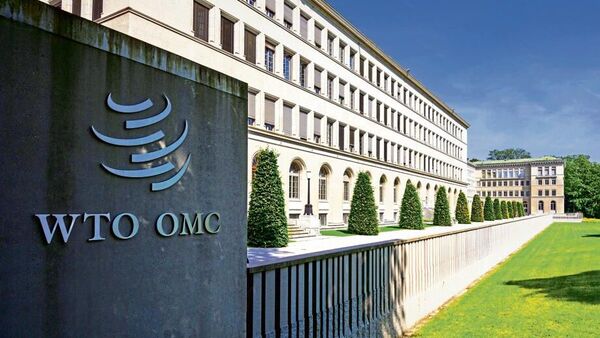
- 22 Jan 2024
Why is it in the News?
Reinstating a fully functional WTO dispute settlement body to resolve trade disputes between countries could take longer than expected as there continue to be wide differences between developed and developing countries over the issue, a GTRI report said recently.
Context:
- According to the GTRI report, an economic think tank, restoring a fully functional WTO dispute settlement body may take longer due to significant differences between developed and developing countries on the issue.
- This comes as the 164-member World Trade Organization (WTO) will gather next month in Abu Dhabi for the 13th ministerial conference (MC) to resolve different issues such as reforms in dispute settlement mechanisms, agriculture-related matters, etc.
Highlights of the GTRI Report:
- Escalating Protectionism: The absence of a functional dispute settlement body has fueled a surge in protectionist measures.
- Since 2017, the US has obstructed the appointment of new judges to the WTO's seven-member appellate court, citing perceived harm to its interests.
- Delicate Balancing Act: Addressing India's appeals for an effective appellate body, special and differential treatment (S&DT) provisions, and fairness must be delicately balanced with the concerns of other members.
- This includes considerations such as transparency and legal certainty, demanding significant compromise and negotiation.
- Complex Consensus Building: Reforming the dispute settlement system proves challenging as developed and developing nations hold divergent priorities and concerns.
- Achieving a consensus requires navigating through intricate negotiations.
- Disproportionate Impact on the US: The proper functioning of the WTO Appellate Body disproportionately affects the US, given that over a quarter of all WTO disputes involve challenges to US laws or measures.
What is the Global Trade Research Initiative (GTRI)?
- Global Trade Research Initiative (GTRI) is a research Group focused on Climate Change, technology and trade
- GTRI aims to create high-quality and jargon-free outputs for governments and industry from the perspective of development and poverty reduction.
- Mr Ajay Srivastava is the Founder of GTRI.
What is the World Trade Organization?
- The World Trade Organization (WTO) is an international organization that deals with the rules of trade between countries.
- It was founded in 1995 as a successor to the General Agreement on Tariffs and Trade (GATT), which, since 1948, had governed trade rules until the establishment of the WTO.
- The WTO describes its principal function as being to provide a forum for its members to negotiate on trade issues.
- It operates a body of rules in the form of WTO agreements.
- It provides a dispute settlement mechanism (DSM) to resolve disagreements over the rules between members.
- The WTO has many roles:
- It operates a global system of trade rules, acts as a forum for negotiating trade agreements, settles trade disputes between its members and it supports the needs of developing countries.
- All major decisions are made by the WTO's member governments:
- either by ministers (who usually meet at least every two years) or by their ambassadors or delegates (who meet regularly in Geneva).
- Decision-making:
- All major decisions within the WTO are made by its member governments.
- The top decision-making body is the Ministerial Conference, which typically convenes every two years.
- Day-to-day decisions are overseen by the General Council, which meets regularly in Geneva.
- Membership
- The WTO has over 160 members, representing 98% of world trade.
- Joining the WTO requires aligning economic and trade policies with its rules and negotiating entry terms with the existing membership.
- Budget:
- The WTO derives most of the income for its annual budget from contributions by its members.
- These contributions are based on a formula that takes into account each member's share of international trade.
- Director-General:
- Ngozi Okonjo-Iweala is the seventh Director-General of the WTO.
- She took office on 1 March 2021, becoming the first woman and the first African to serve as Director-General.
- Her term of office will expire on 31 August 2025.
- The primary purpose of the WTO is to open trade for the benefit of all.
About the WTO Dispute Settlement Body (DSB):
- The WTO Dispute Settlement Body (DSB) deals with disputes between WTO members.
- It was created in Article 2 of the Dispute Settlement Understanding (DSU) administers World Trade Organization (WTO) dispute settlement proceedings.
- The DSB consists of all WTO members, usually represented by Ambassadors or equivalent.
- It makes decisions on trade disputes between governments that are adjudicated by the Organization.
- The DSB has the sole authority to establish “Panels” of experts to consider the case and to accept or reject the Panels’ findings or the results of an appeal.
- The DSB uses a special decision procedure known as "reverse consensus" or "consensus against" that makes it almost certain that the Panel recommendations in a dispute will be accepted.
- The process requires that the recommendations of the Panel should be adopted "unless" there is a consensus of the members against adoption.
- The DSB monitors the implementation of the rulings and recommendations and has the power to authorize retaliation when a country does not comply with a ruling.
Why is the WTO Dispute Settlement Body (DSB) Inoperative?
- The WTO's dispute settlement system faces a critical challenge as its appeals mechanism is currently non-operational.
- The root cause lies in the United States objection to the appointment of new judges to the Appellate Body, citing concerns about judicial overreach.
- Consequently, a significant number of panel reports are left in limbo, with appeals going unanswered and disputes lingering without resolution.
- This impasse creates a formidable obstacle for WTO members seeking to enforce their obligations through complaints against measures they perceive as violations.
Conclusion
The WTO's dispute resolution mechanism grapples with a formidable crisis, rendering it largely nonfunctional due to the U.S.'s opposition to new Appellate Body judges. This impasse leaves disputes unresolved, severely limiting members' ability to enforce obligations. As the organization grapples with this crisis, finding a resolution becomes paramount to restore the efficacy of international trade agreements and uphold the WTO's core principles.
The problem with India’s science management (The Hindu)

- 20 Jan 2024
Why is it in the News?
As India remoulds its scientific establishment, the utility of scientists being given administrative tasks needs to be questioned.
Context:
- Sustained economic progress which can satisfy national ambition is invariably fuelled by scientific advances translated into deployable technologies.
- This has been the inevitable global experience since the onset of the Industrial Revolution.
- The government is overhauling India’s science establishment, which includes setting up the new National Research Foundation (NRF) and restructuring the Defence Research and Development Organisation (DRDO).
- In this scenario, a frank assessment of the current administrative ability to simultaneously optimise Indian science’s efficiency and resilience is necessary.
What are the Problems with India’s Scientific Advancement?
India has a long and rich history of scientific innovation. However, in recent years, the country's science management has come under increasing scrutiny. There are several problems with India's science management including:
- Lack of Funding in Research and Development (R&D): One of the most pressing issues is a lack of funding.
- India spends a relatively small percentage of its GDP on research and development, compared to other developed countries.
- For instance, India allocates only about 0.7% of its GDP to R&D, a considerably lower figure compared to global leaders like the United States (3.5%) and China (2.4%).
- This lack of funding has led to a brain drain of talented scientists, who are leaving India in search of better opportunities.
- India spends a relatively small percentage of its GDP on research and development, compared to other developed countries.
- Budgetary Challenges: The modest commitment to R&D stems from broader budget constraints, competing priorities, and a historical emphasis on immediate socio-economic needs.
- This presents a challenge in fostering a robust scientific ecosystem on a limited budget.
- Lack of Coordination: Another problem with India's science management is a lack of coordination.
- There are many different government agencies and departments that are involved in science and technology, but there is often a lack of communication and cooperation between them.
- This can lead to duplication of effort and a waste of resources.
- Inadequacies in Budget Allocation by Scientific Administration: The current scientific administration struggles to identify and invest in high-impact projects.
- For instance, in 2022, the Indian Space Research Organisation ranked eighth in space launches, lagging in key technologies.
- Similar setbacks are evident in nuclear energy, genomics, robotics, and artificial intelligence.
- Lack of Strategic Planning and Execution: Beyond expenditure, the challenge extends to strategic planning and execution of scientific projects.
- Failure to adapt swiftly to emerging technologies and allocate resources judiciously has resulted in India falling behind in crucial fields.
- Inconsistent Long-Term Funding: A major concern is the absence of consistent long-term funding for vital projects, especially when faced with occasional setbacks.
- Steady funding, despite occasional failures, is crucial for a resilient and effective scientific management system.
- Finally, India's science management is often criticized for being too bureaucratic. The process of getting funding for research projects can be long and complex, and it can be difficult for scientists to get the support they need to succeed.
The Role of Senior Scientists in India’s Science Administration:
- Diverse Responsibilities Impacting Focus: Senior scientists in India often juggle multiple responsibilities, including academic pursuits, administrative duties, and leadership positions.
- This dispersion of focus can lead to inefficiencies and a lack of dedicated attention to critical administrative tasks.
- Lack of Administrative Skills: The assumption that successful scientists can seamlessly transition into effective administrators overlooks the distinct skills required for scientific work versus administration.
- Managing institutions, allocating resources, and making organizational decisions demand specific skills not necessarily possessed by accomplished scientists.
- Insufficient Training for Administrative Roles: Inadequate training makes it challenging for scientists to excel in administrative roles.
- Tasks like metric selection, conflict resolution, and setting priorities require skills not inherently developed through scientific training.
- Administration involves translating policy into outcomes, a skill not typically prioritized in scientific training.
- Conflicts of Interest and Quality Control Issues: The dual roles of scientists as academics and administrators can result in conflicts of interest within institutions.
- Academic rivalries, bureaucratic challenges, and compromised quality control may emerge, leading to issues like plagiarism, unethical publication practices, and compromised scientific outcomes.
- Nationwide Transfer System Absence: The absence of a nationwide transfer system for scientists and science administrators exacerbates issues such as competition and egotism.
- The lack of mobility within the system can contribute to internal divisions and hinder the progress of scientific careers and projects.
- Internal Control Challenges: Allowing individuals within the system to regulate it can lead to clear drawbacks, impacting the impartiality and effectiveness of science administration in India.
Challenges in India's Science Administration: A Historical Perspective
- Concentration of High-End Equipment: Economic constraints post-independence led India to concentrate on high-end scientific equipment, notably in institutions like the IITs.
- This concentration birthed gatekeepers, controlling access to critical resources and establishing a hierarchical structure where a few institutions wielded disproportionate influence.
- Gatekeepers and Institutional Captures Concept: Over time, these gatekeepers solidified their positions, accumulating power, government support, and institutional control.
- This system created an environment where young scientists navigated a complex web of influence, paying tributes to those controlling vital resources.
- Impact on Scientific Careers: The gatekeeping system not only influenced resource access but also shaped career trajectories.
- The nexus between institutional power and individual careers became pivotal, with appointments, awards, and international recognition often tied to maintaining favourable relations with gatekeepers.
- Normalization of Unethical Practices: The gatekeeping system has normalized unethical practices within Indian science.
- High plagiarism rates, paid publications in questionable journals, and undisclosed dealings for government funding have become ingrained, compromising the ethical standards of scientific research.
- Stifling Genuine Scientific Outcomes: This erosion of ethical standards doesn't just compromise research quality but stifles genuine scientific outcomes.
- Scientists in conflict with this system face hurdles, hindering promising careers and perpetuating a culture where personal connections often outweigh merit.
A Comparative Analysis of the U.S. Model and Indian Science Administration:
- U.S. Model: In the U.S., scientists chosen for administrative roles are identified early in their careers and undergo targeted training for managerial tasks.
- The emphasis is on maintaining a distinct separation between scientific pursuits and administrative responsibilities.
- Indian Scenario: In contrast, India's science administration traditionally involves senior scientists taking up administrative roles without a clear separation between scientific and administrative functions.
- This integrated approach poses challenges, as the skill sets needed for effective scientific research often differ significantly from those crucial for efficient administration.
Conclusion
As India pursues economic and strategic progress, challenges in science management hinder its research and development, causing a lag in innovation compared to other developed nations. To remedy this, increasing funding for research and development is crucial, along with enhancing coordination among government agencies and streamlining the funding process for research projects. By addressing these issues, India has the potential to emerge as a global leader in science and technology, bringing substantial benefits to its economy and society.
Resistance to medicines on the rise, Govt urges docs to mention reason when prescribing antibiotics (Indian Express)

- 19 Jan 2024
Why is it in the News?
With antimicrobial resistance on the rise, the Union Health Ministry has urged doctors to write down the exact reason when prescribing antibiotics.
New Summary:
- The Union Health Ministry urged all doctors in medical colleges and medical associations to make it a mandatory practice to "write indication/reason/justification" while prescribing antibiotics.
- The Director General of Health Services also appealed to all pharmacists to strictly implement Schedule H and H1 of the Drugs and Cosmetics Rules and stop the over-the-counter sale of antibiotics.
- Antimicrobials are listed under Schedule H and H1 of the Drugs and Cosmetics Act, both of which are categories of medicines that cannot be sold without a prescription.
What is Antimicrobial Resistance?
- According to the World Health Organisation (WHO), antimicrobial resistance occurs when bacteria, viruses, fungi and parasites change over time and no longer respond to medicines.
- This makes infections harder to treat, increasing the risk of disease spread, severe illness and death.
- As a result, the medicines become ineffective and infections persist in the body, increasing the risk of spreading to others.
- AMR affects countries in all regions and at all income levels.
- Its drivers and consequences are exacerbated by poverty and inequality, and low- and middle-income countries are most affected as per WHO.
- Currently, AMR is one of the top global public health threats facing humanity.
- It is estimated that bacterial AMR was directly responsible for 1.27 million global deaths in 2019 and 4.95 million deaths were associated with drug-resistant infections.
- According to the Indian Council of Medical Research (ICMR), 1.25 million lives were lost to drug resistance in 2019.
- India has one of the highest rates of antimicrobial resistance worldwide.
- Despite being prescription drugs, antibiotics are commonly available over-the-counter (OTC) at retail pharmacies.
- In a recent survey, conducted by the National Centre for Disease Control (NCDC) under the Union Health Ministry, over half of the antibiotics prescribed in the country cause antimicrobial resistance.
- Treatment failures also lead to longer periods of infectivity and the prohibitively high cost of second-line drugs may result in failure to treat these diseases in many individuals.
Scenarios in Which Antimicrobials are Most Commonly Misused?
- There are two common scenarios in which antimicrobials are misused or overused even by doctors.
- One is when they cannot make a diagnosis on whether an infection is caused by a bacteria or virus and prescribe antibiotics to err on the side of caution.
- Two, when they know it is a bacterial infection but want to avoid secondary infection.
- This is where antibiotics can be conserved because very few people get such secondary bacterial infections.
- In the case of a serious patient, who is admitted to the hospital, broad-spectrum antibiotics may be prescribed for 48 hours, during which they can be tested for which pathogen is causing the infection.
- The antibiotics needed to be switched after that.
- Prescription for antimicrobials before and after a procedure or surgery is another way that antibiotics are commonly overused.
- Just a single dose of antibiotic 60 to 120 minutes before surgery is enough to prevent surgical site infections.
- However, doctors end up prescribing antibiotics for seven to 14 days.
- If proper sterilization of equipment, and preparation of the surgical site are done, infections cannot happen.
- Shaving the surgical site before surgery should be avoided because it can lead to abrasions that can get infected
The Result of Antimicrobial Overuse and Misuse?
- Common infections are not curable anymore.
- Tuberculosis and urinary tract infections have become multi-drug resistant.
- In hospitals, infections are resulting in longer treatment times with the use of costlier and more toxic antibiotics.
- Despite all efforts and successful surgeries, people are dying
Factors contributing to Antimicrobial Resistance (AMR):
- Unnecessary Prescriptions: In many cases, antibiotics are prescribed when they are not necessary or are not used correctly.
- This can lead to the survival and proliferation of resistant bacteria.
- Agricultural use: The use and overuse of antimicrobials in agriculture, including to promote growth and prevent disease in livestock, is also a major contributor to the development and spread of AMR.
- Selective pressure: In the presence of antimicrobials, microbes that carry resistance genes can survive, replicate, and quickly dominate the microbial population.
- Mutation: Rapid microbial reproduction allows for swift-evolution, and mutations during replication may aid individual microbes in surviving antimicrobial exposure.
- Inappropriate use: Unnecessary and injudicious use of antibiotic fixed dose combinations may lead to the emergence of bacterial strains resistant to multiple antibiotics.
- State of the Environment: There is growing evidence that the environment plays a key role in the development, transmission and spread of AMR. Its proliferation is linked to the triple planetary crisis of climate change, nature and biodiversity loss, pollution and waste.
- For example, higher temperatures, storms and floods can fuel the spread of bacterial, viral, parasitic, fungal and vector-borne diseases.
- Severe weather events can also cause wastewater and sewage to overwhelm treatment plants, allowing untreated sewage rich in antimicrobial-resistant microbes to contaminate surrounding communities.
- As well, wastewater laced with medicines, including that from animal production facilities, hospitals and pharmaceutical companies, can feed drug resistance.
Measures Taken by the Government of India to Address AMR:
- National Action Plan on AMR: The National Action Plan on Containment of Antimicrobial Resistance (NAP-AMR) was launched in 2017.
- Emphasis is placed on a One Health approach, involving various stakeholder ministries/departments.
- AMR Surveillance and Research Network (AMRSN): ICMR has set up the AMR Surveillance and Research Network (AMRSN) comprising 30 tertiary care hospitals, both private and government.
- Its purpose is to generate evidence and capture trends and patterns of drug-resistant infections in the country.
- Research and International Collaboration: Initiatives by ICMR aim to develop new drugs and medicines through international collaborations.
- This is intended to strengthen medical research in the field of AMR.
- Red Line Campaign: The Union health ministry initiated the "Red Line Campaign."
- It urges people not to use medicines marked with a red vertical line, including antibiotics, without a doctor’s prescription.
- The campaign aims to discourage unnecessary prescription and over-the-counter sales of antibiotics, addressing drug resistance for diseases like TB, malaria, urinary tract infections, and HIV.
Way Forward
- Antimicrobials have saved countless lives and are essential to modern medicine but we need to use them more judiciously.
- Healthcare professionals should only prescribe antibiotics when necessary and at the right dosage and duration.
- The use and overuse of antibiotics in agriculture must also be limited.
- Countries must adopt the One Health approach, which recognizes that the health of people, animals, plants and the environment are interdependent.
- Preventative measures, such as improving water, sanitation and hygiene, as well as putting in place strong international and national regulatory frameworks to enforce controls on the sale and distribution of antibiotics, will go a long way in reducing AMR.
Conclusion
AMR is a global problem; therefore, international cooperation among nations is essential. Developing multi-stakeholder national action plans is key. Countries must also work together on strategies, information sharing and surveillance of antimicrobial use and resistance. However, fixing the AMR crisis is not just dependent on governments alone. Pharmaceutical companies, the chemical industry, regulators, municipal governments, human and animal healthcare professionals and students, scientists and the public all have a role to play.
Govt disburses Rs 4,415 crore under PLI scheme; low job creation a concern (Indian Express)

- 18 Jan 2024
Why is it in the News?
Recently, the central government has disbursed an incentive amount of Rs 4,415 crore under its flagship Production-Linked Incentive (PLI) schemes for as many as eight sectors.
News Summary:
- The central government, through its flagship Production-Linked Incentive (PLI) schemes, has disbursed an incentive amount of Rs 4,415 crore until October in the current fiscal year across eight sectors.
- In the fiscal year 2023-24, Rs 1,515 crore has been disbursed, compared to Rs 2,900 crore in 2022-23 when payments under the scheme commenced.
- The government aims to achieve a disbursal target of Rs 11,000 crore by the end of this fiscal year.
- According to official statements, the employment generation, both direct and indirect, has exceeded 6.78 lakh.
- As of now, 746 applications have received approval in 14 sectors, with an expected investment exceeding Rs 3 lakh crore.
- Notably, 176 MSMEs are among the beneficiaries of the PLI schemes, particularly in sectors like pharma and telecom.
What is the Production Linked Incentive Scheme (PLI)?
- Production-linked incentive (PLI) schemes were first introduced in India in March 2020, mainly targeting three industries – Mobile Manufacturing and Electric Components, Pharmaceutical and Medical Device Manufacturing.
- The PLI concept has since expanded to 14 sectors to boost India’s manufacturing capabilities and encourage export-oriented production.
- The PLI schemes aim to develop capacities in the local supply chain, introduce new downstream operations, and incentivise investments into high-tech production.
- Mechanism: Under the PLI scheme, both domestic and foreign companies receive financial incentives for manufacturing within India, with rewards calculated as a percentage of their revenue over up to five years.
- Targeted Sectors: The 14 sectors covered by the scheme include mobile manufacturing, medical devices, automobiles and auto components, pharmaceuticals, drugs, speciality steel, telecom & networking products, electronic products, white goods (ACs and LEDs), food products, textile products, solar PV modules, advanced chemistry cell (ACC) batteries, and drones and drone components.
- Incentive Structure: Incentives are determined based on incremental sales, with certain sectors like advanced chemistry cell batteries, textile products, and the drone industry having calculations considering sales, performance, and local value addition over five years.
- Emphasizing research and development (R&D) investments aims to align the industry with global trends and enhance competitiveness in the international market.
Performance of the PLI Schemes:
- Positive Export Growth: India has experienced a substantial boost in mobile handset exports, doubling from Rs 45,000 crore in FY22 compared to FY21, and further estimating exports to reach Rs 90,000 crore in FY23.
- Additionally, in the pharmaceutical industry, India has successfully manufactured 35 active pharmaceutical ingredients (APIs), reducing reliance on imports, particularly from countries like China.
- Overall, the PLI schemes have contributed to exports exceeding Rs 3.2 lakh crore, notably driven by sectors such as electronics, pharmaceuticals, food processing, and telecom.
- Challenges in Implementation: Despite positive outcomes, the implementation of PLI schemes has faced sluggish progress.
- In the fiscal year 2021-22, the government disbursed a mere Rs 10 crore in incentive payouts for mobile handsets, white goods (ACs and LEDs), and the food processing industries combined.
- However, this figure increased to Rs 2,874 crore in 2022-23, according to DPIIT.
- During the initial two years of the seven-year initiative, only 1.46 per cent of the total Rs 1.97 lakh crore incentive outlay was disbursed.
- Some major industries are yet to fully embrace the scheme or initiate significant activities under it.
- Limited Job Creation: The slow start in implementation has resulted in a lower-than-projected number of jobs created.
- While the PLIs were anticipated to generate 6 million new jobs over seven years, the actual figure stands at approximately 300,000 jobs, representing only 5 per cent of the total projection, between 2020 and early 2023.
Challenges in the PLI Scheme:
- Assembly Emphasis Over Value Addition: The subsidy structure within the Mobile and allied Component Manufacturing segment of the PLI scheme primarily incentivizes the completion of phone assembly in India, neglecting the consideration of the actual value added through manufacturing processes.
- Consequently, many mobile phone components are still imported, encompassing critical elements such as display screens, cameras, batteries, and printed circuit boards.
- WTO Constraints and Limited Value Addition: India faces constraints imposed by WTO rules, preventing the tying of PLI subsidies to domestic value addition.
- While India aspires to produce chips domestically, the intricate nature of chip manufacturing and the inability to mandate significant domestic value addition present challenges to realising this goal.
- Ambiguity in Incentive Disbursement: Despite the establishment of an Empowered Committee to oversee fund disbursement across various sectors, the process lacks transparency and clear criteria.
- The absence of well-defined parameters for ministries and departments to determine incentive allocations raises concerns about the fairness and effectiveness of the scheme.
- Absence of a Centralized Database: A notable deficiency in the PLI scheme is the lack of a centralized database that comprehensively captures critical information such as increased production, exports, and the creation of new jobs.
- This information gap complicates the evaluation process, introducing administrative complexities.
- The resulting ambiguity impacts transparency, potentially leading to mischief, thereby weakening the overall policy structure.
Way Forward
The government should evaluate the efficacy of the PLI scheme, taking into account factors such as job creation, cost per job, and the identified challenges contributing to its limited success. Before expanding the scheme to encompass additional sectors, a thorough understanding of its limitations is essential, along with proactive measures to address the underlying issues.
India’s multidimensional poverty rate is down to 11.28% in 2022-23 from 29.17% in 2013-14 (Indian Express)
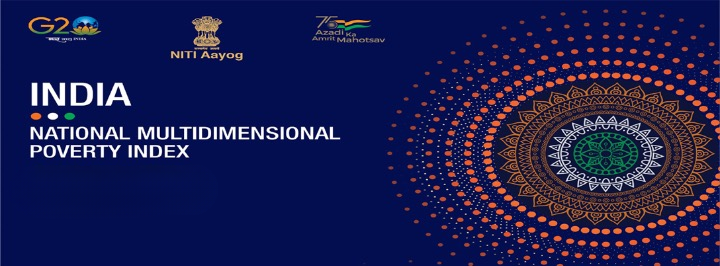
- 16 Jan 2024
Why is it in the News?
The share of India’s population living in multidimensional poverty is estimated to have fallen to 11.28 per cent in 2022-23 from 29.17 per cent in 2013-14, according to a discussion paper released by NITI Aayog on Monday.
Context:
- According to the NITI Aayog’s discussion paper, multidimensional poverty in India declined from 29.17% in 2013-14 to 11.28% in 2022-23, with about 24.82 crore people moving out of this bracket during this period.
- The national multidimensional poverty measures simultaneous deprivations across three equally weighted dimensions of health, education, and standard of living that are represented by 12 sustainable development goals-aligned indicators, according to NITI Aayog.
Key Highlights of the MPI in India Since 2005-2006:
- Overall Decline in Multidimensional Poverty: As per the NITI Aayog discussion paper, India's multidimensional poverty has decreased from 29.17% in 2013-14 to 11.28% in 2022-23.
- The trend signifies the upliftment of 24.82 crore people from this bracket during the specified period.
- State-wise Decline: "Uttar Pradesh registered the largest decline in the number of poor with 5.94 crore people escaping multidimensional poverty during the last nine years followed by:
- Bihar at 3.77 crore
- Madhya Pradesh at 2.30 crore and
- Rajasthan at 1.87 crore.
- NITI Aayog's approach to measuring multidimensional poverty involved considering 12 indicators aligned with the sustainable development goals.
- These indicators encompass crucial aspects such as nutrition, child and adolescent mortality rates, maternal health, educational attainment, access to basic amenities like clean cooking fuel, sanitation, safe drinking water, electricity, and housing, as well as possession of assets and bank accounts.
- "Significant initiatives covering all dimensions of poverty have led to 24.82 crore individuals escaping multidimensional poverty in the last 9 years.
- As a result, India is likely to achieve its SDG target of halving multidimensional poverty well before 2030.
- The report emphasized impactful programs, such as Poshan Abhiyan and Anemia Mukt Bharat, which have markedly improved accessibility to healthcare services, significantly reducing deprivation.
- Managing one of the globe's largest food security initiatives, the targeted Public Distribution System (PDS) under the National Food Security Act encompasses 81.35 crore beneficiaries, ensuring the distribution of food grains to both rural and urban populations.
- "The government's persistent dedication and resolute commitment to enhancing the lives of the most vulnerable and deprived have been instrumental in this accomplishment.
What is Multidimensional Poverty?
- Poverty can have several negative effects at once. Some of these include inadequate nutrition or health, a lack of power or clean water, low-quality employment, or insufficient education.
- The true nature of poverty cannot be fully captured by concentrating only on one aspect, such as income.
- Multidimensional Poverty, as a metric, goes beyond income or consumption alone.
- It encompasses deprivations in education and access to essential infrastructure, considering factors beyond the monetary aspect.
- The measurement is conducted at the $2.15 international poverty line, as defined by the World Bank (in 2017 purchasing power parity terms), ensuring a comprehensive assessment of poverty that extends beyond monetary value.
What is the National Multidimensional Poverty Index (MPI)?
- Prepared By: NITI Aayog
- Objective: The aim is to gauge poverty across various dimensions, complementing existing statistics based on per capita consumption expenditure.
- Purpose of the National MPI: Provides an enhanced, high-level overview of poverty at the national level.
- Acts as a complement to monetary poverty measures.
- Furnishes information crucial for shaping effective policy initiatives.
- The MPI is founded on the individual or household profile of overlapping or "joint" deprivations experienced by each person.
- Key Features: Serves as an incentive for leaving no one behind and prioritizing the most marginalized.
- Adaptable to the national context and maintains transparency.
- Credible Methodology: India's national MPI employs a methodology developed by the Oxford Poverty and Human Development Initiative (OPHI) and the United Nations Development Programme (UNDP), aligning with the globally accepted and robust standards used in the publication of the Global Multidimensional Poverty Index.
- Three Macro Dimensions: The National MPI is structured around three macro dimensions, each with specific indicators and weights, outlined below –
Significance of the MPI:
- Crucial Public Policy Instrument: The establishment of India's National MPI introduces a pivotal public policy instrument that monitors multidimensional poverty, facilitating evidence-based and targeted interventions to ensure inclusivity and prevent any individuals from being left behind.
- Assesses the Efficacy of Multi-Sectoral Interventions: It offers valuable insights into the effectiveness of multi-sectoral interventions aimed at addressing diverse facets of poverty.
- Encompasses Diverse Deprivations: Notably, functioning as a metric for multidimensional poverty, it captures the myriad and simultaneous deprivations experienced by households.
- Comprehensive Analysis Across All Tiers: This report conducts a thorough analysis of the headcount ratio and intensity of multidimensional poverty, encompassing national, State/UT, and district levels.
Conclusion
The National MPI in India has been conceived as an all-encompassing tool, expediting purpose-driven initiatives to gauge and systematically eliminate multidimensional poverty. The dimensions of the index have demonstrated their efficacy in identifying and facilitating precise policy interventions aimed at achieving targeted goals.
NITI Aayog
- NITI Aayog, established on January 1, 2015, succeeded the Planning Commission with a distinctive focus on a 'Bottom-Up' approach.
- Embracing the vision of 'Maximum Governance, Minimum Government' and echoing the ethos of 'Cooperative Federalism,' NITI Aayog serves as a dynamic institution facilitating collaborative decision-making.
Functional Components: NITI Aayog operates through two principal hubs-
- Team India Hub: This hub is a crucial interface, fostering effective communication and collaboration between the states and the central government.
- It plays a pivotal role in aligning the diverse interests of different regions in the spirit of cooperative federalism.
- Knowledge and Innovation Hub: This hub is dedicated to enhancing the intellectual capacity of NITI Aayog. It functions as a think tank, driving innovative ideas and knowledge creation to inform policy decisions and contribute to the overall development agenda.
INDICES of NITI Aayog:
- Composite Water Management Index
- District Hospital Index
- Export Preparedness Index
- Global Innovation Index
- India Innovation Index
- Multidimensional Poverty Index
- School Education Quality Index
- SDG India Index
- State Energy Index
- State Health Index
To combat climate challenges, the Finance Commission needs to step up (Indian Express)

- 13 Jan 2024
Why is it in the News?
As the union government constituted the 16th Finance Commission (FC), experts recommend including variables related to climate change, beyond forest cover.
Background:
- In the contemporary era, India has gained prominence as a key participant in global initiatives aimed at addressing climate change and promoting increased forest coverage.
- This engagement has not only positively impacted environmental sustainability but has also strengthened the adaptability of communities and ecosystems.
- In addressing the hurdles presented by climate change, the concept of fiscal federalism, with a specific focus on the role of the Finance Commission (FC), has emerged as a crucial factor in encouraging states to prioritize conservation endeavours.
Role of the Finance Commission in Fiscal Federalism and Forest Conservation:
- Promoting Conservation Initiatives: The Finance Commission's role has been pivotal in actively promoting and incentivizing state-led efforts towards forest conservation.
- Through dedicated fund allocations, the Commission acknowledges the inherent connection between vibrant forests, sustainable ecosystems, and the overall national well-being.
- Financial backing serves as a catalyst, motivating states to prioritize conservation endeavours while safeguarding their economic interests.
- Balancing Revenue Capacities and Expenditure Needs: Beyond their biodiversity significance, forest resources represent valuable economic assets for states.
- The Finance Commission recognizes that preserving existing forests and augmenting forest cover density directly impact the revenue capacities and expenditure requirements of states.
- Finding an equilibrium between economically exploiting forest resources and ensuring their conservation becomes essential for achieving both environmental sustainability and economic prosperity.
Previous Instances of Finance Commission Initiatives in Forest Conservation:
- The Finance Commission’s formulae for tax sharing have evolved since the first one, constituted in 1951, for the period 1952-1957.
- Since then, FCs have been constituted at intervals every five years with the 16th one currently being implemented.
- Initially, the formula for distributing tax among states respectively, known as horizontal devolution, gave significant weightage, around 80% to 90%, to the population of the states, meaning states with higher populations were given a higher share of the tax.
- Then, the 7th FC drastically reduced the weightage assigned to the population to 25% and increased the weightage given to equity, in which income, land area, and sometimes infrastructure and fiscal discipline too, played a significant role in determining how much each state would receive from the central government.
- Similarly, there have been changes in determining the funds allocation for environmental initiatives.
- The 12th FC (2005-10) dedicated Rs 1,000 crore for forest conservation across states.
- The 13th FC (2010-15) enhanced this allocation to Rs 5,000 crore.
- However, it is important to note that these grants comprised less than 0.05% of the total funds transferred from the central government to the states.
- Ecological Fiscal Transfers (EFT) – where public revenue is shared based on ecological indicators – were introduced in 2015 with the 14th FC which incorporated forest cover as a criterion for tax devolution, allocating it a weightage of 7.5% in the distribution formula for the tax-transfer during the period 2015-16 to 2019-2020.
- The 14th FC (2015 to 2020) considered several recommendations and replaced the grants with a more prominent placement for the forestry sector — it dedicated 7.5 per cent of the divisible central tax pool to ecology and forests.
- The allocation was based on the forest cover in each state.
- The 14th FC (2015 to 2020) considered several recommendations and replaced the grants with a more prominent placement for the forestry sector — it dedicated 7.5 per cent of the divisible central tax pool to ecology and forests.
- The 15th FC (2021–22 to 2025–26) extended this share to 10 per cent.
- Having mobilised and distributed over Rs 4.5 lakh crore to states against not only their forest cover but also forest density, the 15th FC effectively became the largest payment for ecosystem services (PES) systems in the world.
- The Commission also gave grants to combat air pollution.
- The fiscal transfers that are earmarked for a specific department or programme have traditionally been much smaller than fiscal transfers to the general state budget.
- For example, the specific-purpose grants for forestry under the 12th and 13th FC were a fraction of the general-purpose transfers (those not assigned to specific purposes) that followed under the 14th and 15th FC.
- The formula-based finance commission transfers are unconditional and are not tied to the Department of Forest or Ecology.
- Whether there is a need for conditions to ensure the funds are invested in the environment, at least in principle, the enticement of receiving larger general-purpose transfers should motivate states to invest in forest protection.
- Since 2005, the central government has been sharing annual forest grants with states.
- These grants serve as both compensation and incentive mechanisms.
- However, it remains unclear to what extent these grants have contributed to the increased forest cover in the states.
Addressing Complexities in the Intersection of Fiscal Federalism and Environmental Conservation:
- Harmonizing Conservation Costs and Economic Imperatives: Balancing conservation expenses with economic necessities becomes challenging, particularly for states grappling with financial constraints.
- The substantial opportunity costs linked with forest preservation may strain state budgets, presenting a hurdle in garnering widespread commitment.
- Innovating Financing Models for Conservation: Traditional financing models for conservation may prove inadequate or unsustainable in the long term.
- Overreliance on grants can create dependencies, hindering the development of self-sustaining mechanisms for conservation.
- Addressing Climate-Induced Economic Vulnerabilities: The repercussions of climate change pose considerable threats to economic stability, especially for states heavily dependent on climate-sensitive sectors.
- Unpredictable weather patterns, floods, and forest fires can intensify existing vulnerabilities.
- Strategically Allocating Resources: The Finance Commission encounters the intricate task of strategically allocating resources to maximize both environmental and economic advantages.
- Ensuring targeted funding for critical conservation initiatives while aligning with state development objectives demands a nuanced approach.
- Integrating Environmental Goals with Fiscal Capacity: States may grapple with aligning their environmental objectives with fiscal capabilities, potentially creating a gap between aspirations and implementation.
- Ensuring Equitable Participation: A potential risk exists where states with greater fiscal capacities may disproportionately benefit from conservation incentives, potentially exacerbating existing economic disparities.
The Potential Role of 16th Finance Commission's:
- Integrating Climate Considerations into Tax Devolution Framework: The 16th Finance Commission has the potential to bring about a transformative shift by integrating climate vulnerability and emission intensity as pivotal factors in the tax devolution formula.
- This alignment directly supports India's Nationally Determined Contributions (NDCs) under the Paris Agreement, providing states with robust fiscal incentives to actively contribute to national climate goals.
- Implementing Performance-Based Grants for Key Sectors: Recognizing the instrumental role of specific sectors in achieving NDCs and Sustainable Development Goals (SDGs), the 16th Finance Commission could contemplate introducing performance-based grants.
- These grants, which are specifically designed to help areas like renewable energy, sustainable land and forest management, and air pollution efforts, provide states with focused financial assistance and motivate them to take proactive steps toward change.
- Addressing Emission Reduction Challenges: Prioritizing emission reduction, the commission can focus on decarbonizing critical sectors like energy and transport.
- This entails incentivizing states to embrace clean energy practices and fostering innovation to tackle persistent issues like crop burning.
- Through strategic fund allocation, the 16th Finance Commission can drive tangible progress in mitigating emission sources.
- Funding Innovations for Ecological Challenges: Allocating funds to innovative solutions for ecological challenges induced by climate change becomes a crucial role for the 16th Finance Commission.
- Whether supporting mangrove restoration to counter weather vagaries or addressing the escalating incidents of forest fires, the commission can catalyze research, development, and implementation of sustainable strategies.
- Utilizing Scientific Data for Informed Decision-Making: Leveraging advanced technology, the 16th Finance Commission can utilize scientific data, pollution inventories, and remote sensing to assess state vulnerabilities and mitigation efforts.
- This data-driven approach ensures that fiscal decisions are rooted in empirical evidence, enabling the commission to design an effective and equitable performance-based system for fund allocation.
- Transforming into a Leader in Climate Readiness: Going beyond its traditional fiscal role, the 16th Finance Commission has the potential to evolve into a leader in India's climate readiness.
- This transformation involves active participation in designing and implementing a fiscal blueprint that balances economic growth with environmental imperatives, guiding policies that meet present needs without compromising the ability of future generations to meet their own.
Conclusion
In the current juncture where India grapples with the intertwined paths of economic advancement and environmental safeguarding, the Finance Commission's significance in fiscal federalism cannot be overstated.
The 16th Finance Commission, poised to influence tax distribution principles and stimulate climate-conscious endeavours, emerges as a pivotal player in fostering a harmonious equilibrium between economic progress and ecological conservation.
By adopting strategic measures and pioneering innovative strategies, the Finance Commission has the potential to evolve into a formidable catalyst in India's pursuit of climate resilience.
Revival of the tiger: A joint effort, a cultural renaissance (Indian Express)

- 06 Jan 2024
Why is it in the News?
Jim Corbett Tiger Reserve has achieved success through comprehensive conservation strategies, including habitat protection, community involvement, and ecological sustainability. The reserve's efforts focus on maintaining a balance between wildlife conservation and the well-being of local communities, showcasing a commitment to the coexistence of both nature and people.
Background:
- India has a profound history of forest and wildlife conservation, marked by a notable achievement at the Corbett Tiger Reserve (CTR) in Uttarakhand.
- CTR has seen the successful implementation of comprehensive efforts and strategies, resulting not only in a remarkable rise in the tiger population but also establishing itself as a global exemplar in wildlife management.
About Jim Corbett National Park:
- Established in 1936 as Hailey National Park, Jim Corbett National Park holds the distinction of being India's first national park.
- In 1973, it gained Tiger Reserve status, becoming the pioneer in the Project Tiger initiative.
- Nestled in the Shivalik hills of the Himalayas, Corbett Tiger Reserve spans across the Pauri Garhwal, Nainital, and Almora districts of Uttarakhand.
- Renowned for its global record, it proudly hosts the highest tiger density, reaching 260 in 2022, a notable increase from 231 four years earlier.
Cultural and Economic Significance of Tigers in India:
- Beyond ecological importance, the tiger carries profound cultural and historical significance in India.
- The resurgence of tiger populations, particularly at CTR, represents a cultural revival and the renewed embrace of conservation values.
- The thriving eco-tourism industry illustrates the economic interdependence between local communities and tigers, highlighting the profound connection between wildlife and people at CTR.
An Overview of Effective Biodiversity and Tiger Conservation Plan at CTR:
- Implementation of a Comprehensive Strategy: CTR owes its success to the meticulous execution of the Tiger Conservation Plan, focusing on the well-being of both tiger populations and broader biodiversity.
- Spanning 1288.31 sq km across Uttarakhand, CTR showcases the plan's efficacy in nurturing a flourishing ecosystem.
- Clear Division of Core and Buffer Zones: The foundation of the Tiger Conservation Plan lies in delineating core and buffer zones within the reserve, offering wildlife a sanctuary.
- Core zones provide undisturbed habitats crucial for breeding, while buffer zones minimize conflicts between human settlements and wildlife.
- Increase in Tiger Population: Recent statistics highlight a significant rise in CTR's tiger population, from 231 to 260 in just four years.
- This surge underscores the plan's success, safeguarding not only tigers but also the overall health and balance of the forest ecosystem.
- Maintenance of Rich Biodiversity: CTR's success extends beyond tiger numbers, encompassing a biodiverse landscape that attracts researchers, conservationists, and tourists.
- The diverse flora and fauna contribute to ecological balance, fostering harmonious coexistence between predator and prey.
- Promotion of Ecotourism and Conservation: CTR's vibrant ecosystem has made it a hub for ecotourism, creating economic opportunities for local communities.
- Tourists contribute to both nature appreciation and the local economy, making conservation and tourism mutually beneficial.
- Effective Grassland and Water Management: CTR employs a nuanced approach to grassland management with 27 grassland types, crucial for sustaining prey species.
- Strategic water management, including solar-pump-fed waterholes, supports diverse wildlife needs, ensuring a sustainable ecosystem.
- Dedicated Forest Staff: The dedicated forest staff, comprising foot-soldiers, mahouts, and guards, are integral to CTR's success.
- Initiatives like timely wages and enhanced safety measures underscore the importance placed on the well-being of these unsung heroes.
- Focus on Wildlife Corridors and Habitat Protection: CTR prioritizes wildlife corridors for gene pool exchange, aligning with the Tiger Conservation Plan's recommendations.
Human-Wildlife Conflict at CTR:
- Increasing Incidents and Challenges: The upsurge in conflicts between humans, elephants, and tigers at CTR stems from factors like habitat encroachment, limited animal corridors, and the behavioral conditioning of predators.
- Straying milch and domestic animals from villages become easy prey for tigers, leading to predatory behavior towards humans, especially in buffer forest areas.
- The Complexity of 'Wicked Problems': Described as a 'wicked problem' due to its intricate nature, human-wildlife conflict at CTR requires a nuanced and context-specific approach.
- CTR emphasizes the significance of every solution attempt, recognizing that there's no one-size-fits-all remedy, and continuous adaptation and innovation are essential for evolving conflict scenarios.
Strategies Implemented for Human-Wildlife Conflict Mitigation and Co-Existence Promotion at CTR:
- Forest Department Initiatives: Proactive measures by the forest department at CTR have successfully eliminated poaching activities, particularly along the sensitive southern boundary.
- Dedicated foot soldiers, along with digital surveillance through the electronic-eye project, have played a pivotal role in reducing wildlife threats.
- Community Engagement Strategies: Community engagement is fundamental to CTR's approach to resolving human-wildlife conflicts.
- Local stakeholders actively participate in conservation through initiatives like the Living with Tigers program, engaging villagers and school children in behavioral and response awareness.
- This educational effort aims to deepen understanding of wildlife behavior patterns and promote practices that enhance safety for both humans and animals.
- Provision of Economic Incentives for Conservation: The forest department has initiated projects offering economic incentives for conservation, such as the beehive-fencing project.
- Strategically placing beehives along village-forest borders, the resulting Corbee Honey brand is managed by local Eco Development Committees (EDCs), fostering economic cooperation and coexistence with local stakeholders.
Conclusion
- Corbett Tiger Reserve emerges as a triumph in wildlife conservation, embodying a comprehensive and integrated approach. Through careful habitat management and community engagement, CTR exemplifies the promise of sustainable coexistence between humans and wildlife. As an integral chapter in India's conservation story, the ongoing success of the reserve relies on the collaborative endeavors of the forest department, local communities, and passionate conservation advocates.
To avoid worst-case scenarios, the need for fiscal correction is all the more vital this election year (The Hindu)

- 05 Jan 2024
Why is it in the News
The recent observations by the International Monetary Fund (IMF) sparked reactions from the Indian Government in which it states that India’s general government debt, including the Centre and States, could be 100% of GDP under adverse circumstances by fiscal 2028.
Context:
- India’s economic landscape has undergone scrutiny as the International Monetary Fund (IMF) made two noteworthy observations.
- The IMF report not only acknowledged India’s effective inflation management but also presented a balanced outlook for the country’s economic growth.
- To analyze the IMF’s insights on India’s economic situation, one must understand the broader global context in which these observations were made.
Insights from the IMF on India's Economic Landscape:
Exchange Rate Reclassification:
- A pivotal observation by the IMF is the reclassification of India's exchange rate regime from floating to a stabilised arrangement.
- This reclassification raises questions about the flexibility of the currency and its alignment with market forces, indicating a perception of a more controlled and stabilised environment, potentially influenced by central bank (RBI) interventions.
Debt Sustainability Concerns:
- The IMF expresses significant concerns about the long-term sustainability of India's debts.
- The report projects that, under adverse circumstances, India's general government debt could reach 100% of GDP by fiscal 2028.
- This highlights the imperative for careful debt management strategies, particularly as India confronts substantial investment requirements to meet climate change mitigation targets and enhance resilience to climate stresses and natural disasters.
- It's crucial to note that these IMF insights are framed within the global context of increasing public debts, recognizing that India's economic challenges are interconnected within a complex web of global economic phenomena.
The Global Debt Scenario in a Broader Context:
Dual Nature of Debt: Accelerator vs. Drag on Development:
- Globally, government borrowings have been instrumental in fostering development, supporting infrastructure projects, social programs, and economic growth.
- However, the IMF's concerns emphasize the potential drawbacks of this strategy, as limitations in accessing financing, rising borrowing costs, currency devaluations, and sluggish growth can transform debt from a catalyst into a hindrance.
- The United Nations' assertion that countries face a challenging dilemma between servicing their debt or serving their people encapsulates the inherent difficulty in managing debt for sustainable development.
Surging Global Public Debt Trends:
- According to the UN, global public debt has surged more than fourfold since 2000, surpassing the tripling of global GDP over the same period.
- In 2022, global public debt reached USD 92 trillion, with developing countries contributing nearly 30% to the total, and China, India, and Brazil accounting for a significant portion (70%).
- The acceleration of debt in developing nations over the past decade is attributed to heightened development financing needs exacerbated by the COVID-19 pandemic, the cost-of-living crisis, and the impact of climate change.
Asymmetric Burden on Developing Countries:
- The burden of debt is unevenly distributed between developed and developing nations, with developing countries often facing higher interest rates even without considering exchange rate fluctuations.
- This well-documented disparity reveals that countries in Africa, for instance, borrow at rates four times higher than the United States and eight times higher than Germany, undermining the debt sustainability of developing economies.
Increasing Debt Levels and the IMF's Perspective:
- The number of countries grappling with high levels of debt has surged from 22 in 2011 to 59 in 2022, highlighting persistent debt challenges in developing nations.
- The IMF's projections for India should be understood in the broader context of a global debt conundrum.
Challenges Facing India's Economic Landscape:
Increasing Public Debt:
- The central government's debt, amounting to ?155.6 trillion, constitutes 57.1% of GDP as of March 2023, with state government debts accounting for about 28% of GDP.
- Despite claims by the Finance Ministry that India's public debt-to-GDP ratio has marginally increased from 81% in 2005-06 to 84% in 2021-22, the 2022-23 figures indicate a return to 81%, surpassing targets set by the Fiscal Responsibility and Budget Management Act (FRBMA).
Balancing Public Debt for Sustainability:
- A significant challenge for India lies in achieving a delicate balance to ensure that public debt remains within sustainable levels.
- IMF projections indicate that India's general government debt, inclusive of both central and state governments, could reach 100% of GDP by fiscal 2028 under adverse circumstances, underscoring the need for meticulous debt management strategies.
Stagnant Credit Ratings:
- Despite being acknowledged as the fastest-growing major economy globally, India's sovereign investment ratings have remained stagnant since August 2006.
- Both Fitch Ratings and S&P Global Ratings have maintained India's credit rating at 'BBB-' with a stable outlook, the lowest investment-grade level, attributed to factors like weak fiscal performance and a burdensome debt stock.
Emerging Fiscal Challenges:
- Disruptions caused by the COVID-19 pandemic contribute to the current high debt-GDP ratio, with potential fiscal slippage in FY24 according to India Ratings and Research.
- Increased expenditure on employment guarantee schemes and subsidies, such as a higher fertiliser subsidy and overspending on the MGNREGA, pose challenges to fiscal stability.
Managing Short-Term Challenges and Election Dynamics:
- As India approaches general elections, increased subsidies are expected, but questions arise about the impact on employment growth and livelihoods in rural areas.
- Navigating these short-term challenges in an election year becomes a critical test for maintaining fiscal discipline and avoiding worst-case scenarios.
Way Forward:
- While the exchange rate reclassification raises potential concerns about excessive management, the focus on debt sustainability underscores the broader call for prudence in managing fiscal policies.
- The IMF's observations highlight the delicate balancing act India must perform—maintaining a stable exchange rate while ensuring long-term debt sustainability.
- There is a pressing need for new and preferably concessional sources of financing, increased private sector investment, and the implementation of carbon pricing or equivalent mechanisms to address long-term risks.
Conclusion:
Navigating the multifaceted challenges outlined by the IMF, India finds itself at a crucial juncture, necessitating a strategic approach to economic management. The IMF's observations, addressing concerns about debt sustainability and the reclassification of the exchange rate regime, underscore the importance of nuanced decision-making and long-term planning.
Qatar court drops death penalty for 8 Indians, Govt says sentences reduced (Indian Express)

- 29 Dec 2023
Why is it in the News?
A Qatar court has reduced the death sentences awarded to eight former Indian Navy personnel last month in connection with an alleged case of espionage.
What is the Case?
- Arrest of Eight Navy Personnel: On August 30, 2022, eight former Indian Navy personnel, accompanied by two others, were apprehended under undisclosed charges and subsequently placed in solitary confinement.
- These individuals were affiliated with Al Dahra Global Technologies and Consultancy Services, a defense services provider company.
- Sources indicate that the Indian nationals were privately engaged with the company to supervise the induction of Italian small stealth submarines U2I2.
- The company's previous website, now defunct, mentioned its provision of training, logistics, and maintenance services to the Qatari Emiri Naval Force (QENF).
- Charges Against the Men: The specific charges against the individuals have not been publicly disclosed; however, media reports suggest that the eight Indians are accused of espionage on behalf of Israel.
- Death Penalty for Navy Veterans: In March 2023, after multiple unsuccessful bail pleas, the trial for the Navy veterans commenced, culminating on October 26, 2023, with the imposition of the death sentence on all eight men.
- India's Appeal: In November 2023, the Ministry of External Affairs (MEA) announced the filing of an appeal, revealing that its legal team possessed details of the charges.
- The Indian ambassador in Doha visited the incarcerated individuals on December 3, providing consular access.
- This access occurred shortly after Prime Minister Modi met Qatar’s Emir Sheikh Tamim bin Hamad Al-Thani during the COP28 summit in Dubai on December 1.
What Options Has India Explored?
- One avenue involves legal challenges, a step that has been acknowledged and has temporarily mitigated the sentence.
- Concurrently, India has actively utilized diplomatic channels to engage with the Qatari authorities.
- The families have submitted a mercy plea to the Emir of Qatar, leveraging the tradition of pardons granted during Ramadan and Eid, with support from the Indian government.
India-Qatar Bilateral Relations:
- Economic Ties: In recent years, the trade volume between India and Qatar has witnessed fluctuations.
- During the fiscal year 2015-2016, trade between the two nations reached an impressive $10 billion.
- However, recent years have seen a slight decline in trade due to falling gas and oil rates in the international market.
- Trade Statistics and Import Dependence: In the fiscal year 2022-23, India's total imports from Qatar amounted to $16.81 billion, primarily in fossil fuels like liquefied petroleum gas (LPG), plastics, and petrochemical products.
- Conversely, India's exports to Qatar during the same fiscal year were valued at $1.97 billion, covering items such as cereals, copper articles, iron and steel products, vegetables, fruits, spices, and processed food items.
- Investment Interests and Collaborative Projects: Qatari authorities, particularly the Qatar Investment Authority, express interest in investing in India, focusing on infrastructure development, roads, highways, economic corridors, and projects related to gas and fertilizers.
- India reciprocates with a keen interest in direct investments in liquefied natural gas, chemical industries, fertilizer production, urea, petrochemicals, and infrastructure projects.
- India's Growing Energy Needs: India, with its growing energy needs, has a robust energy partnership with Qatar, dating back to a 1990 agreement.
- This commitment involves India purchasing 7.5 million tonnes of LNG annually for 25 years.
- The collaboration was further strengthened in December 2015, with Qatar agreeing to augment its LNG supply to India by an additional one million tonnes annually.
- Collaboration in Defence Affairs: India's defense collaboration with Qatar focuses on training, mutual participation in conferences and events, and visits by Indian Navy and Coast Guard vessels.
- Notably, the joint naval exercise 'Zair-Al-Bahr' showcases significant cooperation between the Indian and Qatari Navies.
- Both nations are committed to combating the financing of terrorism.
- Cultural Interaction: The Indian Cultural Centre (ICC) plays a crucial role in overseeing Indian community associations in Doha.
- Qatar's role as a co-sponsor of the United Nations General Assembly Resolution designating June 21 as the International Day of Yoga is highly valued by India.
- Indian Diaspora in Qatar: The Indian community in Qatar, numbering approximately 700,000, constitutes the largest expatriate group.
- Their contributions span diverse sectors, including projects related to the Qatar 2022 FIFA World Cup, and annual remittances to India are estimated at around 750 million dollars.
- Indispensable Role of Qatar as an LNG Supplier: The cornerstone of the bilateral trade relationship lies in liquefied natural gas (LNG), where Qatar plays a pivotal role by meeting 80% of India's LNG requirements.
- India imported a total of 19.85 million tonnes of LNG in the fiscal year 2022-23, with approximately 54% of this LNG.
- This significant reliance on Qatar, both through long-term contracts and spot purchases, underscores the challenge of diversifying India’s sources of LNG.
Challenges in India-Qatar Bilateral Relations:
- BJP Spokesperson's Controversy: The initial strain in the relationship arose in June 2022 when BJP spokesperson Nupur Sharma made derogatory references to the Prophet on a TV show.
- Qatar was the first country to object and demanded a public apology from India.
- Jailing of Navy Personnel: The second significant challenge involves the imprisonment of eight ex-Navy personnel.
- This development caught New Delhi off guard, particularly given the substantial Indian expatriate community in Qatar, where 800,000 Indians live and work.
- Israeli-Gaza Conflict: The news of the death penalty for the Indians coincided with heightened tensions in the Middle East due to the Israeli bombardment of Gaza.
- Qatar, with its strong sympathy for the Palestinians, has played a mediating role, including securing the release of American hostages from Hamas captivity.
- Qatar's diplomats are actively engaged as regional mediators in the ongoing crisis.
Maximizing Opportunities for Strengthened Relations:
- Safeguarding Expatriate Workers: India must engage in negotiations aimed at ensuring the protection of the rights and well-being of its expatriate workers in Qatar, who have encountered various labour-related challenges.
- Cultural Exchange and Soft Power: Recognizing the widespread popularity of Bollywood among Qataris, India should actively explore diverse avenues for cultural exchange to amplify its soft power influence.
- This cultural diplomacy can serve as a bridge for deeper understanding between the two nations.
- Cooperation in the Education Sector: The presence of esteemed Western universities in Qatar presents an opportunity for Indian students to access quality education abroad without the usual constraints of long distances and high living costs.
- Strengthening cooperation in the education sector can further elevate the resilience and depth of the India-Qatar relationship, even in the face of seemingly intractable diplomatic challenges.
- Collaborative Environmental Sustainability: India and Qatar can forge a collaborative path towards fostering a cleaner and more energy-efficient environment.
- Joint efforts in environmental sustainability can contribute to shared global goals.
Indian banks reports card: Asset quality improves to fresh 10-year high, balance sheet grows by highest in 9 years (The Hindu)
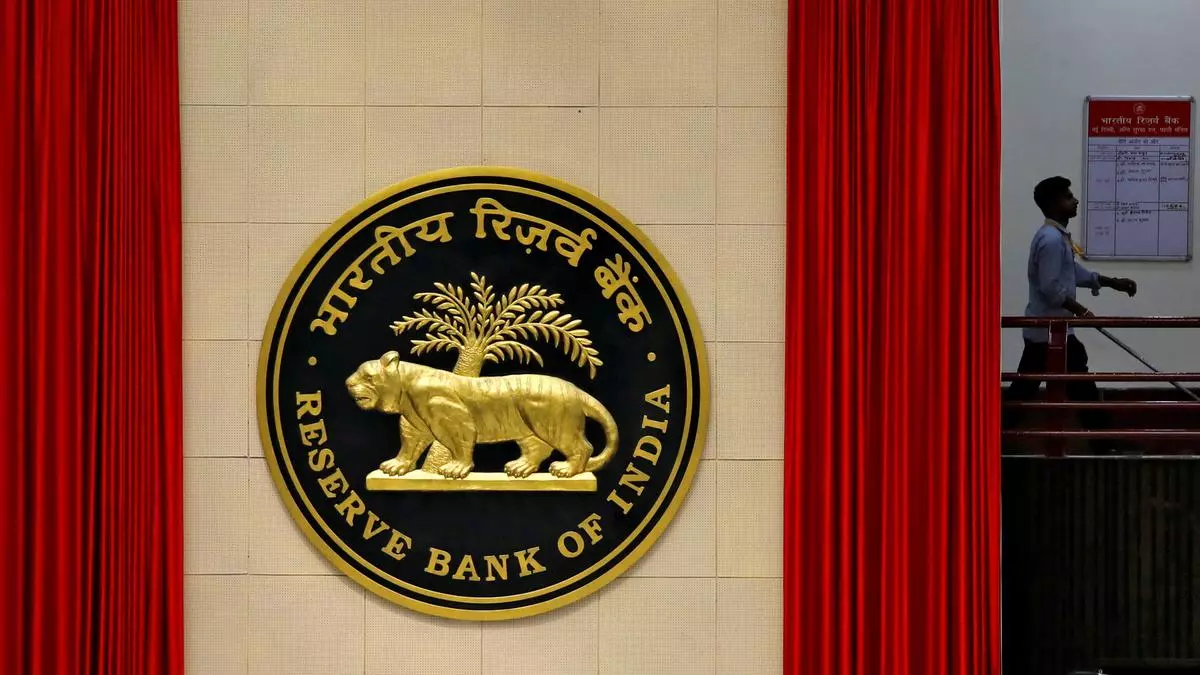
- 28 Dec 2023
Why is it in the News?
Indian banks continued to show improvement in their asset quality, with the gross non-performing asset (GNPA) ratio reaching a new decadal low as of September-end, according to a report by the Reserve Bank of India (RBI).
Key Points from the 'Trend and Progress of Banking in India' Report:
- The Gross Non-Performing Assets (GNPA) ratio of Scheduled Commercial Banks (SCBs) reached a decade-low of 3.9% by the end of March 2023, further declining to 3.2% by the end of September 2023.
- In the fiscal year 2022-23, approximately 45% of the reduction in Gross Non-Performing Assets (GNPAs) of SCBs was attributed to recoveries and upgrades.
- The consolidated balance sheet of banks witnessed a notable growth of 12.2% in 2022-23, marking the highest in 9 years.
- The share of Public Sector Banks (PSBs) in the consolidated balance sheet decreased from 58.6% in March 2022 to 57.6% in March 2023, while private banks saw an increase from 34% to 34.7%.
- As of March 2023, PSBs accounted for 61.4% of total deposits and 57.9% of total advances.
- With inflation persisting above the target, there is a possibility that monetary policy could remain in restrictive territory for an extended period.
- Acknowledging the growing interconnectedness between banks and Non-Banking Financial Companies (NBFCs), the report suggests that NBFCs diversify their funding sources and reduce reliance on bank funding.
- The central bank expresses concerns about banks lending to borrowers with influence, highlighting moral hazard issues that may compromise pricing and credit management.
- The Indian banking system is well-positioned for improvement, boasting better asset quality, high capital adequacy, and robust profitability.
- The financial indicators of NBFCs are anticipated to strengthen further, contributing to the overall resilience of the financial sector.
What are Non-Performing Assets (NPAs)?
- Non-performing assets (NPAs) refer to loans or advances in which the principal or interest payments have been overdue for a period exceeding 90 days.
- In the context of banks, loans are considered assets due to the significant income generated through interest payments.
- When borrowers, whether individuals or corporations, fail to meet their interest obligations, the asset turns 'non-performing' for the bank, as it ceases to contribute to the bank's earnings.
- As per the Reserve Bank of India (RBI) guidelines, banks must publicly disclose their NPAs and report them to the RBI regularly.
The classification of NPAs includes:
-
- Substandard assets: Loans that have been non-performing for up to 12 months.
- Doubtful assets: Assets that have remained in the substandard category for a period of 12 months.
- Loss assets: Assets deemed uncollectible, with little value, making their continuation as bankable assets unwarranted.
- NPA Provisioning involves setting aside a certain percentage of the loan amount as a provision.
- The standard rate of provisioning in Indian banks ranges from 5-20%, depending on the business sector and borrower's repayment capacity.
- In the case of NPAs, Basel-III norms require 100% provisioning.
Key metrics for understanding the NPA situation include Gross NPA (GNPA) and Net NPA (NNPA):
- GNPA: Represents the total value of gross NPAs for a bank in a specific quarter or financial year.
- NNPA: Obtained by subtracting the provisions made by the bank from the gross NPA, providing the precise value of NPAs after specific provisions.
- NPA Ratios express NPAs as a percentage of total advances, offering insights into the recoverability of total advances. For example:
- GNPA ratio: The ratio of total GNPA to total advances.
- NNPA ratio: Utilizes net NPA to determine the ratio to total advances, considering the specific provisions made by the bank.
Government and RBI Initiatives to Address NPAs:
To tackle the issue of Non-Performing Assets (NPAs), the Indian government has implemented a series of comprehensive measures in collaboration with the Reserve Bank of India (RBI).
- Establishment of a Bad Bank: National Asset Reconstruction Ltd (NARC), operates as an asset reconstruction company with the primary objective of purchasing distressed loans from banks, thereby alleviating them of the burden of NPAs.
- Once acquired, NARC endeavors to sell these problematic loans to distressed debt buyers.
- Additionally, the government has established the India Debt Resolution Company Ltd (IDRCL) to facilitate the sale of stressed assets in the market.
- Empowering Banks through the SARFAESI Act, 2002: The Securitization and Reconstruction of Financial Assets and Enforcement of Security Interest (SARFAESI) Act, enacted in 2002, empowers banks and financial institutions to take possession of collateral assets and execute their sale for the recovery of outstanding dues.
- Crucially, this process does not necessitate intervention from the court.
- The SARFAESI Act also provides provisions for enforcing security interests, allowing banks to issue demand notices to defaulting borrowers.
- Holistic Approach with the Insolvency and Bankruptcy Code (IBC), 2016: The Insolvency and Bankruptcy Code (IBC) establishes a comprehensive framework for the resolution of insolvency and bankruptcy in India.
- It is designed to expedite the resolution process for stressed assets, fostering a creditor-friendly environment.
- Under the IBC, both debtors and creditors have the authority to initiate insolvency proceedings against defaulting borrowers.
- The creation of the National Company Law Tribunal (NCLT) and the Insolvency and Bankruptcy Board of India (IBBI) ensures effective oversight of the resolution process.
Significance of NPA Recovery:
- The recovery of NPAs assumes paramount importance in safeguarding the interests of depositors and stakeholders.
- Emphasizing compromise settlements, the focus should be on achieving maximum dues recovery with minimal expenses and within an expedited timeframe.
- In the pursuit of compromise settlements, public sector banks are urged to prioritize the interests of the tax-paying public over the borrowers.
- This aligns with the broader goal of ensuring that resolutions serve the greater public good.
PLI is good for high-end manufacturing, but industrial policy is the best bet for mass job creation (Indian Express)

- 27 Dec 2023
Why is it in the News?
- While India has experienced positive outcomes from liberalization efforts, it is important to acknowledge a significant shortcoming—the country did not successfully establish a robust manufacturing foundation and underwent premature de-industrialization.
- It's crucial to recognize that no nation has achieved industrialization solely through deregulation.
- To facilitate the structural transformation of the economy, the implementation of a well-crafted industrial policy becomes imperative, with thoughtfully selected import restrictions serving as a key component of this policy mechanism.
The Make in India (MII) Initiative and Its Goals:
- Make in India Campaign: Officially inaugurated by Prime Minister Modi in September 2014, the Make in India campaign is a strategic effort aimed at advancing manufacturing, attracting foreign direct investment (FDI), fostering innovation, and generating employment opportunities within the nation.
Objectives of the Make in India:
- Advancing Manufacturing: The initiative strives to elevate India's status to a global manufacturing hub by encouraging both domestic and international companies to establish manufacturing units within the country.
- Attracting Foreign Investment: Make in India seeks to allure foreign direct investment by streamlining the business environment, simplifying regulatory norms, and providing incentives to foreign companies for investing in India's manufacturing sector.
- Infrastructure Enhancement: Emphasizing infrastructure development, the campaign focuses on improving key elements such as roads, ports, and logistics to ensure the seamless operation of manufacturing units.
- Skill Development: Recognizing the pivotal role of a skilled workforce in a thriving manufacturing sector, Make in India incorporates initiatives to enhance the skill sets of the Indian workforce, aligning them with the requirements of modern manufacturing.
- Innovation and Technology: The campaign places a significant emphasis on fostering innovation and integrating modern technology into manufacturing processes.
- This strategic approach aims to enhance efficiency and competitiveness in the manufacturing sector.
Differentiating Made in India (MII) from Previous Policies:
- The Make in India campaign, launched in 2014, represents a departure from the self-sufficiency doctrine that India adopted in the 1970s.
- It does not bring back memories of the licensing raj or import-substituting industries of the past.
- While concerns have been expressed about the implementation of Make in India, particularly in certain sectors where tariff duties are raised to provide protection and incentivize the establishment of domestic industries, it is crucial to note that the campaign is fundamentally different.
- Worries about a potential spread of protectionist tendencies to other sectors, though possibly overstated, are not entirely unfounded, especially for those who experienced the challenges of the 1970s and 1980s.
- During those years, indiscriminate protectionism led to shortages, black markets, and widespread rent-seeking, all ostensibly in the name of the poor and distributive justice.
- Producers who benefited from such protection actively advocated for its continuation.
- Importantly, considering that an average mobile phone manufactured in India consists of 80-85 percent imported content (India Cellular and Electronics Association, 2022), it is empirically evident that Make in India significantly differs from the concept of self-sufficiency.
- Given these empirical distinctions, it is imperative to move beyond baseless comparisons and recognize the unique nature of the Make in India initiative.
Evaluation of Commitments and Performance of Make in India:
- A Sizeable Domestic Market Falls Short of Competitiveness in Exports: Make in India (MII) encompasses two related concepts, namely Made in India and Make for India, with MII serving as the foundational and overarching policy.
- While Made for India focuses on manufacturing for the domestic market, it is essential to recognize that a substantial domestic market alone does not substitute for the crucial aspect of export competitiveness.
- Historical examples, such as Japan, Korea, and China, underscore that export competitiveness has been a common feature of nations that have experienced significant economic growth.
- While Made for India focuses on manufacturing for the domestic market, it is essential to recognize that a substantial domestic market alone does not substitute for the crucial aspect of export competitiveness.
- The necessity of an Effective Make in India Operation: Made in India functions as a branding strategy, promoting manufacturers rooted in Indian factors of production—land, labor, capital, entrepreneurship, technology, etc.
- However, the success of Made in India hinges on the effectiveness of the broader Make in India operation.
- Alignment with National Manufacturing Policy (NMP 2011): Make in India was launched as a follow-up to prior initiatives, particularly the National Manufacturing Policy (NMP) of 2011, which aimed to cultivate a robust and competitive manufacturing sector.
- The NMP 2011 identified challenges such as inadequate physical infrastructure, a complex regulatory environment, and insufficient availability of skilled manpower hindering manufacturing growth.
- The policy set ambitious targets, including raising the manufacturing contribution to GDP from a stagnant 15 percent since the 1980s to at least 25 percent and generating 100 million additional jobs.
- Dynamic Objectives of Make in India: Beyond the objectives outlined in the NMP 2011, Make in India aspires to elevate India into a global design and manufacturing export hub.
- In essence, Make in India envisions a transformation where India becomes a manufacturing powerhouse catering to the global market.
Requirement for Supplementary Industrial Policy Measures During Ongoing PLI Implementation:
- Diversified Articulation Beyond Production Linked Incentive (PLI): Beyond the current implementation of the Production Linked Incentive (PLI) scheme, there is a crucial need for an additional industrial policy tailored to sectors such as toys, readymade garments, and footwear.
- A more nuanced and sector-specific articulation of industrial policies is essential to meet the unique requirements of diverse sectors.
- Emphasis on Job Creation: Industrial policy must prioritize job creation, especially in a country abundant in labour but with average educational attainments and skills.
- Policies should be designed to create productive job opportunities, particularly focusing on labour-intensive manufacturing and opening avenues for women in the workforce.
- Addressing the Jobless Growth Critique: Acknowledging the criticism of jobless growth, the absence of quality jobs with social protection has contributed to this narrative.
- Industrial policies should explicitly target mass job creation, considering both job quality and the provision of social protection.
- Navigating the Challenges of Inclusive Policy Formulation: The government should confront the complexities of formulating industrial policies that foster mass job creation, especially in comparison to policies solely focused on exports.
- Inclusive policies that align with the overarching goal of creating high-quality jobs and ensuring social protection are essential.
- Treating Job Creation as the Benchmark: The effectiveness of industrial policies should be assessed based on their impact on mass job creation in India.
- This underscores the significance of addressing concerns related to jobless growth and prioritizing policies that generate inclusive and high-quality employment opportunities.
- Confronting Labor Market Challenges: India's labour market research indicates the prevalence of low-paying, low-productivity, and largely informal jobs in the unorganized sector.
- With more than 99 percent of India's 63 million micro, small, and medium enterprises (MSMEs) in the unorganized sector, there is limited flexibility for creating productive jobs.
- The assessment of how Make in India, complemented by other policies, has addressed these challenges is crucial.
- However, the lack of frequent and short-interval official data poses a significant hurdle, necessitating attention to enhance policy efficacy through more regular and timely data collection.
Conclusion
A thorough examination of the nation's circumstances and capabilities is imperative for effective government decision-making.
- India must formulate an industrial policy that extends the advantages of technological advancements beyond just the privileged laptop class.
- However, it is essential to exercise caution in steering discussions on industrial policy, avoiding the pitfalls of showmanship, theoretical oversimplification, or misleading historical comparisons.
- The global landscape demands that India adopt a substantive industrial policy, placing a genuine emphasis on the significance of manufacturing.
- In this context, it is evident that there is no substitute for a well-considered and serious industrial policy.
Women participation in NREGS continues to rise, by 59% this fiscal (Indian Express)
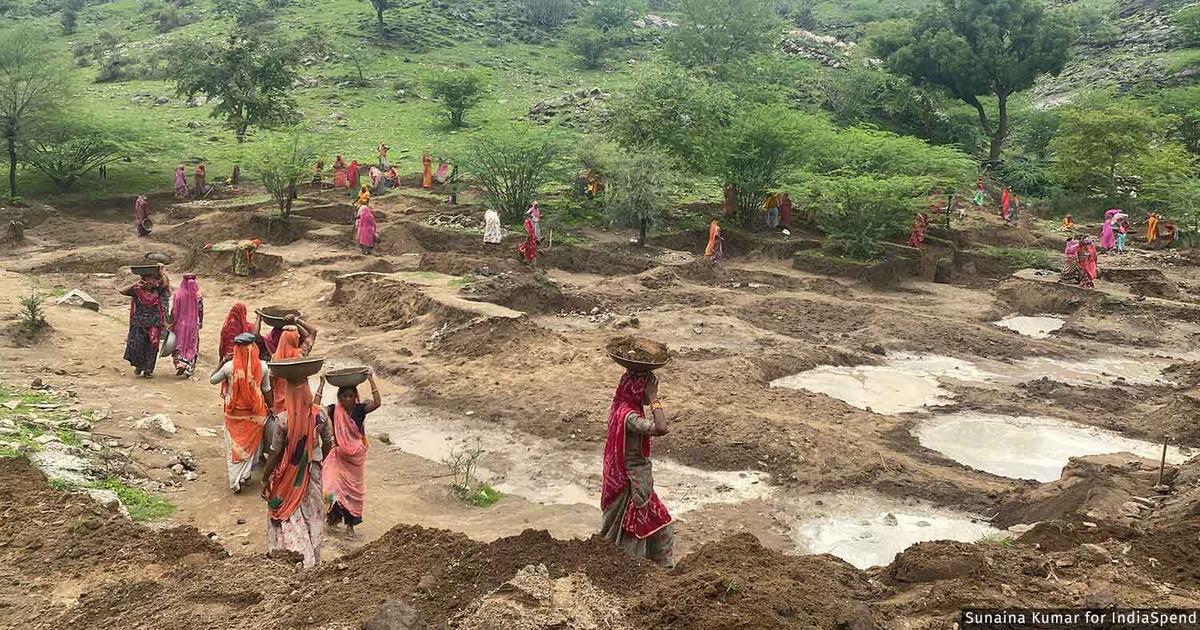
- 26 Dec 2023
Why is it in the News?
As per the Periodic Labour Force Survey (PLFS), published by the Ministry of Statistics and Programme Implementation, the female Labour Force Participation Rate has increased in the country in recent years.
News Summary:
- Recent data highlights a significant surge in women's engagement in the Mahatma Gandhi National Rural Employment Guarantee Scheme (MGNREGS), reaching its highest point in a decade.
- In the fiscal year 2022-23, women accounted for 57.47% of person-days, showcasing a notable increase from the previous year's 54.82%.
- Analyzing the broader landscape, statistics from the NREGS portal for the period up to December 24, 2023, reveal that out of a total of 238.62 crore person-days, women contributed 141.37 crore person-days, constituting an impressive 59.25%.
- The Periodic Labour Force Survey (PLFS), conducted by the Ministry of Statistics and Programme Implementation, provides further insights into the evolving dynamics of female labor force participation in the country.
- Notably, the Female Labour Force Participation Rate (LFPR) has witnessed a substantial uptick in recent years, particularly in rural areas.
- In the rural context, the LFPR soared to 30.5% in 2022-23 (July-June), a significant leap from 18.2% recorded in 2017-18.
- Complementing this positive trend, the female unemployment rate has experienced a noteworthy decline, dropping to 1.8% in 2022-23 from 3.8% in 2017-18.
- These statistics collectively underscore a positive trajectory in women's participation and employment, signaling progressive changes in the socio-economic landscape.
What is Mahatma Gandhi National Rural Employment Guarantee Act (MGNREGA)?
- The National Rural Employment Guarantee Act (NREGA) came into effect in September 2005.
- In 2009, an amendment renamed the Act to the Mahatma Gandhi National Rural Employment Guarantee Act (MGNREGA).
- Mandate: MGNREGA is designed with the primary objective of offering a minimum of 100 days of guaranteed wage employment within a financial year to every rural household whose adult members willingly engage in unskilled manual labor.
- The operationalization of this guarantee is facilitated through the Mahatma Gandhi National Rural Employment Guarantee Scheme (Mahatma Gandhi NREGS).
- Funding Structure: As a Centrally-Sponsored Scheme, MGNREGS receives joint financial backing from both the Central government and the State governments.
- This collaborative funding approach underscores the shared commitment to addressing rural employment challenges.
- Administrative Oversight: The Ministry of Rural Development is the overseeing authority responsible for the implementation and management of MGNREGS, emphasizing the central role of rural development in realizing the objectives of this significant initiative.
Key Characteristics of the Program:
- Enshrined Legal Entitlement: MGNREGA establishes a legal assurance for wage employment, granting every rural household the right to enroll in the program. Notably, the scheme mandates that at least one-third of its beneficiaries must be women. Legal provisions are in place to address situations where work is not provided on demand or when there are delays in wage payments, ensuring accountability and fair compensation.
- Demand-Driven Structure: This initiative operates on a demand-driven framework, responding to the explicit requests for work from wage-seekers. The provision of employment is triggered by the expressed demand, creating a responsive system that aligns with the needs of the community.
- Decentralized Implementation Model: State governments wield the authority to establish rules and modify relevant state schemes, fostering a decentralized mode of implementation. Gram Panchayats (GPs) play a crucial role by executing at least 50% of the work in terms of cost. Decision-making processes, including plans for works, site selection, and the order in which each task is initiated, occur in open assemblies of the Gram Sabha, ensuring community involvement and transparency.
- Parliamentary Accountability: An Annual Report, compiled by the Central Employment Guarantee Council (CEGC), detailing the outcomes of MGNREGA, is mandated to be presented annually to the Parliament by the Central Government. The CEGC, established under Section 10 of MGNREGA, is chaired by the Union Minister for Rural Development.
- Nationwide Coverage: MGNREGA extends its coverage across the entire country, with the exception of districts that boast a one hundred percent urban population, reflecting its comprehensive reach and impact.
Key Accomplishments of the MGNREGA Scheme:
Achievements in 2022-23:
- Employment opportunities were provided to 11.37 crore households.
- A total of 289.24 crore person-days of employment were generated, with specific allocations as follows:
- 56.19% for women
- 19.75% for Scheduled Castes (SCs)
- 17.47% for Scheduled Tribes (STs).
What are the Challenges in Implementing the Scheme?
- Delay and Insufficiency in Funds Disbursement: Many states have not adhered to the mandated 15-day wage disbursement timeline under MGNREGA.
- Moreover, workers face a lack of compensation for delayed wage payments, transforming the scheme into a supply-based program.
- Consequently, worker interest in participating has waned.
- Evidence, including a Ministry of Finance admission, points to insufficient funds as a key factor behind delays in wage payments.
- Caste-Based Disparities: Notable discrepancies in payment delays exist along caste lines.
- While 46% of payments to Scheduled Caste (SC) workers and 37% to Scheduled Tribe (ST) workers were completed within the stipulated seven days, non-SC/ST workers experienced a dismal 26% compliance.
- The adverse effects of caste-based disparities are particularly pronounced in economically challenged states like Madhya Pradesh, Jharkhand, Odisha, and West Bengal.
- Ineffective Role of Panchayati Raj Institutions (PRIs): Gram Panchayats, lacking autonomy, struggle to implement the act efficiently. Limited decision-making authority hampers their effectiveness in executing MGNREGA.
- High Number of Incomplete Projects: Delays in project completion and irregular project inspections pose challenges to MGNREGA.
- Additionally, concerns regarding the quality of work and asset creation persist within the scheme.
- Fabrication of Job Cards: Issues related to the existence of fake job cards, inclusion of fictitious names, missing entries, and delays in updating job cards contribute to administrative challenges within the program.
Way Forward
- Enhanced Coordination among Government Departments: Improved collaboration is essential among various government departments and the development of a streamlined mechanism for the allocation and measurement of work.
- This will contribute to a more efficient and transparent execution of projects.
- Addressing Gender Pay Disparities: Efforts should be directed towards rectifying discrepancies in payouts, particularly addressing the gender pay gap.
- Currently, women in the sector earn, on average, 22.24% less than their male counterparts, emphasizing the need for gender-inclusive policies and fair remuneration practices.
- Prompt Commencement of Public Works: State governments should ensure the prompt initiation of public works in every village.
- Workers arriving at worksites should be swiftly provided with employment opportunities, minimizing delays and optimizing the scheme's effectiveness.
- Empowering Gram Panchayats: Gram Panchayats should be equipped with ample resources, authority, and responsibilities to sanction works, meet demands for employment, and authorize timely wage payments.
- This empowerment is crucial to eliminate delays in payments and enhance the efficiency of grassroots administration.
- Convergence with Other Government Initiatives: MGNREGA should be strategically aligned and integrated with other government schemes, such as the Green India initiative and Swachh Bharat Abhiyan.
- This convergence will maximize the impact and effectiveness of these programs, fostering a synergistic approach towards holistic rural development.
Good Governance Day: Last-mile delivery, leaving no one behind is key to growth (Indian Express)
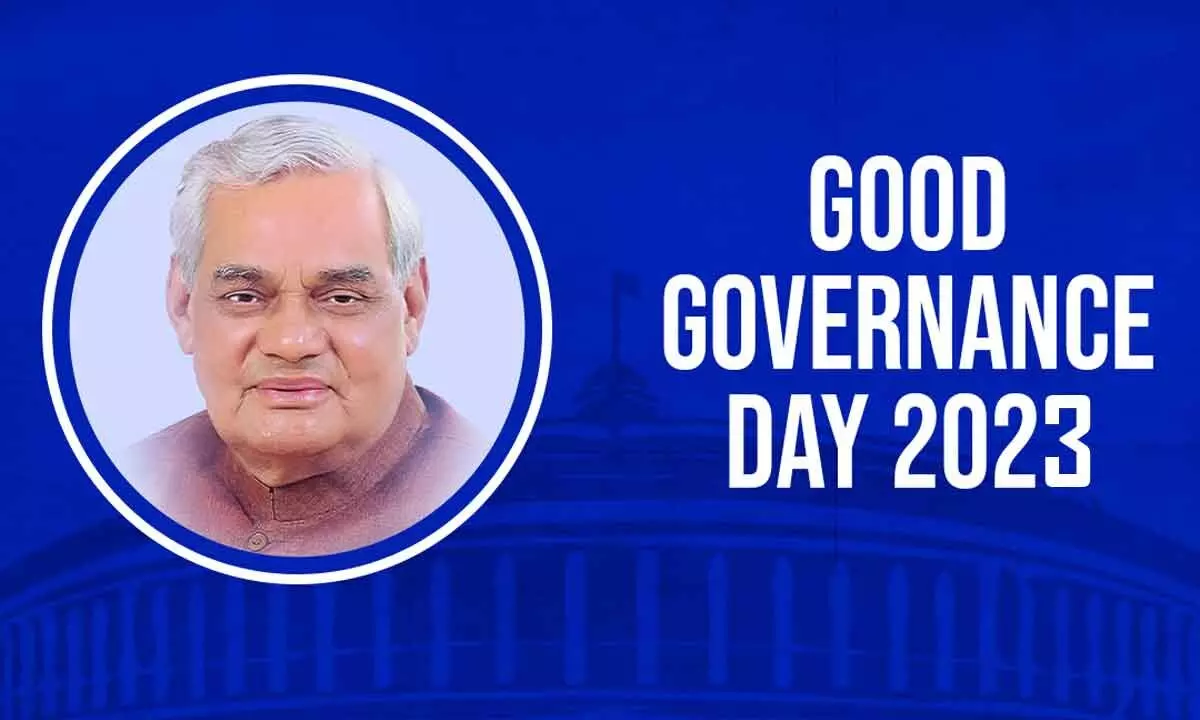
- 25 Dec 2023
Why is it in the News?
Good Governance Day 2023 is being celebrated today on the birth anniversary of former Prime Minister Atal Bihari Vajpayee, which falls on December 25th.
About Good Governance Day:
- December 25 marks the birth anniversary of the late Prime Minister and Bharatiya Janata Party leader, Atal Bihari Vajpayee.
- Origin: In 2014, the Prime Minister of India Narendra Modi declared December 25 as "Good Governance Day" to be celebrated nationwide.
Significance of Good Governance Day:
- Raising Governance Awareness: Good Governance Day aims to raise awareness among citizens regarding government accountability and efficient administration.
- Equitable Treatment of Citizens: This day emphasizes the fair and prompt delivery of various government services to ensure equitable treatment for the country's residents.
- Advancement of e-Governance: National Good Governance Day endeavors to advance "e-Governance" with the official event slogan being "Good Governance through e-Governance.
What is Good Governance?
- Governance encompasses the decision-making process and the subsequent implementation (or lack thereof) of those decisions.
- It manifests in various contexts, including corporate governance, international governance, national governance, and local governance.
- It is characterized as "the manner in which power is exercised in the management of a country's economic and social resources for development."
- This concept, rooted in historical perspectives, was elaborated by Chanakya in the Arthashastra.
- Foundation of Citizens Centric Administration: The cornerstone of a citizens-centric administration lies in the principles of good governance, emphasizing transparency, accountability, and equitable societal development.
8 Principles of Good Governance:
- Participation: Ensures the inclusion of diverse perspectives, including men, women, vulnerable sections, backward classes, minorities, etc.
- Upholds freedom of association and expression.
- Rule of Law: Impartial enforcement of the legal framework, particularly in human rights laws.
- A foundation for preventing the 'law of fish,' where the strong prevail over the weak.
- Consensus Oriented: Facilitates decision-making that aims for a common minimum acceptable to everyone, fostering a broad consensus.
- Mediates differing interests toward a mutually beneficial outcome.
- Equity and Inclusiveness: Strives for an equitable society, ensuring opportunities for all to enhance or maintain their well-being.
- Effectiveness and Efficiency: Focuses on processes and institutions that yield results meeting the community's needs.
- Maximizes the effective utilization of community resources for optimal output.
- Accountability: Demands accountability from governmental institutions, private sectors, and civil society organizations to the public and institutional stakeholders.
- Aims for governance that serves the betterment of the people.
- Transparency: Requires accessible, understandable, and monitored information.
- Advocates for a free media and public access to information.
- Responsiveness: Dictates that institutions and processes serve all stakeholders within a reasonable timeframe.
What is the Significance of Good Governance?
- Safeguarding Public Interests: The implementation of good governance practices is crucial for safeguarding the interests of the public.
- Optimal Resource Utilization: Good governance empowers organizations to maximize the efficient utilization of available resources, facilitating the delivery of high-quality services.
- Ensuring Checks and Balances: Through good governance practices, mechanisms are established to prevent the undue exercise of power and authority, maintaining a system of checks and balances.
- Facilitating Public Engagement: The active involvement of the public in the governance process becomes achievable when good governance practices are firmly in place.
What are the Challenges to Good Governance in India?
- Corruption: The pervasive level of corruption in India is widely recognized as a substantial impediment to enhancing the quality of governance.
- Empowerment of Women: The inadequate representation of women in government institutions and related sectors poses a significant challenge to achieving gender equality.
- Delayed Justice: Ensuring timely justice for citizens is a fundamental right, but numerous factors, such as a shortage of personnel and logistical resources within the legal system, contribute to delayed justice.
- Criminalization of Politics: The intertwining of the political process with criminal elements and the collaboration between politicians, civil servants, and business entities negatively impact public policy formulation and governance.
- Centralization of Administrative System: Efficient functioning of lower-level governments, particularly Panchayati Raj Institutions (PRIs), depends on adequate empowerment.
- The existing challenges involve insufficient devolution of funds and personnel to carry out constitutionally assigned functions.
What are the Initiatives for Enhancing Good Governance in India?
- National e-Governance Plan: With a vision to make government services easily accessible to the common man, the National e-Governance Plan aims to ensure efficiency, transparency, and reliability of services at affordable costs.
- The plan focuses on meeting the basic needs of the public through widespread service delivery outlets.
- Good Governance Index (GGI): Launched by the Ministry of Personnel, Public Grievances & Pensions, GGI serves as a comprehensive tool to evaluate the state of governance in the country.
- It systematically analyzes the impact of various interventions initiated by State Governments and Union Territories.
- Right to Information Act, 2005: This crucial legislation plays a pivotal role in fostering transparency within governance by granting citizens the right to access information.
- The Right to Information Act, 2005, empowers individuals to seek and receive information, contributing to a more transparent and accountable system.
About Atal Bihari Vajpayee
- Atal Bihari Vajpayee, the 10th Prime Minister of India, distinguished himself not only as a statesman but also as a revered poet and literary figure.
- His association with the Rashtriya Swayamsevak Sangh (RSS), the ideological precursor of the BJP, further shaped his political journey.
- Early Life: Born on December 25, 1924, in Gwalior, Madhya Pradesh, Vajpayee joined the RSS in 1939, transitioning into a full-time role in 1947.
- His literary prowess led him to collaborate with Deen Dayal Upadhyaya on various publications, marking the beginning of his impactful career.
- Political Ascension: Vajpayee assumed the role of national president of the Jana Sangh in 1968 following Deen Dayal Upadhyaya's demise.
- His political journey commenced with his election to the Lok Sabha from the Balrampur seat in the 1957 general election, where his eloquence positioned him as a defender of Jana Sangh's policies.
- Key Political Milestones: Post-emergency, Vajpayee played a vital role in the formation of the Janata Party, securing victory in the 1977 general elections and subsequently serving as the External Affairs Minister.
- The transformation of Jana Sangh into the Bharatiya Janata Party (BJP) in 1980 marked a significant phase under his leadership, with the party gaining electoral prominence.
- Political Tenures: Vajpayee's political career saw him elected ten times to the Lok Sabha and twice to the Rajya Sabha, representing constituencies such as Balrampur, New Delhi, Gwalior, and Lucknow.
- His administrative journey commenced as the External Affairs Minister in 1975, with commendation for his UN General Assembly speech in Hindi.
- Prime Ministerial Stints: Vajpayee served as the Prime Minister of India in three distinct tenures:
- A brief 13-day term in 1996
- 13-month period from 1998 to 1999, and
- A full term from 1999 to 2004.
- Notable Achievements: Vajpayee's administration left an indelible mark with achievements such as the Pokhran Nuclear Test, success in the Kargil War, the implementation of the Golden Quadrilateral project, the Pradhan Mantri Gramin Sadak Yojana, and the Sarva Siksha Abhiyaan.
- Diplomatic Outreach: Vajpayee's diplomatic efforts included a groundbreaking bus journey to Lahore to meet with Pakistani Prime Minister Nawaz Sharif, signaling a commitment to improving relations.
- Honors and Recognition: Atal Bihari Vajpayee was bestowed with prestigious honors, including the Bharat Ratna in 2015, recognition for his role in the Bangladesh Liberation War, and the Order of Ouissam Alaouite from Morocco.
- Additionally, the Government of India designated his birth anniversary as Good Governance Day in 2014.
WHO prequalifies a second malaria vaccine, a significant milestone in preventing the disease (WHO)
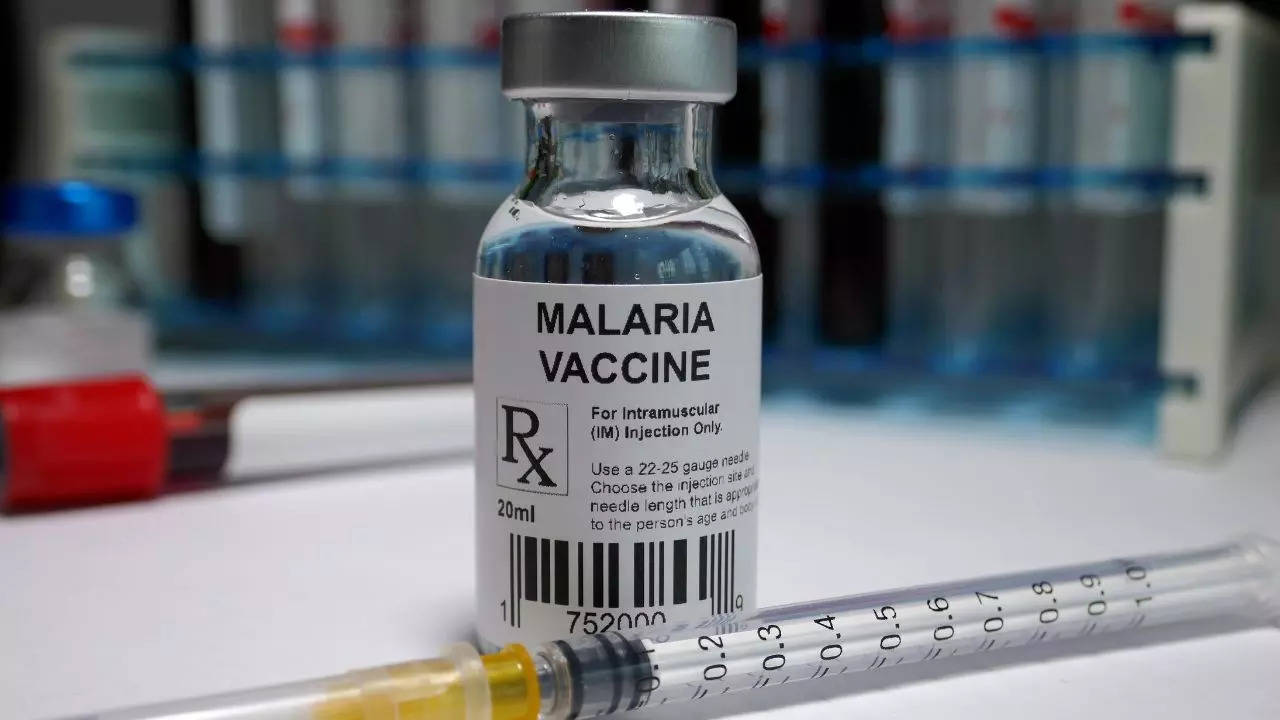
- 22 Dec 2023
Why is it in the News?
The World Health Organization (WHO) on Thursday added the R21/Matrix-M malaria vaccine, developed by Oxford University and manufactured by Serum Institute of India, to its list of prequalified vaccines.
News Summary:
- The R21/Matrix-M malaria vaccine, developed by Oxford University and produced by the Serum Institute of India, has received prequalification from the World Health Organization (WHO), marking a significant step in global efforts to combat malaria.
- This achievement follows the prequalification of the RTS, S/AS01 vaccine in July 2022, making R21 the second malaria vaccine to gain the WHO's approval.
- Prequalification means larger access to vaccines as a key tool to prevent malaria in children.
- The WHO employs rigorous international standards during the prequalification process, conducting a comprehensive evaluation to ensure the safety, efficacy, and adherence to global manufacturing standards of the vaccines.
- Ongoing measures, such as regular re-evaluation, site inspections, and targeted testing, are implemented to uphold prequalified vaccines’ continued safety and effectiveness.
What is a Prequalified Vaccine?
- The World Health Organization (WHO) defines a prequalified vaccine as one that has successfully completed a comprehensive three-step process prior to approval.
- Thorough Data Evaluation: The first step involves a meticulous examination of relevant data associated with the vaccine.
- Sample Testing: The second step includes rigorous testing of vaccine samples.
- Manufacturing Site Inspection: The final step encompasses an inspection of the pertinent manufacturing sites by WHO.
- Only when the outcomes of these steps are positive does the vaccine earn inclusion in the WHO list of Prequalified Vaccines?
What is Malaria?
- Malaria is an infectious disease caused by the Plasmodium parasite, transmitted to humans through the bites of infected female Anopheles mosquitoes, which are active mainly during the night.
- While there are numerous types of Plasmodium parasites, only five affect humans and cause malaria.
- Plasmodium falciparum: Predominantly found in Africa, it is the most common and lethal malaria parasite globally, responsible for the majority of malaria-related deaths.
- Plasmodium vivax: Primarily found in Asia and South America, this parasite causes milder symptoms than Plasmodium falciparum but can persist in the liver for up to three years, leading to potential relapses.
- Plasmodium ovale: Relatively uncommon and typically found in West Africa, this parasite can remain dormant in the liver for several years without causing symptoms.
- Plasmodium malariae: Rare and primarily found in Africa.
- Plasmodium knowlesi: Extremely rare and identified in certain parts of Southeast Asia.
Malaria Transmission:
- Upon being bitten by an infected mosquito, the Plasmodium parasite enters the bloodstream, travels to the liver, and matures.
- It then re-enters the bloodstream, invading red blood cells where it undergoes multiplication.
- Periodically, infected blood cells burst, releasing more parasites into the bloodstream.
- While mosquitoes can become infected by biting an already infected person, malaria does not spread directly from person to person.
Symptoms of Malaria:
- The signs and symptoms of malaria encompass fever, chills, general discomfort, headache, nausea, vomiting, diarrhoea, abdominal pain, muscle or joint pain, fatigue, rapid breathing, rapid heart rate, and cough.
- Recognizing these symptoms is crucial for prompt diagnosis and treatment.
What is the Status of Malaria in India?
- Given its predominantly tropical climate, a significant portion of India has a historical prevalence of malaria, and the country holds the distinction of being where Nobel Prize winner Sir Ronald Ross discovered the malaria parasite cycle involving Anopheles mosquitoes as the definitive host.
- While India has made substantial progress in the direction of malaria elimination, there remains a considerable journey ahead.
- According to the World Malaria Report 2023, India contributed to 66% of malaria cases within the World Health Organization’s South-East Asia region in 2022.
- Additionally, India and Indonesia jointly accounted for approximately 94% of all malaria-related deaths in the region last year.
- The report highlighted that nearly 46% of all cases in the region were attributed to Plasmodium vivax, a protozoal parasite and human pathogen.
What are the Challenges in Malaria Elimination?
- Eliminating malaria in India faces several challenges, primarily stemming from the predominant engagement of the private sector in diagnosing and treating the disease.
- This sector often encounters issues related to misdiagnosis and mistreatment.
Key challenges include:
- Limited Regulation in the Private Sector: Private doctors and clinics operate without an obligation to adhere to government guidelines, utilize recommended drugs, or report malaria cases to state authorities.
- Disproportionate Malaria Treatments in the Private Sector: In 2015, a substantial 86 million malaria treatments were procured in the private sector, in stark contrast to the meagre 2 million in the public sector.
- Proliferation of Artemisinin Monotherapy: The private sector annually acquires nearly 10 million injections of Artemisinin Monotherapy, a treatment strongly discouraged in India and globally due to its role in accelerating the development of lethal drug resistance.
- Irony of Drug Misuse: Remarkably, India, the largest supplier of high-quality approved malaria drugs globally, grapples with the ironic misuse of malaria drugs within its own borders.
Challenges in Creating a Malaria Vaccine:
The progress toward developing a malaria vaccine encounters various impediments:
- Absence of a Conventional Market: The absence of a conventional market poses a significant hindrance to the development of a malaria vaccine.
- Limited Developer Engagement: The involvement of only a few developers further complicates the landscape for malaria vaccine development.
- Technical Complexity: The technical intricacies associated with creating a vaccine against a parasitic infection, such as malaria, present substantial challenges.
- Complexity of Malaria Parasites' Life Cycle: Malaria parasites exhibit a complex life cycle, and there exists a limited understanding of the intricate immune response to malaria infection.
- Genetic Complexity of Malaria Parasites: The genetic complexity of malaria parasites, generating thousands of potential antigens, adds an additional layer of difficulty to the development of an effective vaccine.
Initiatives Taken by India for Malaria Eradication:
- Since 2000, India has successfully reduced malaria cases by more than half and malaria-related deaths by over 66%.
- In 2016, the country introduced its inaugural National Framework for Malaria Elimination (2016-2030), outlining a vision for a malaria-free nation by 2027 with complete elimination targeted by 2030.
- In 2019, the Government of India demonstrated its commitment by increasing funding for the National Vector Borne Disease Control Programme by over 25%.
- Furthermore, India augmented its support as a donor to the Global Fund to Fight AIDS, Tuberculosis, and Malaria, reaffirming its dedication to combating these vector-borne diseases on a global scale.
